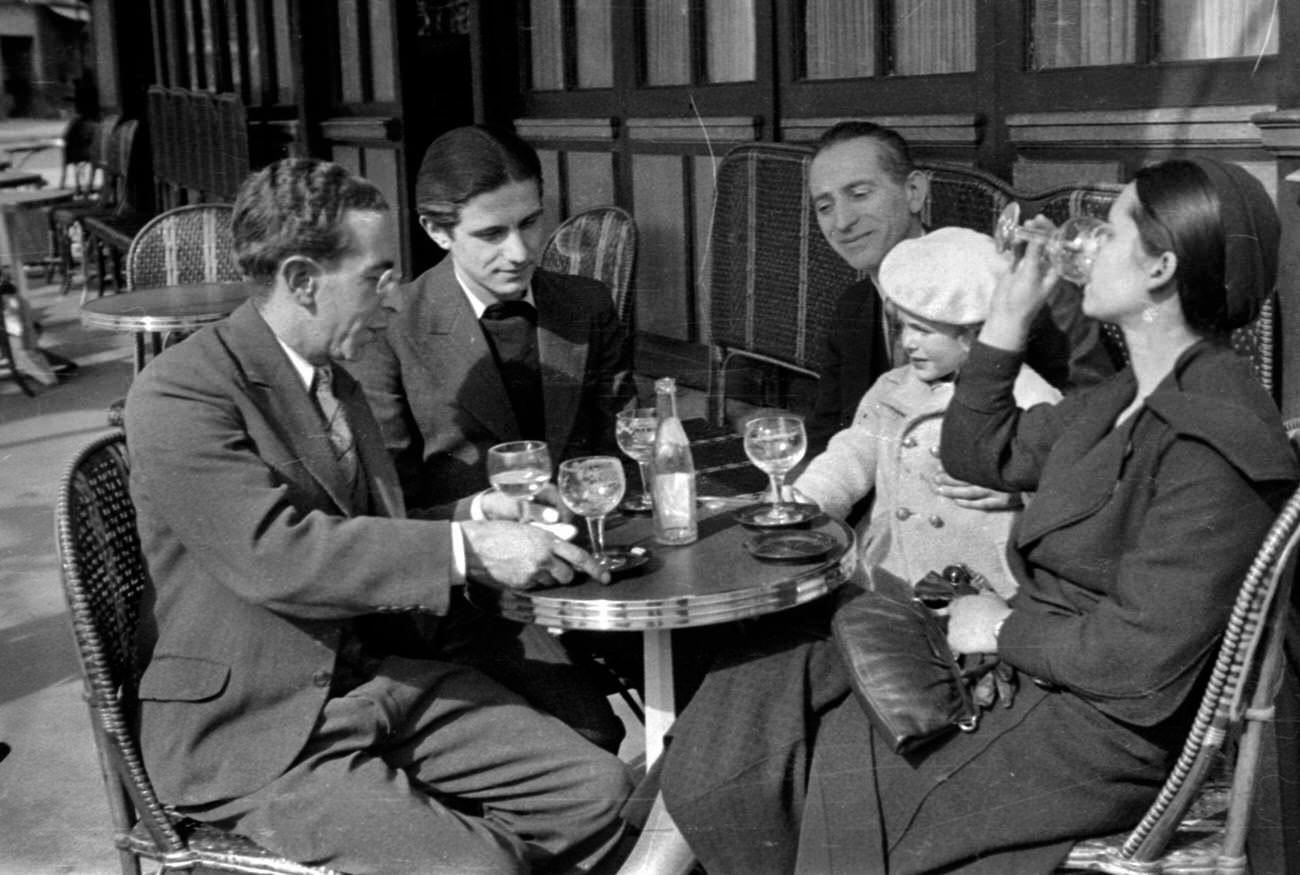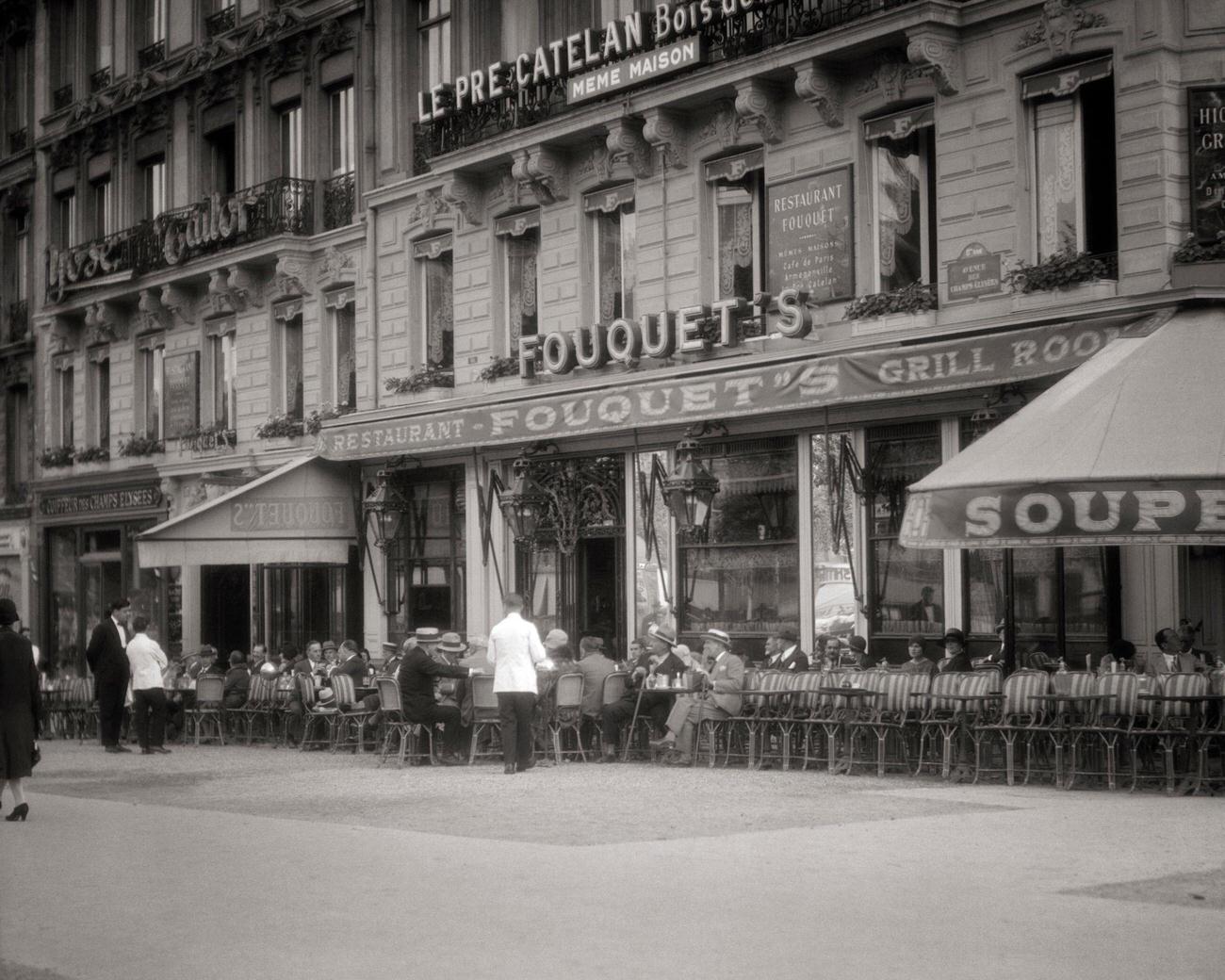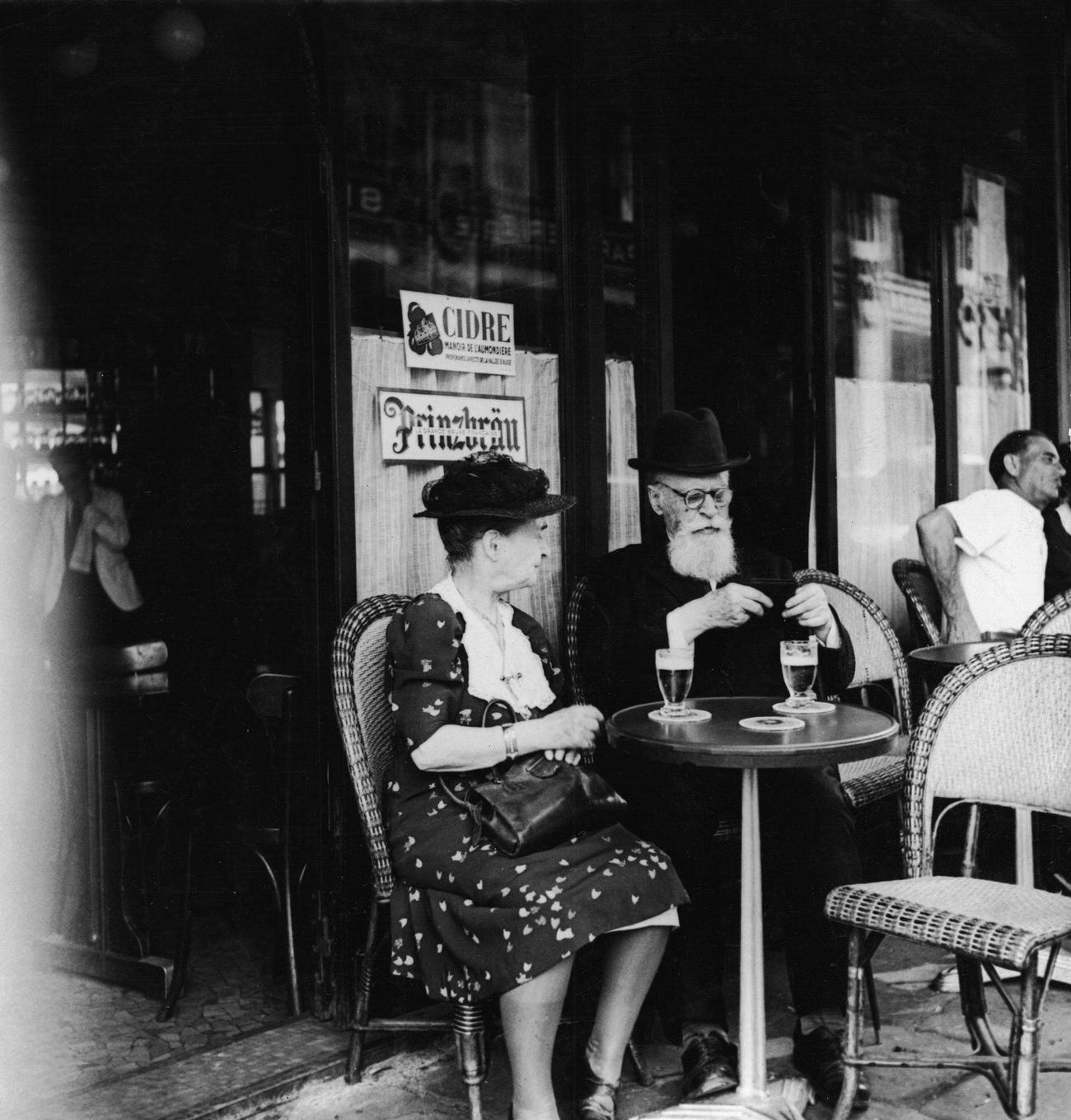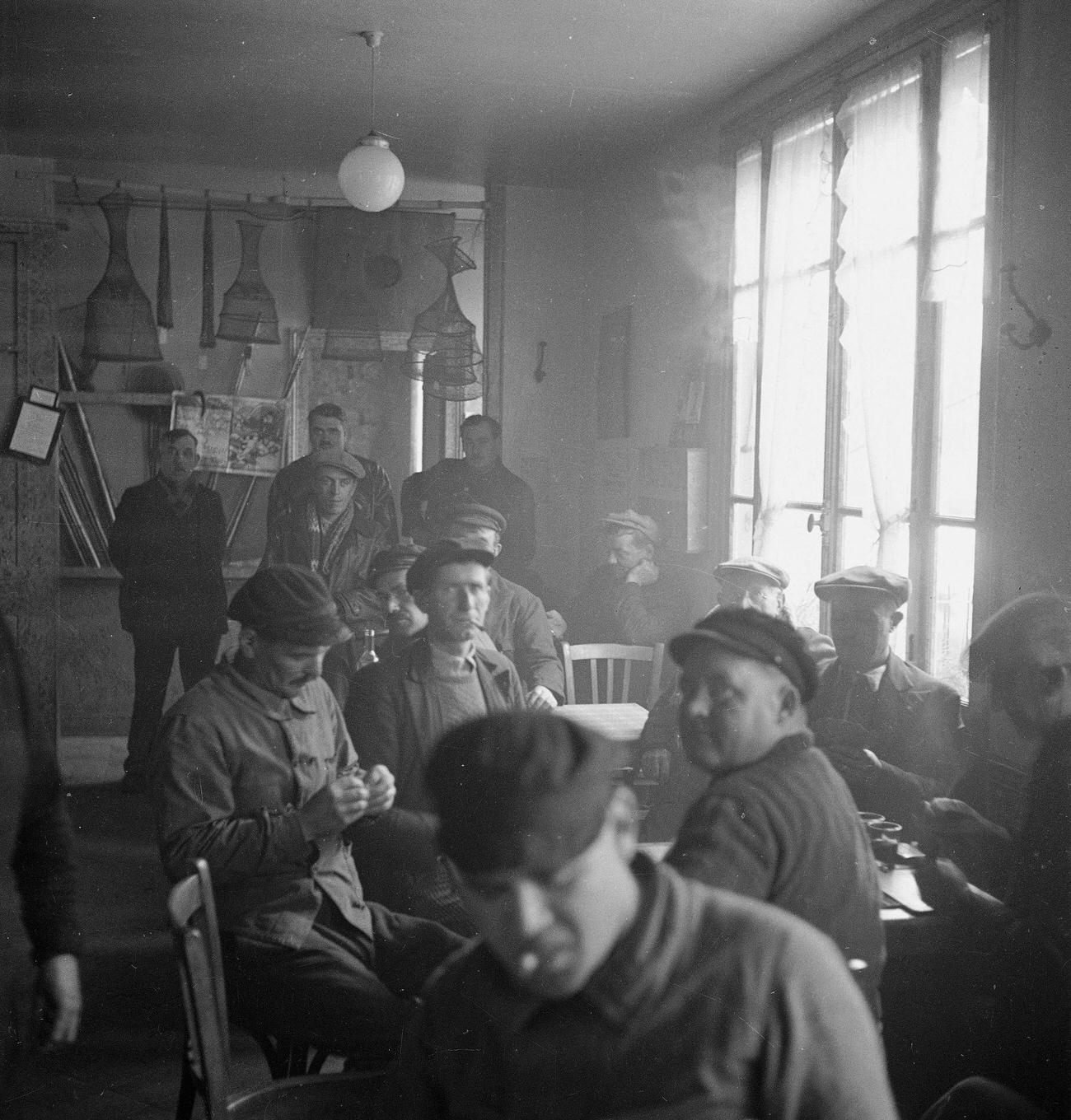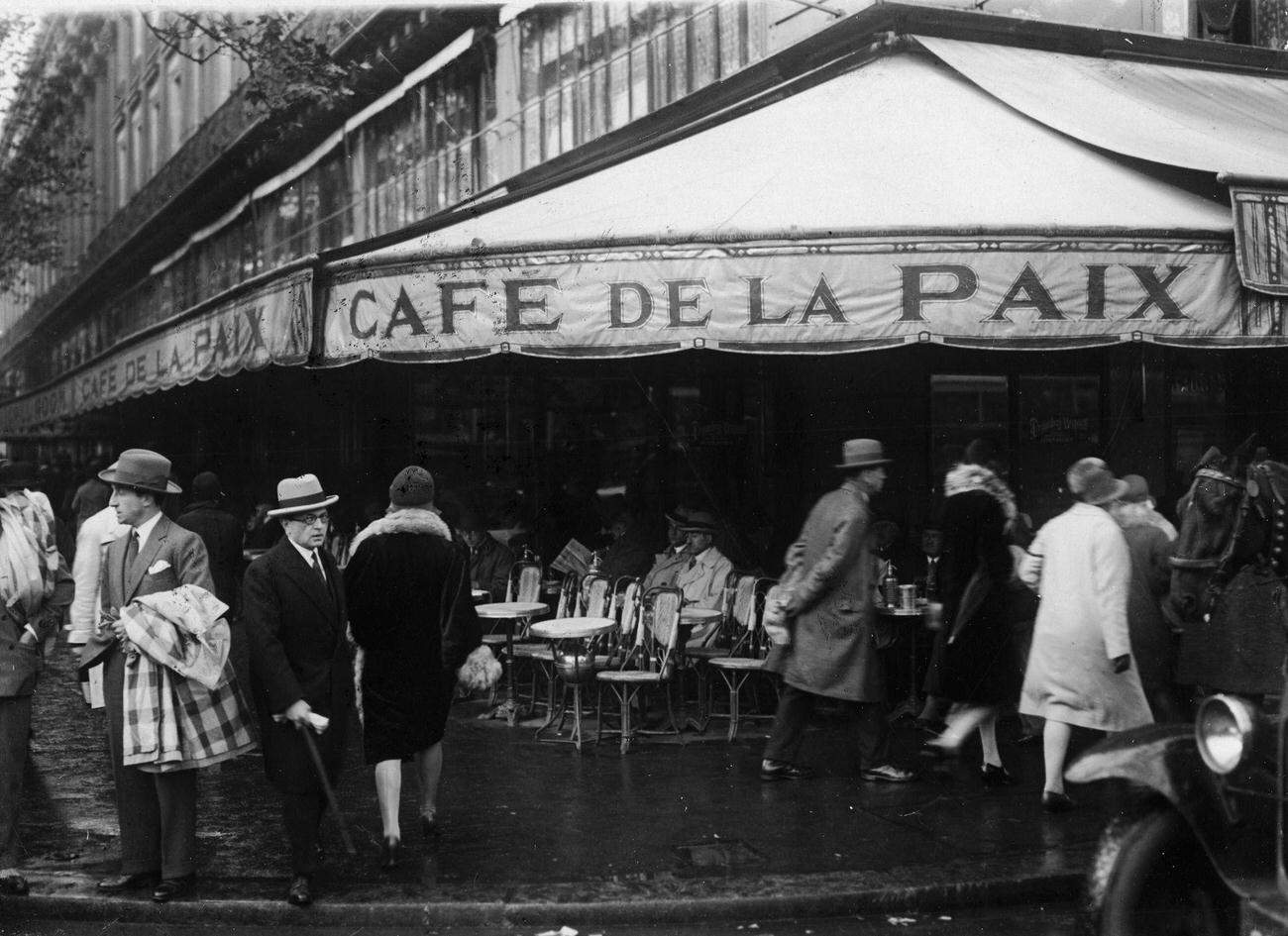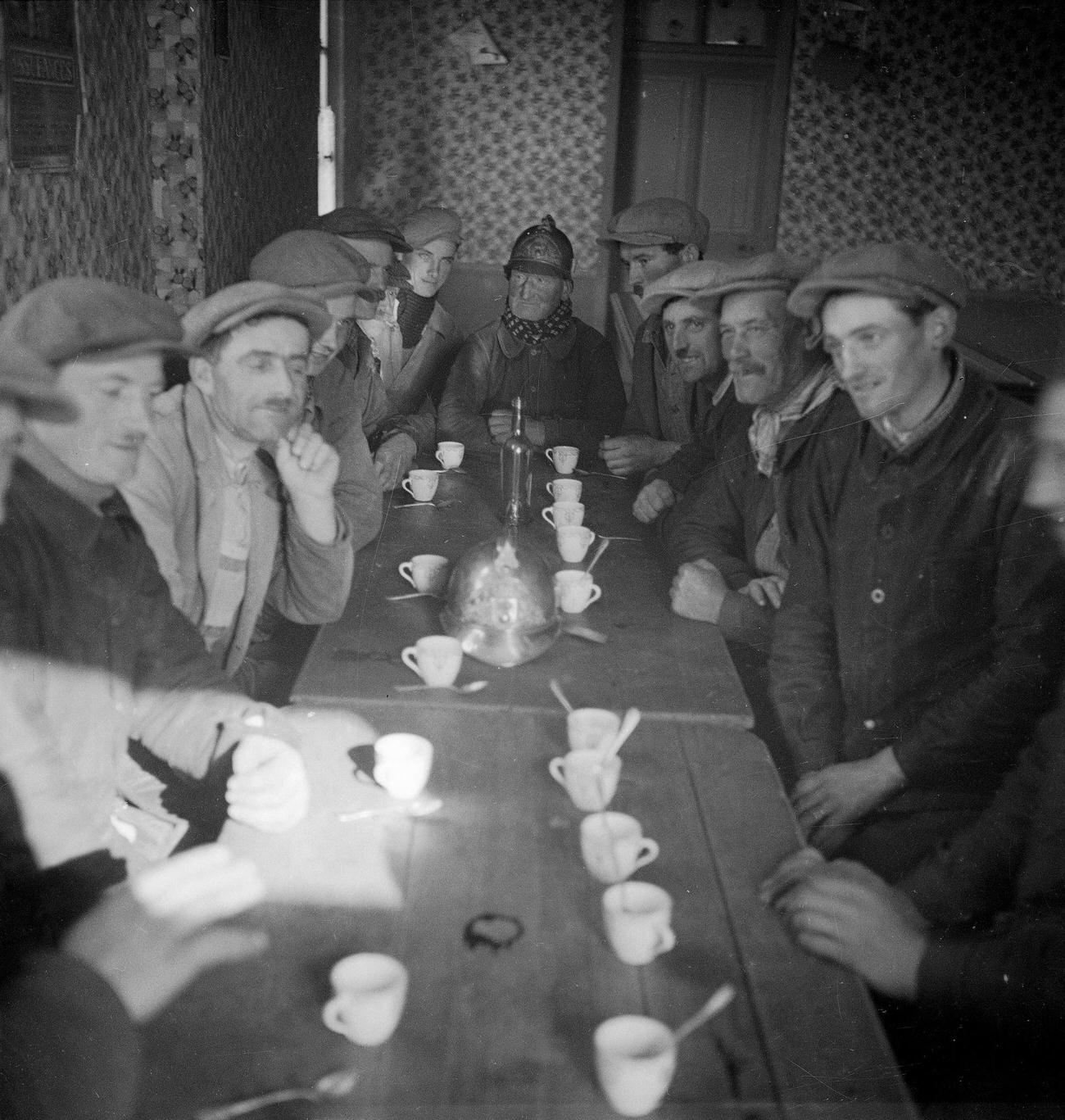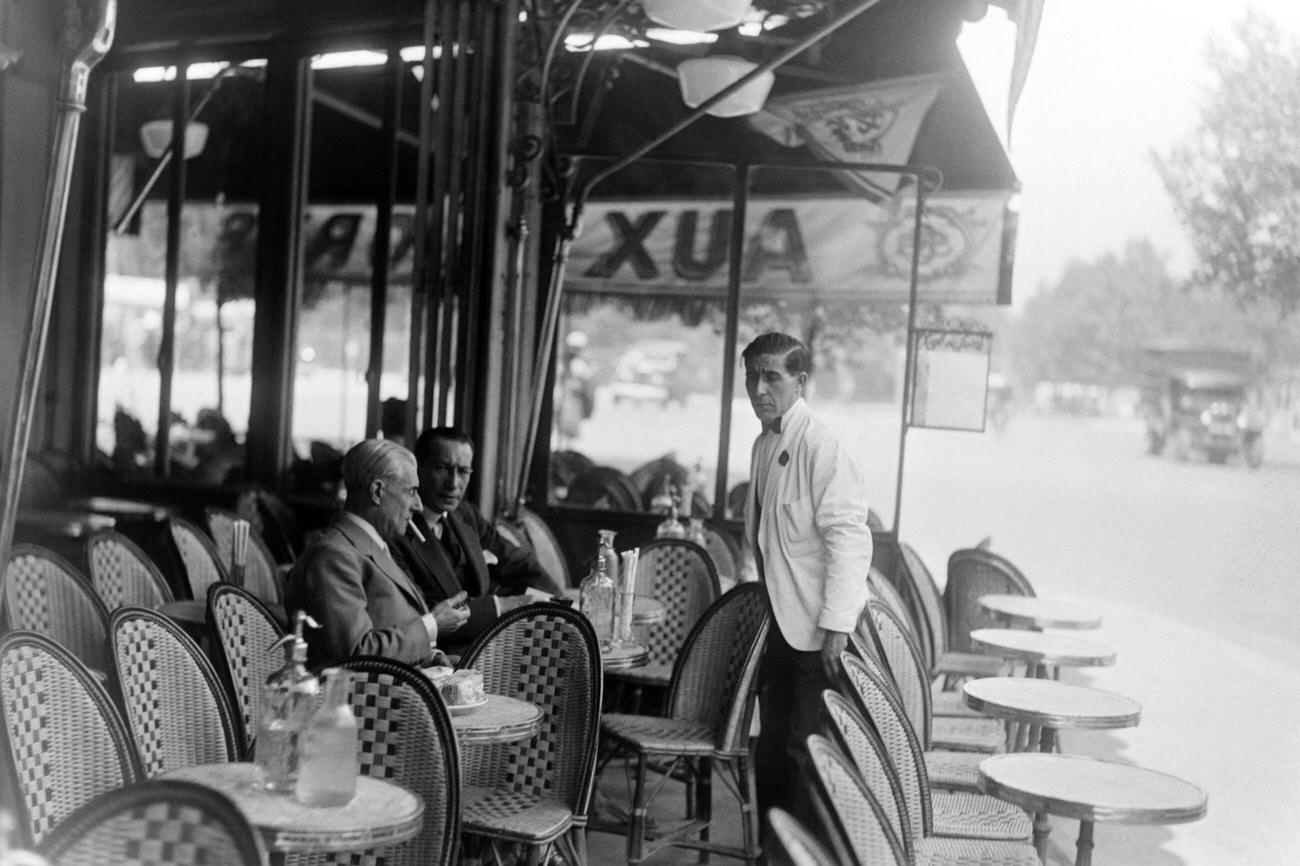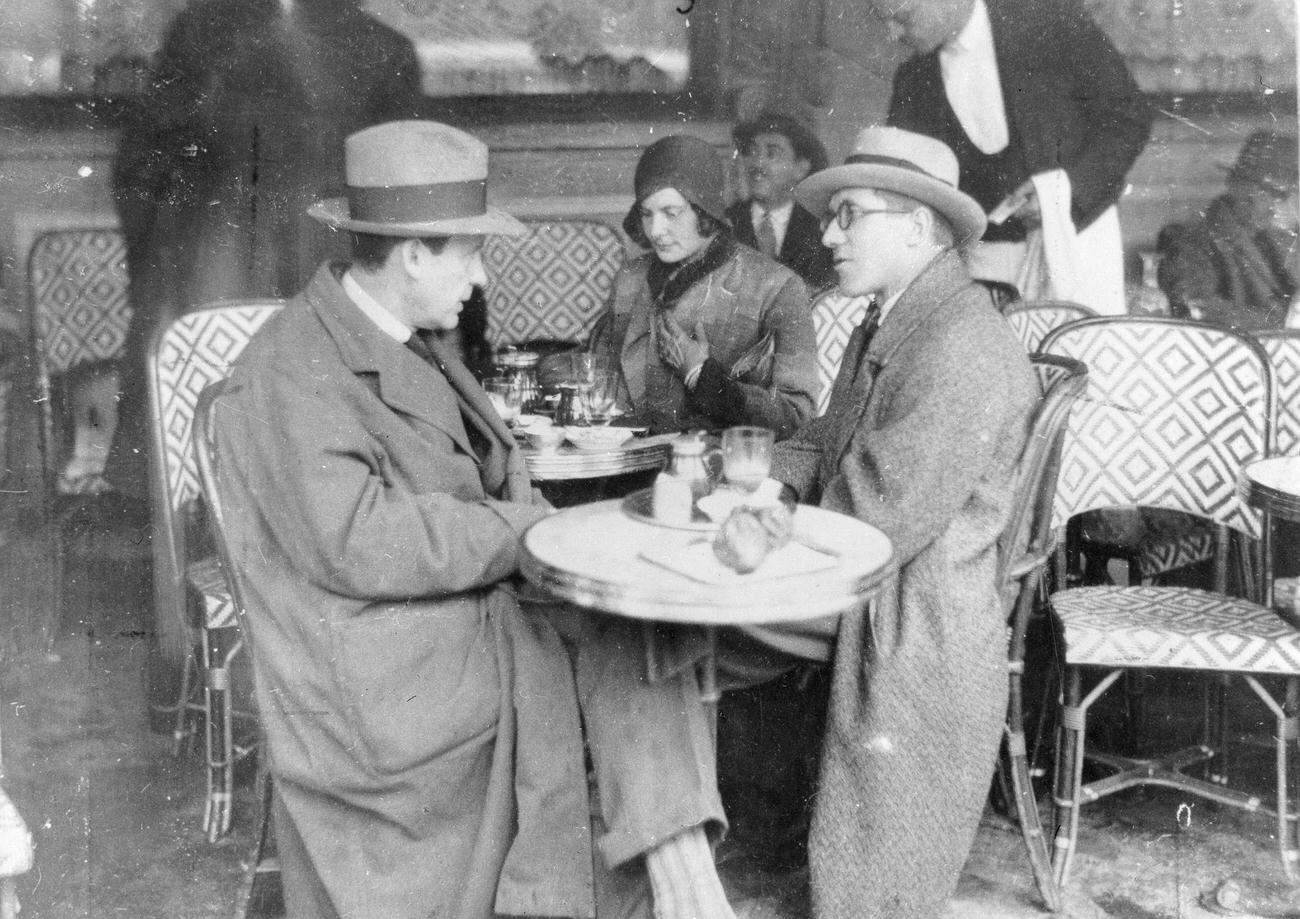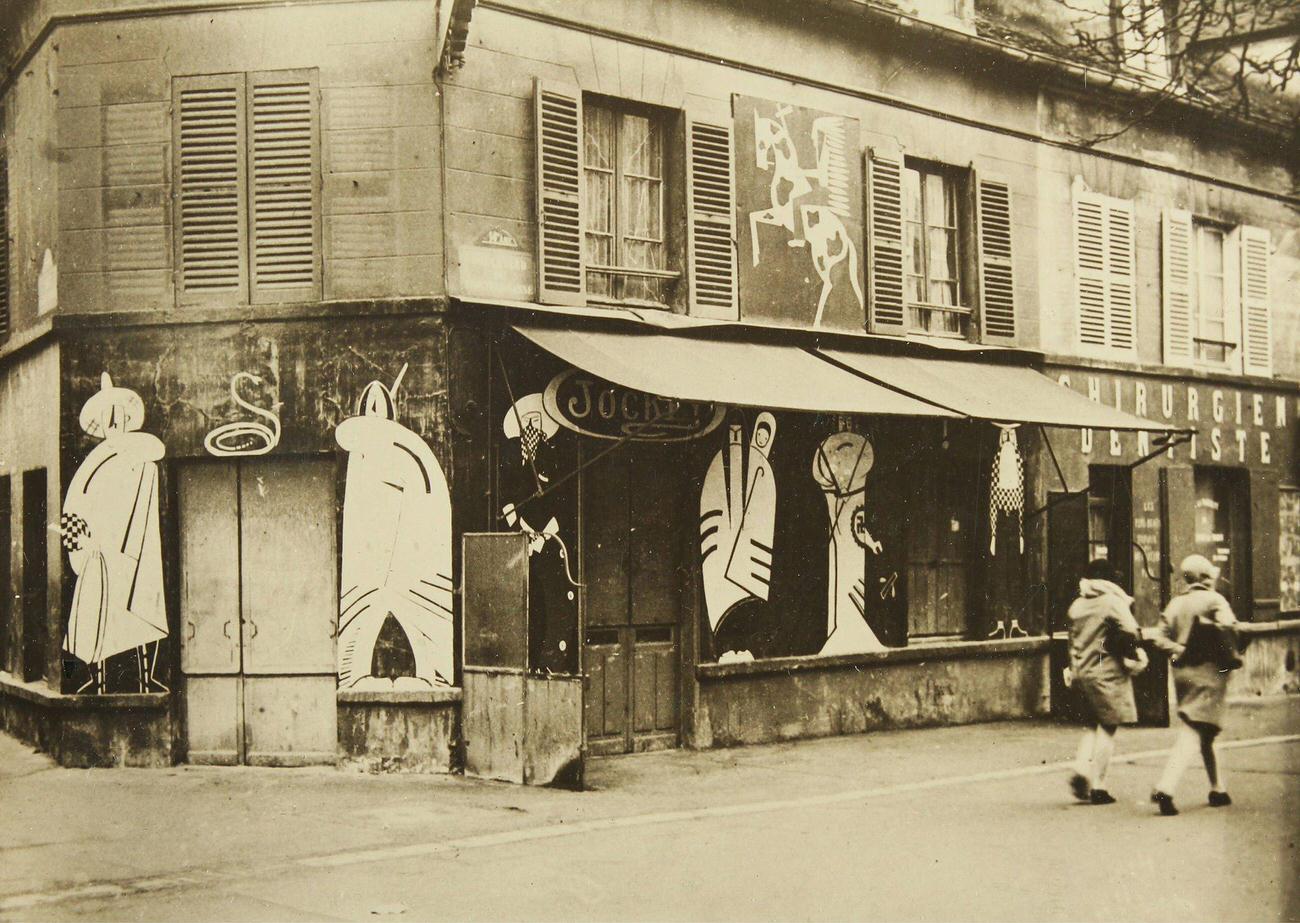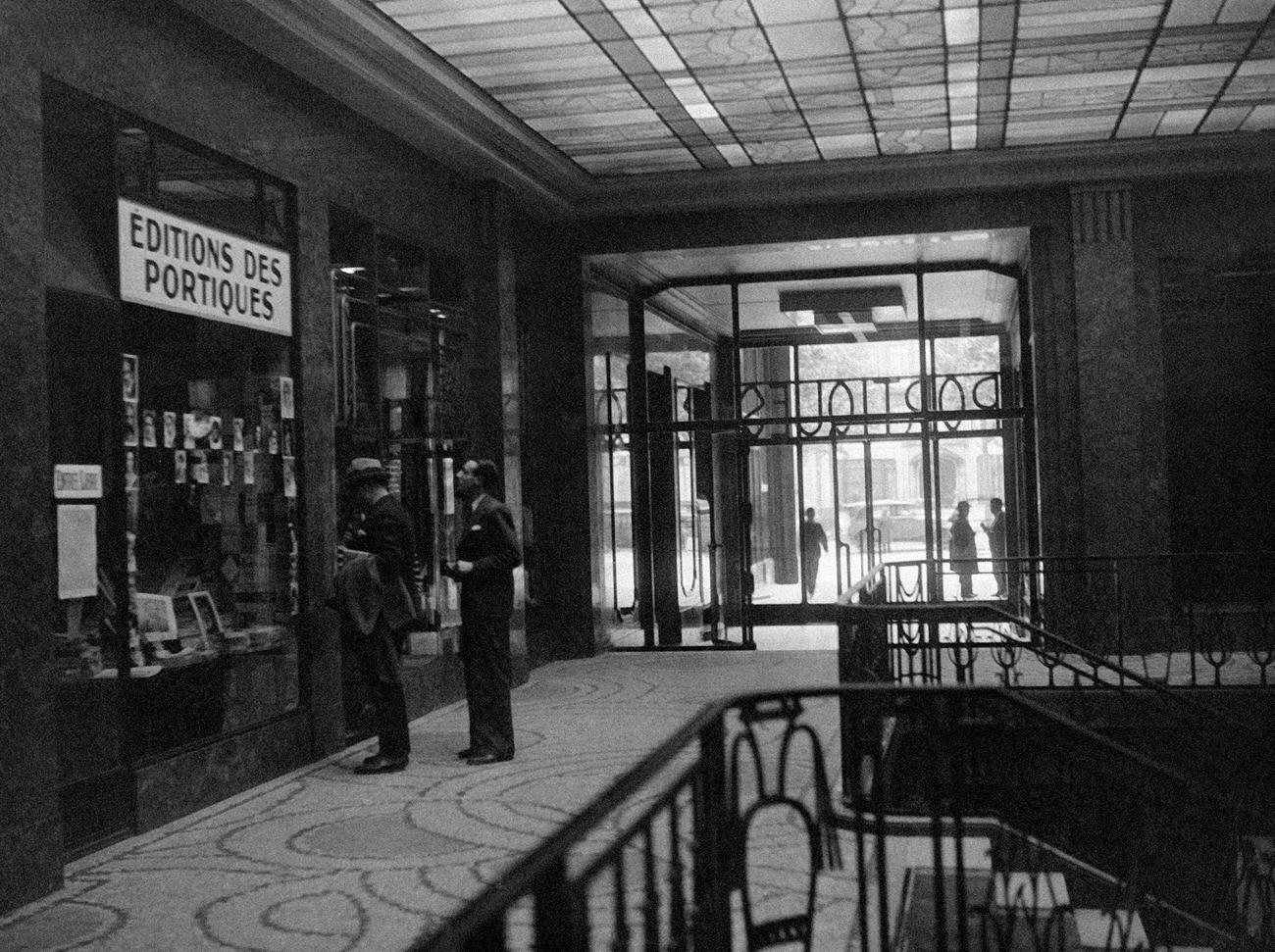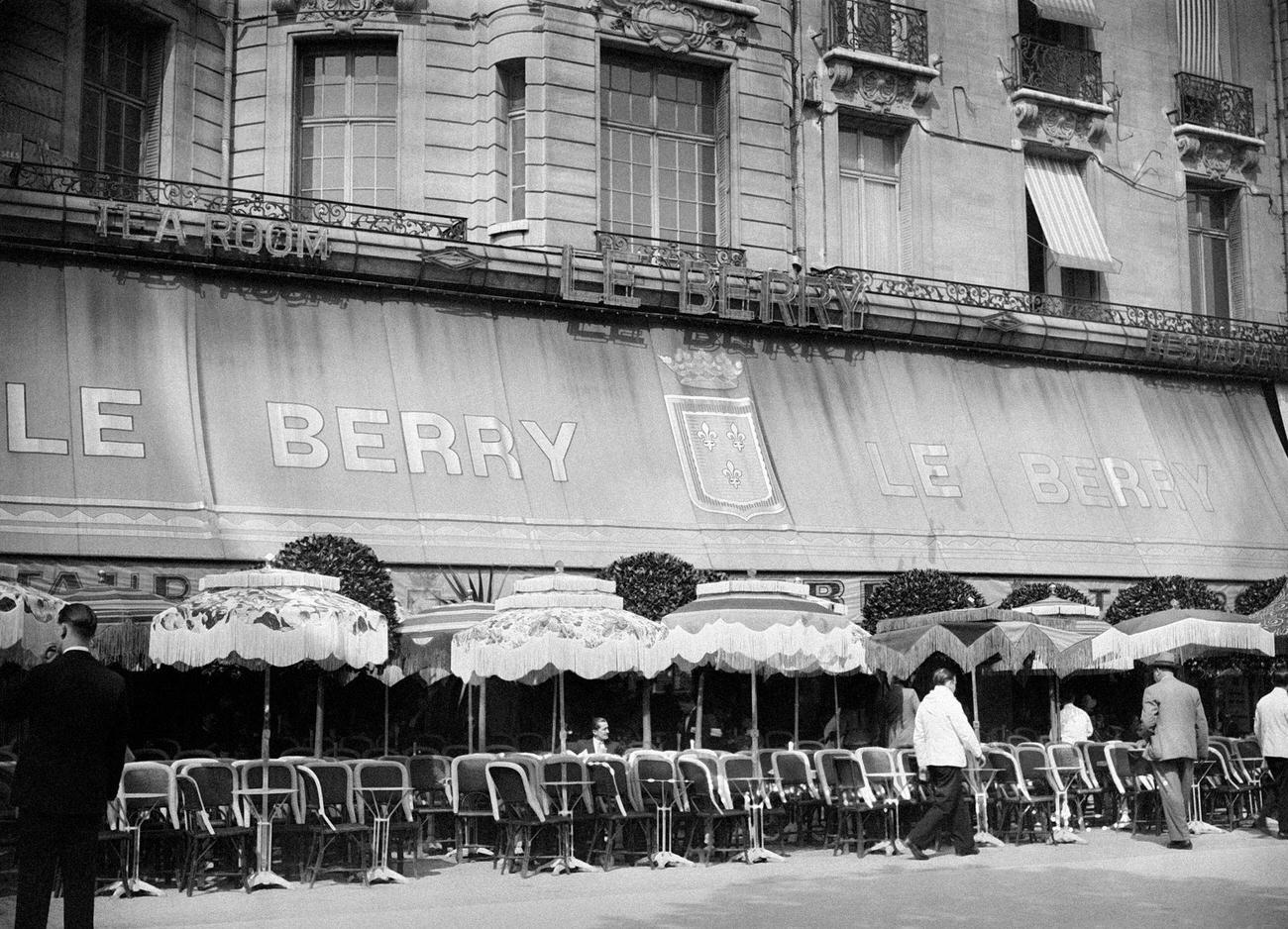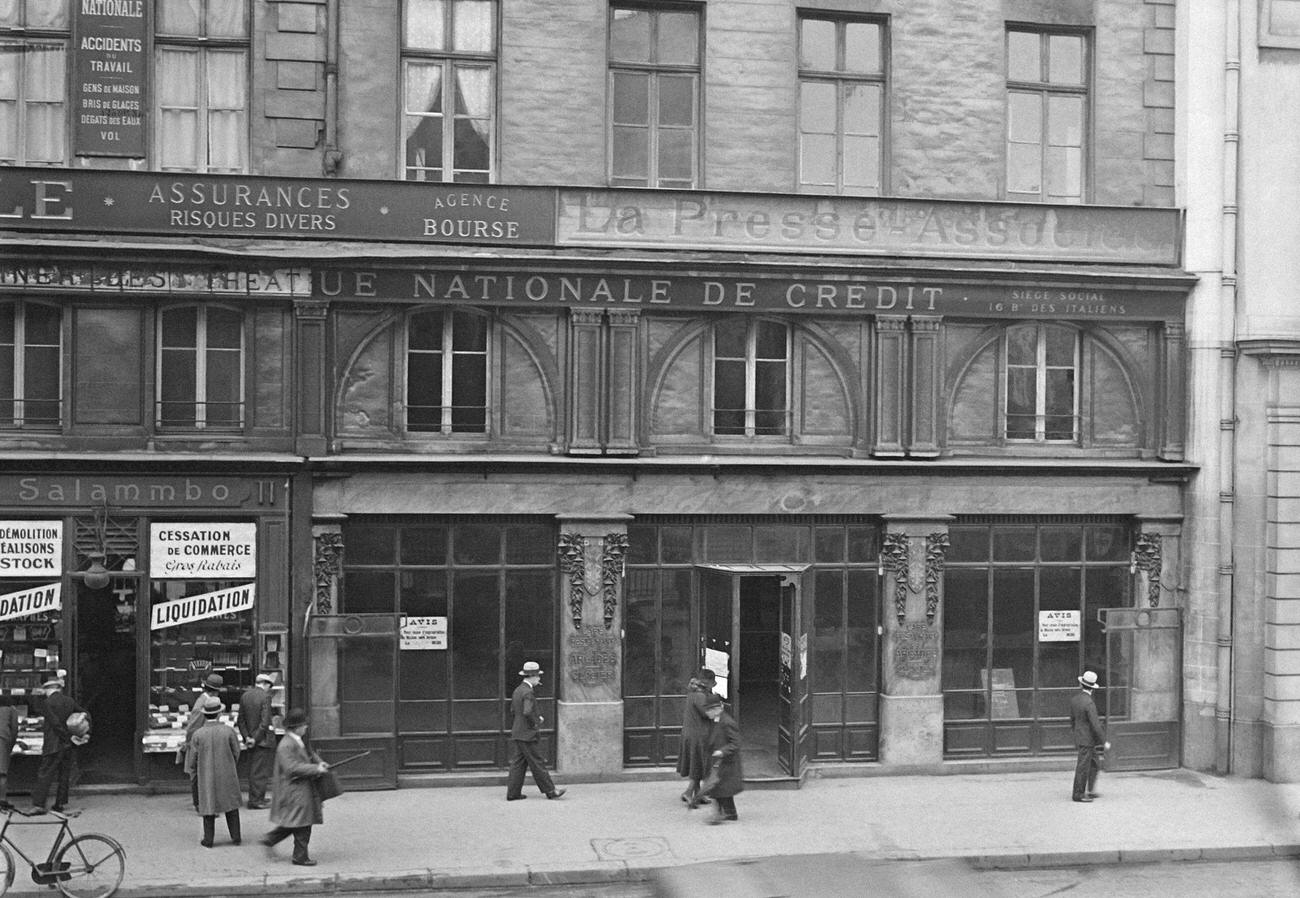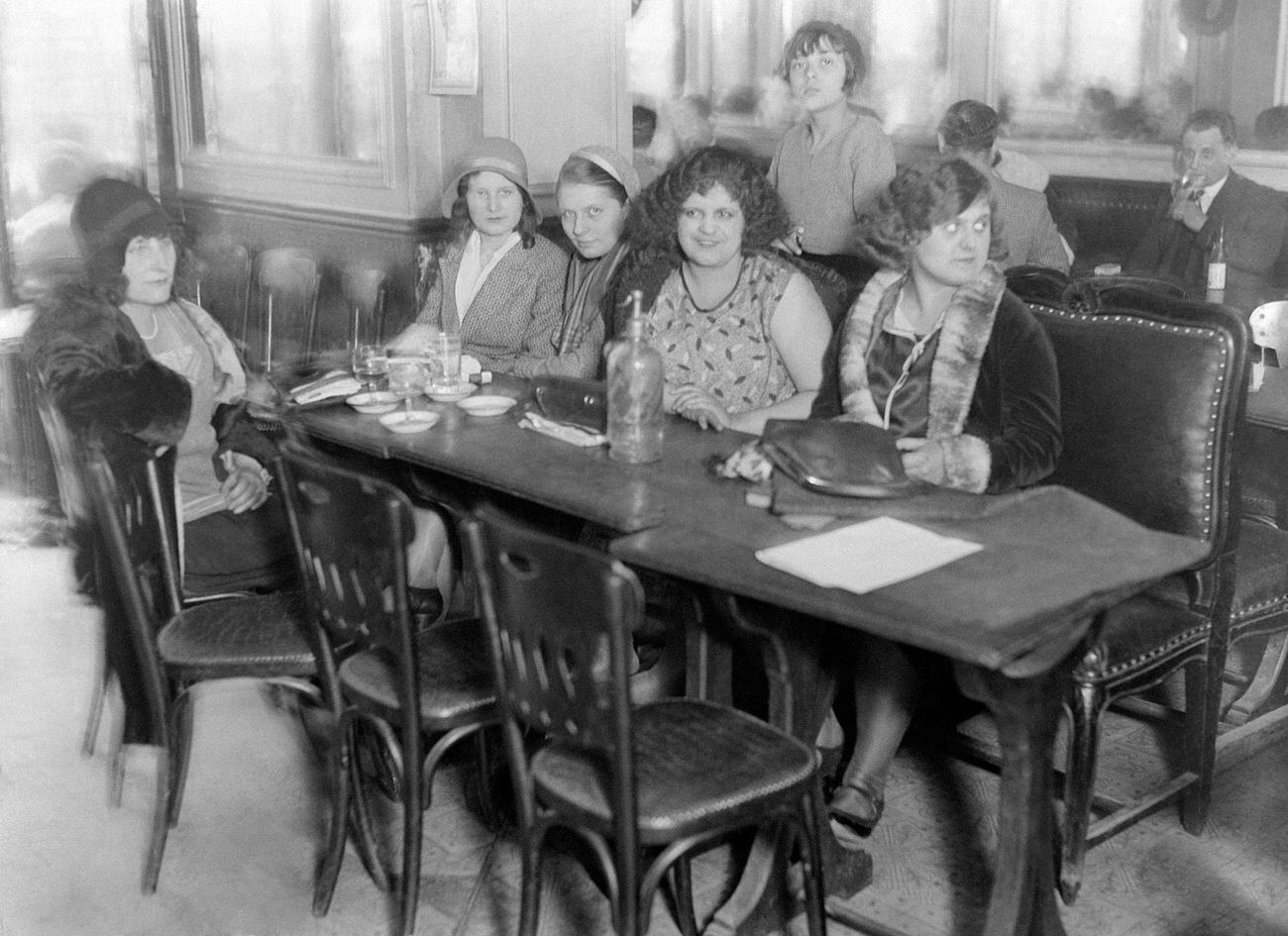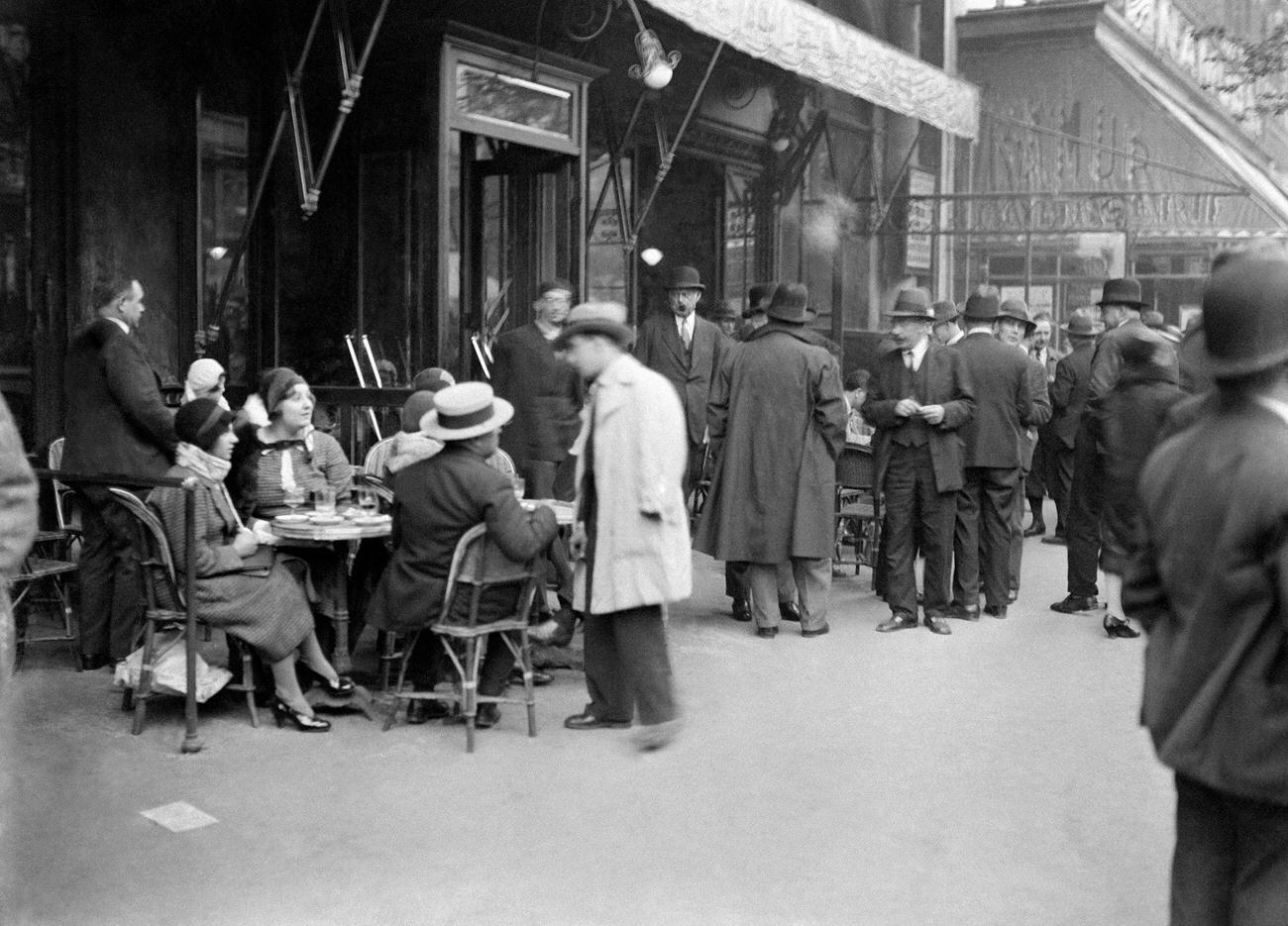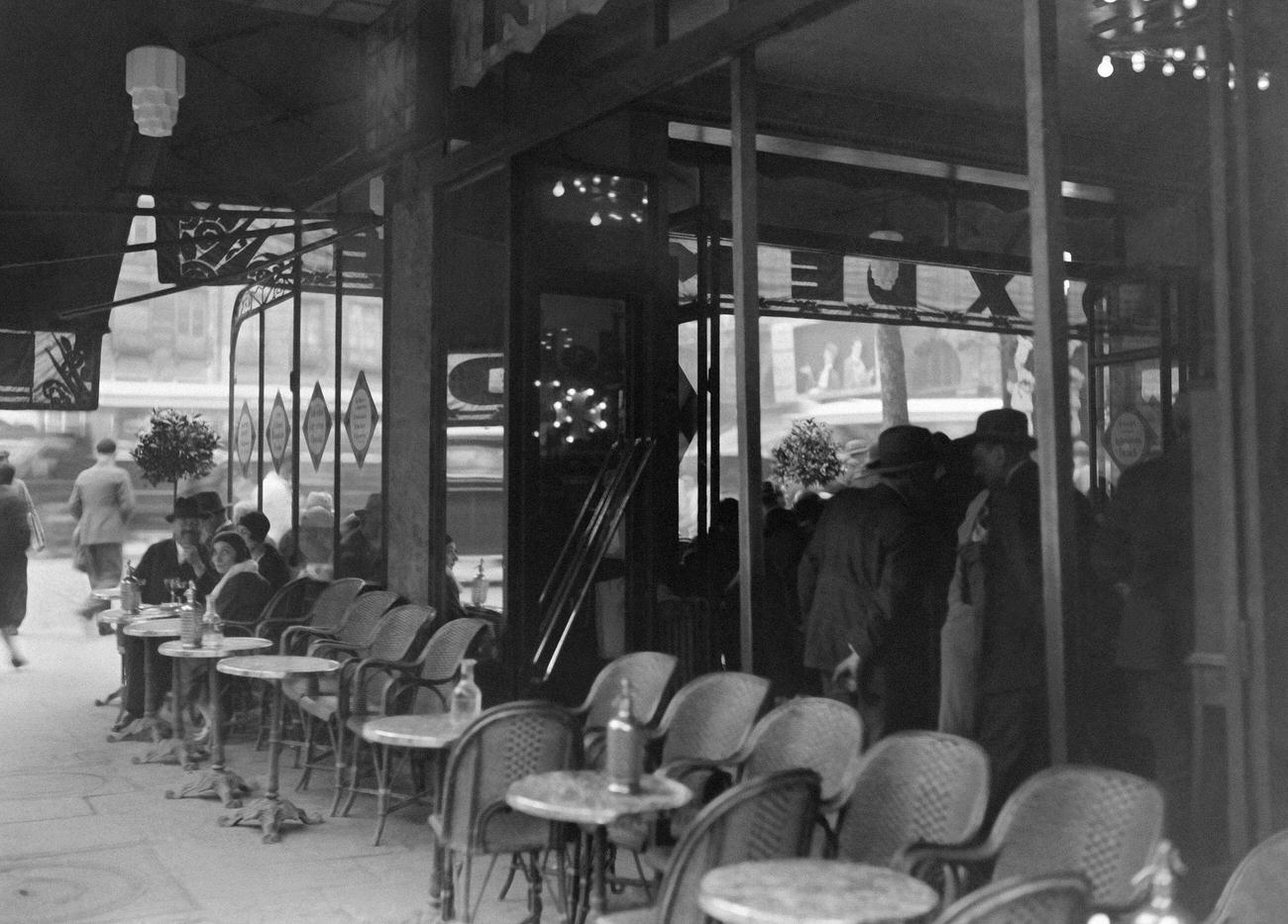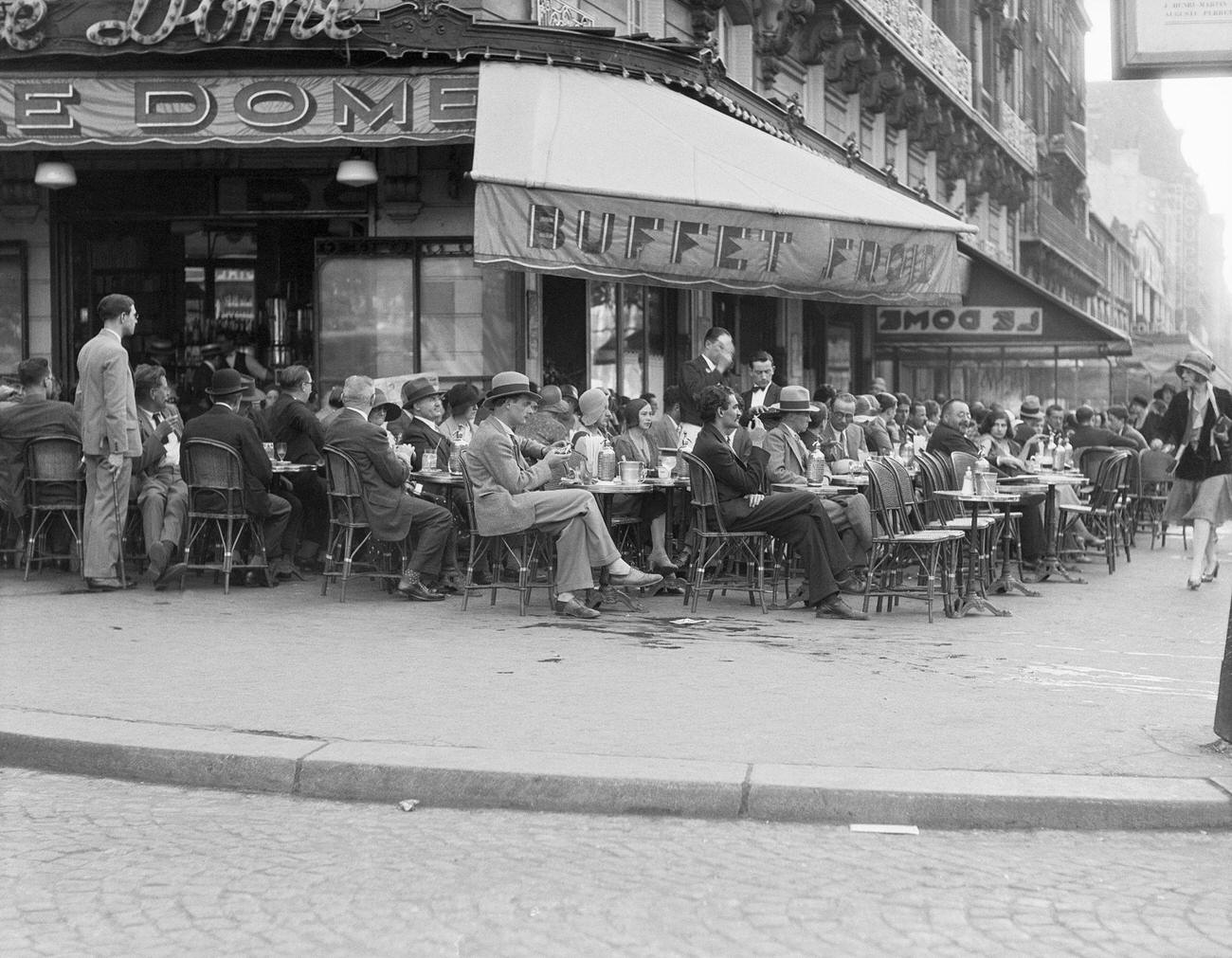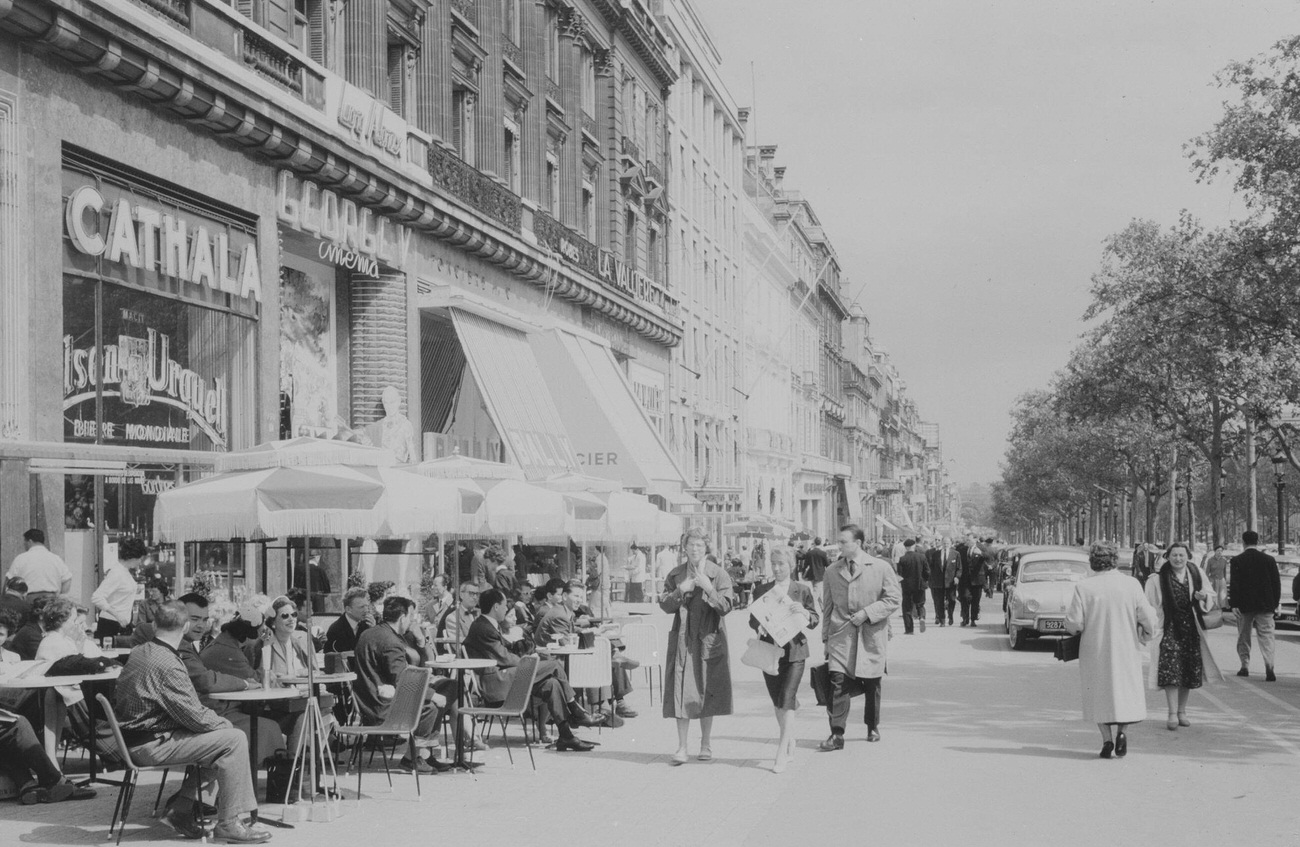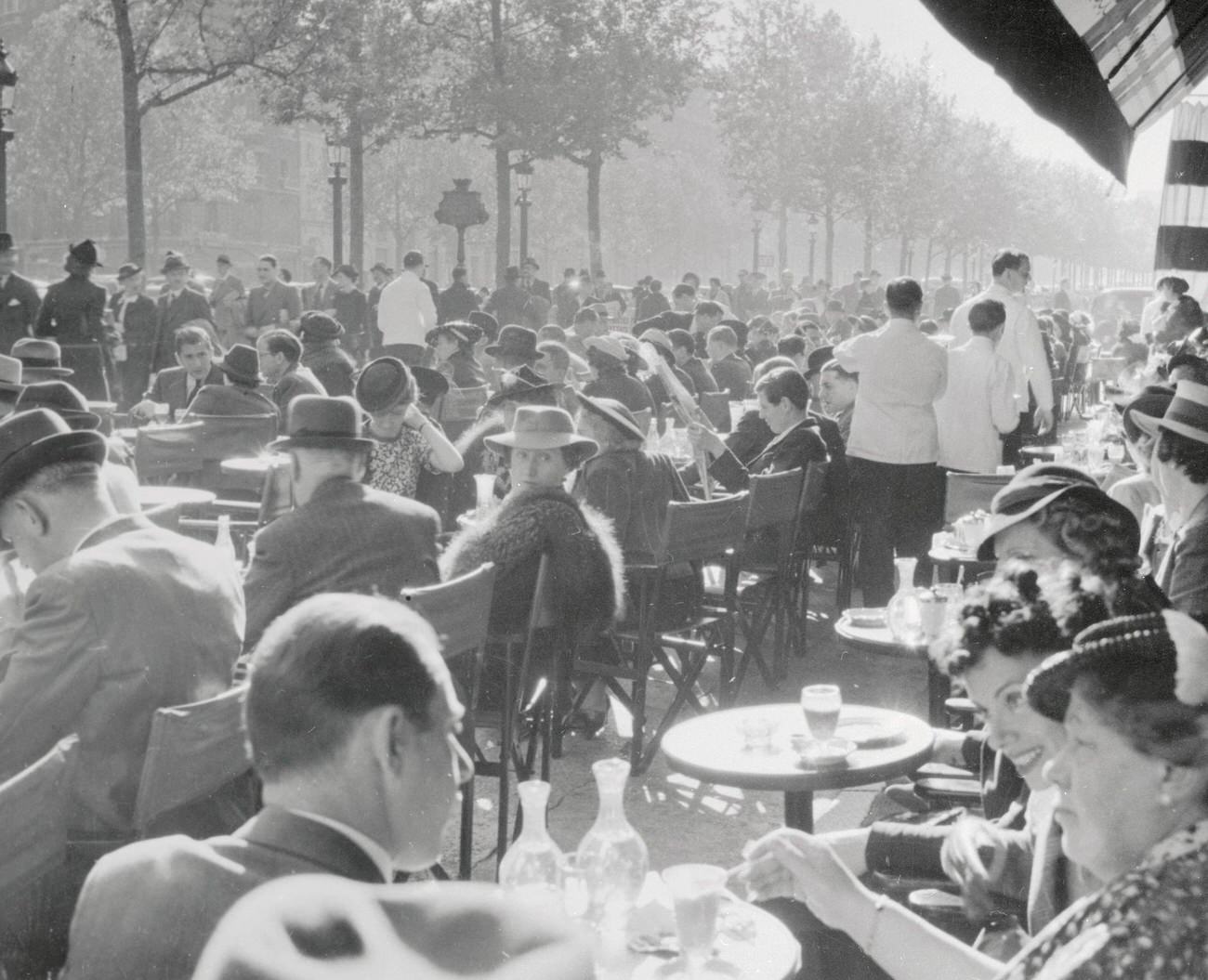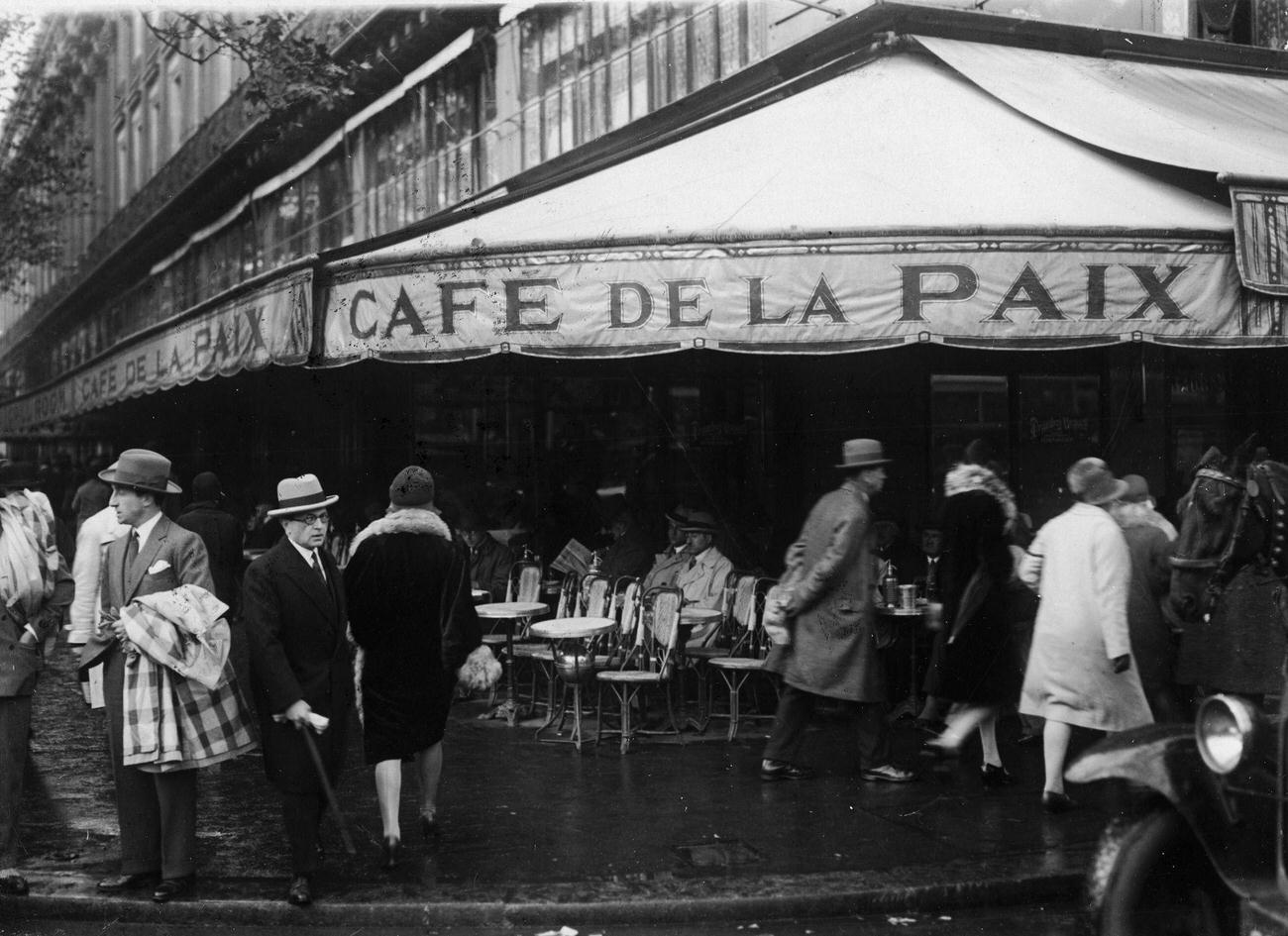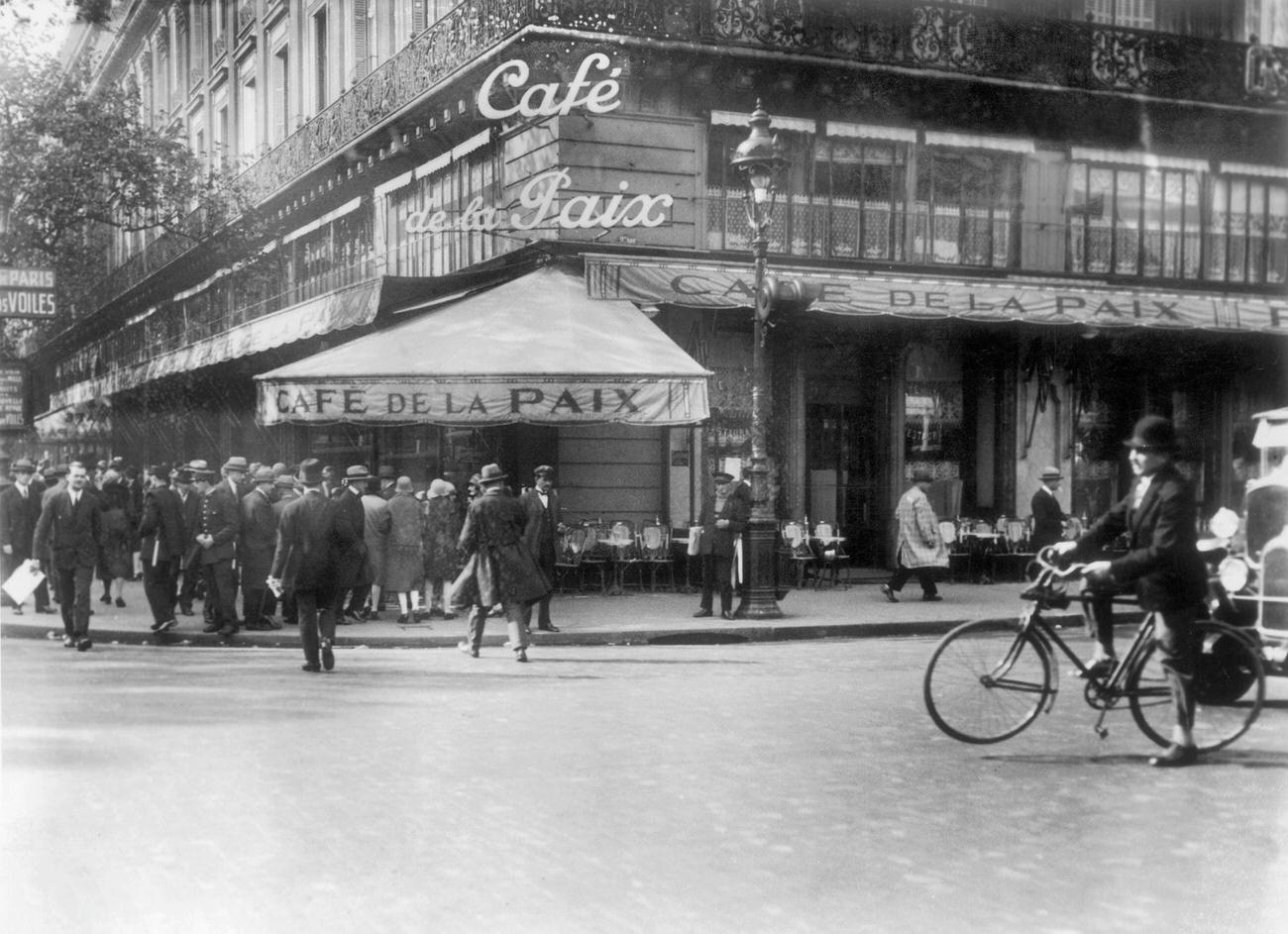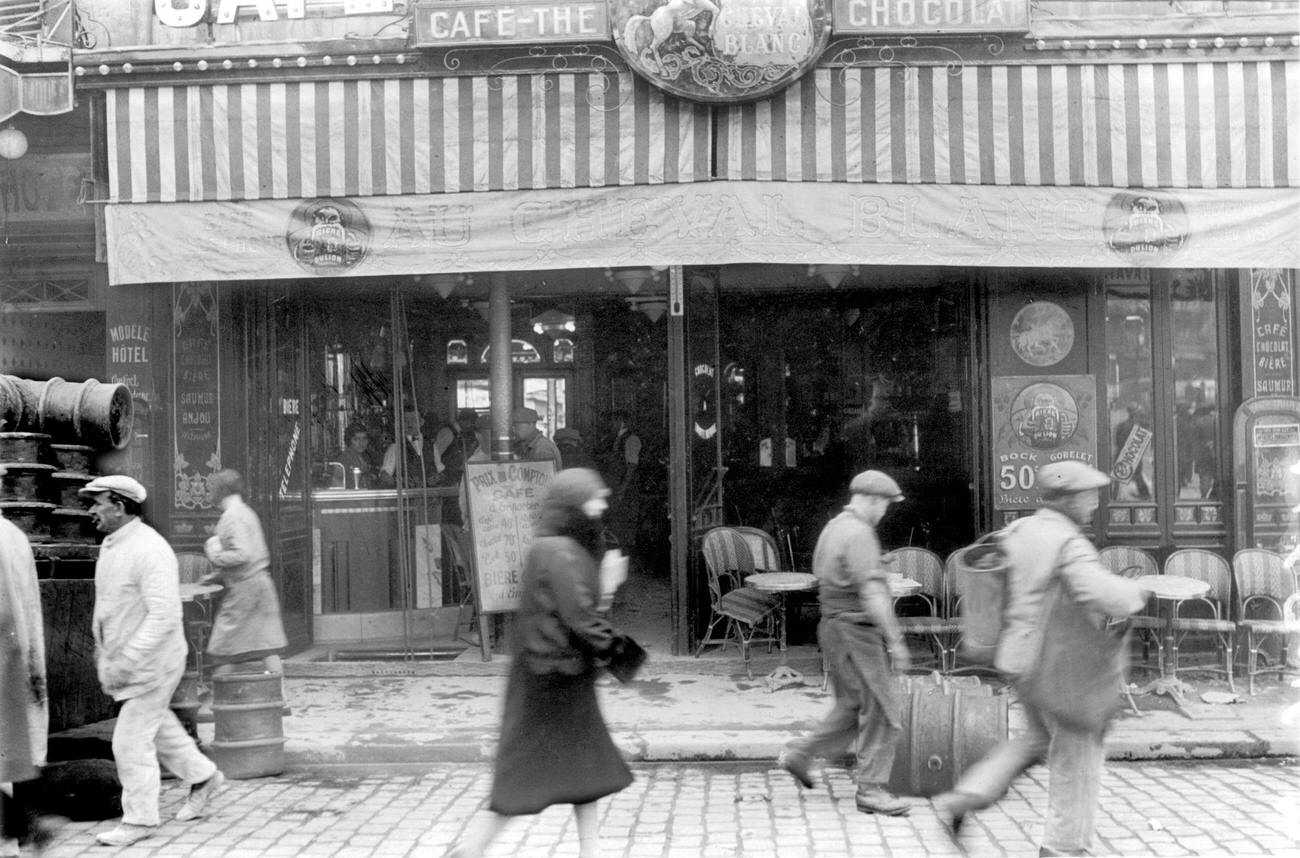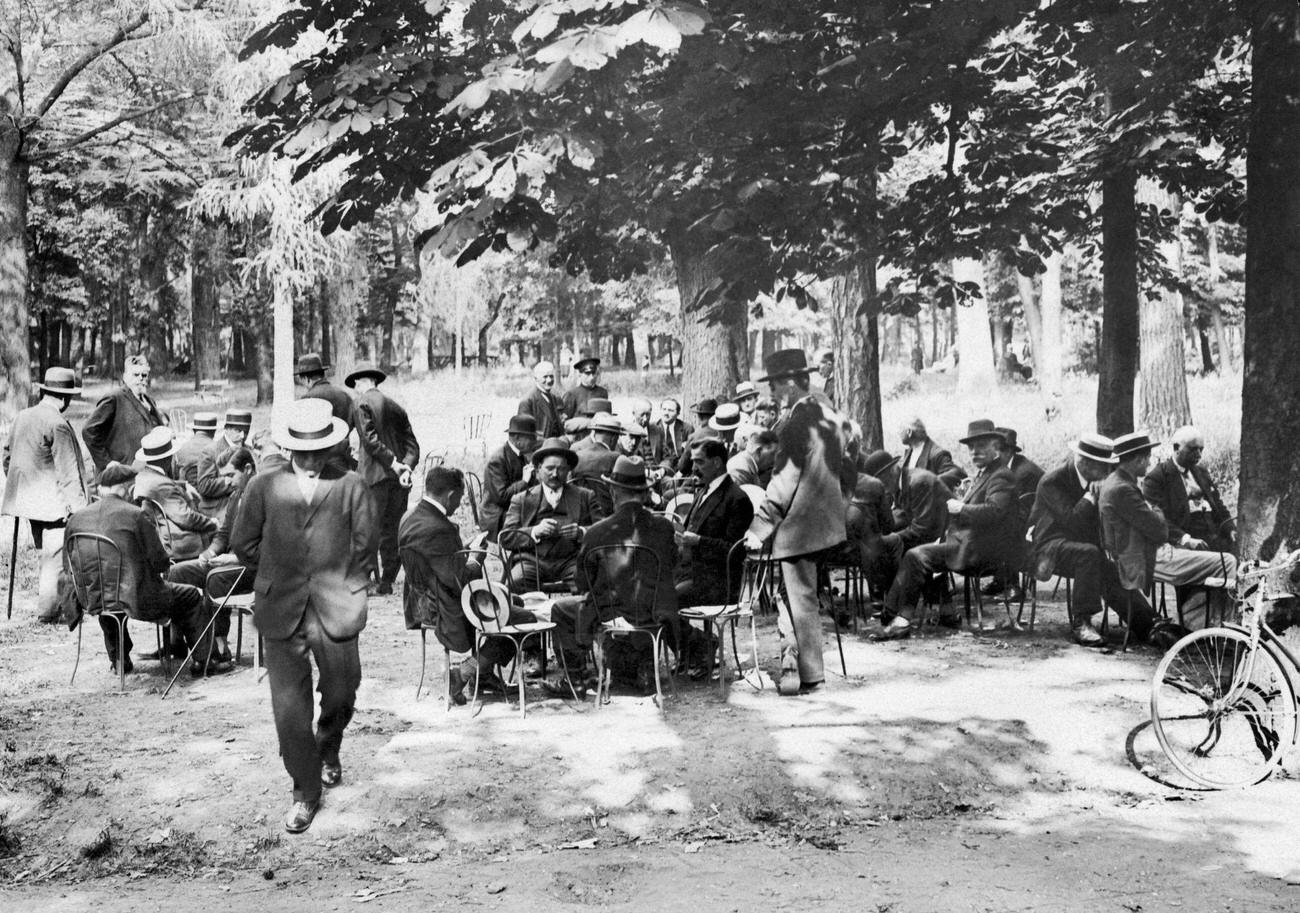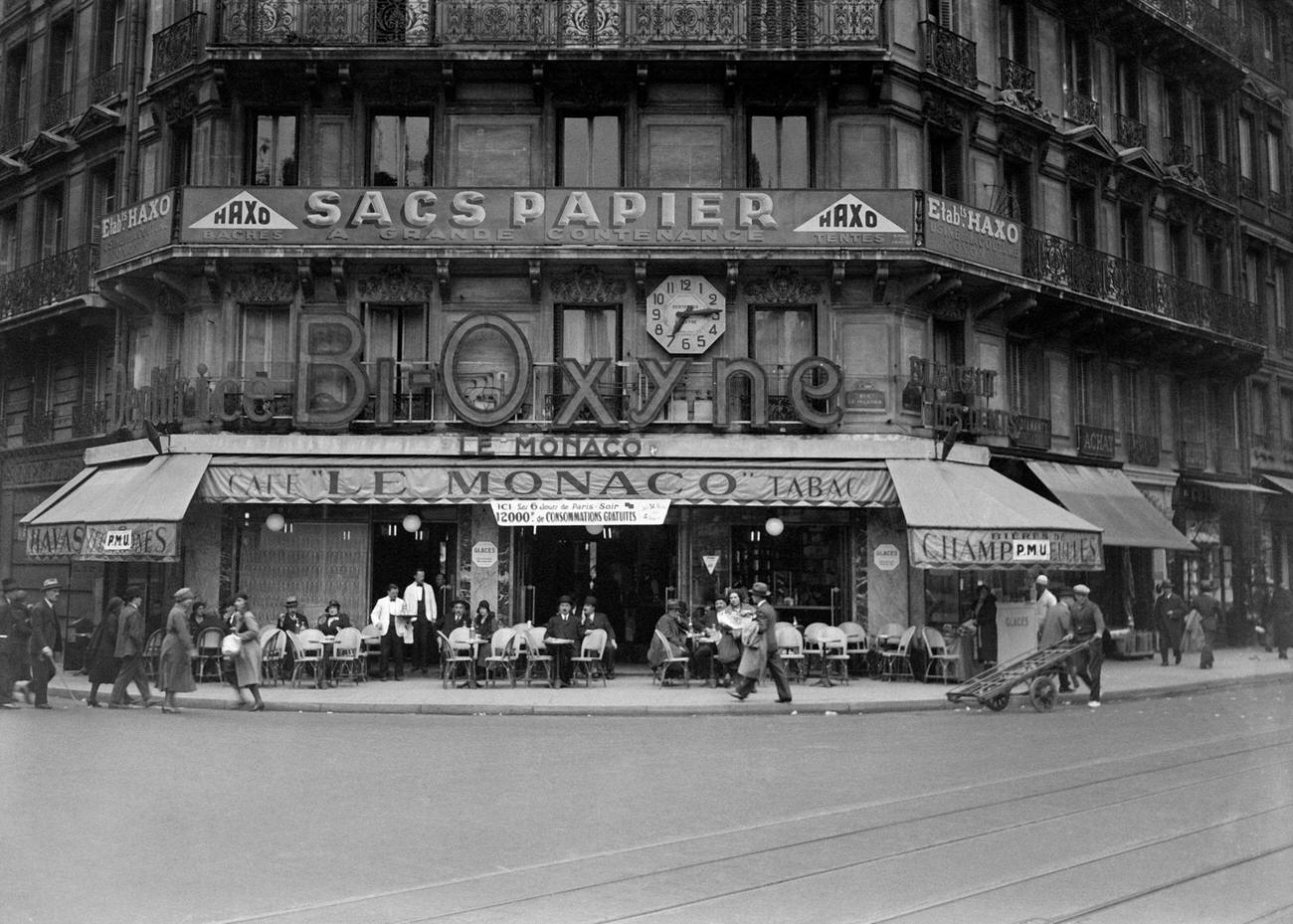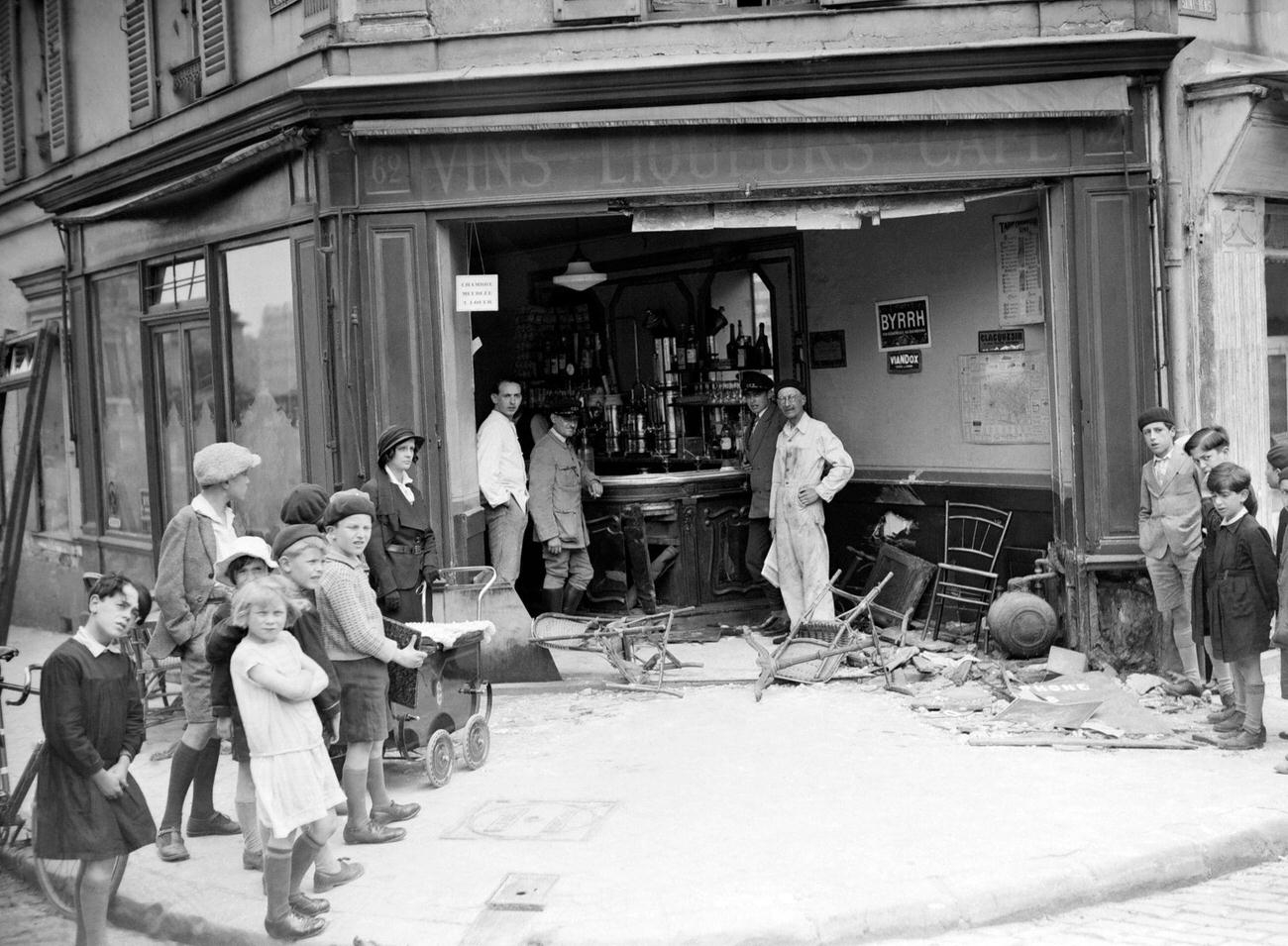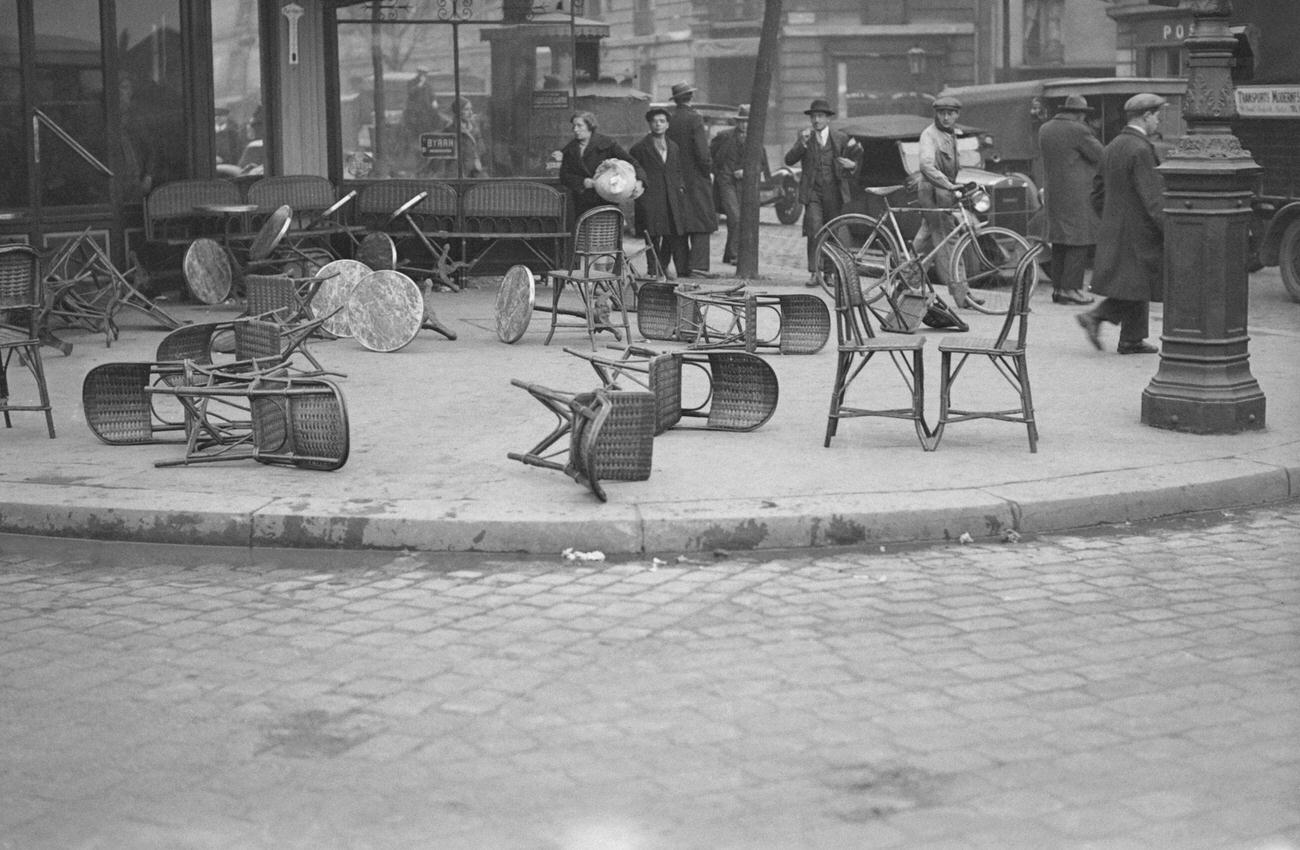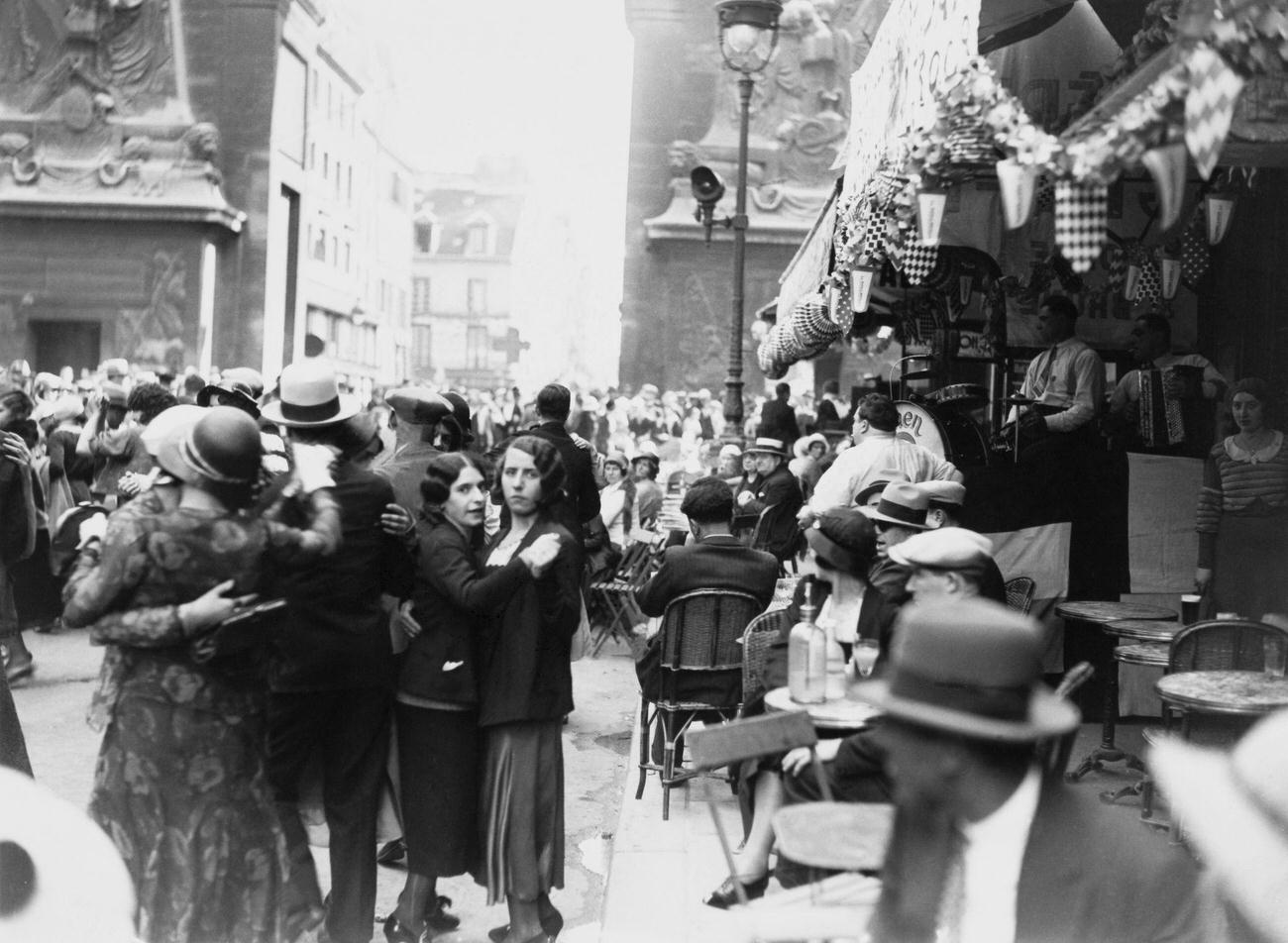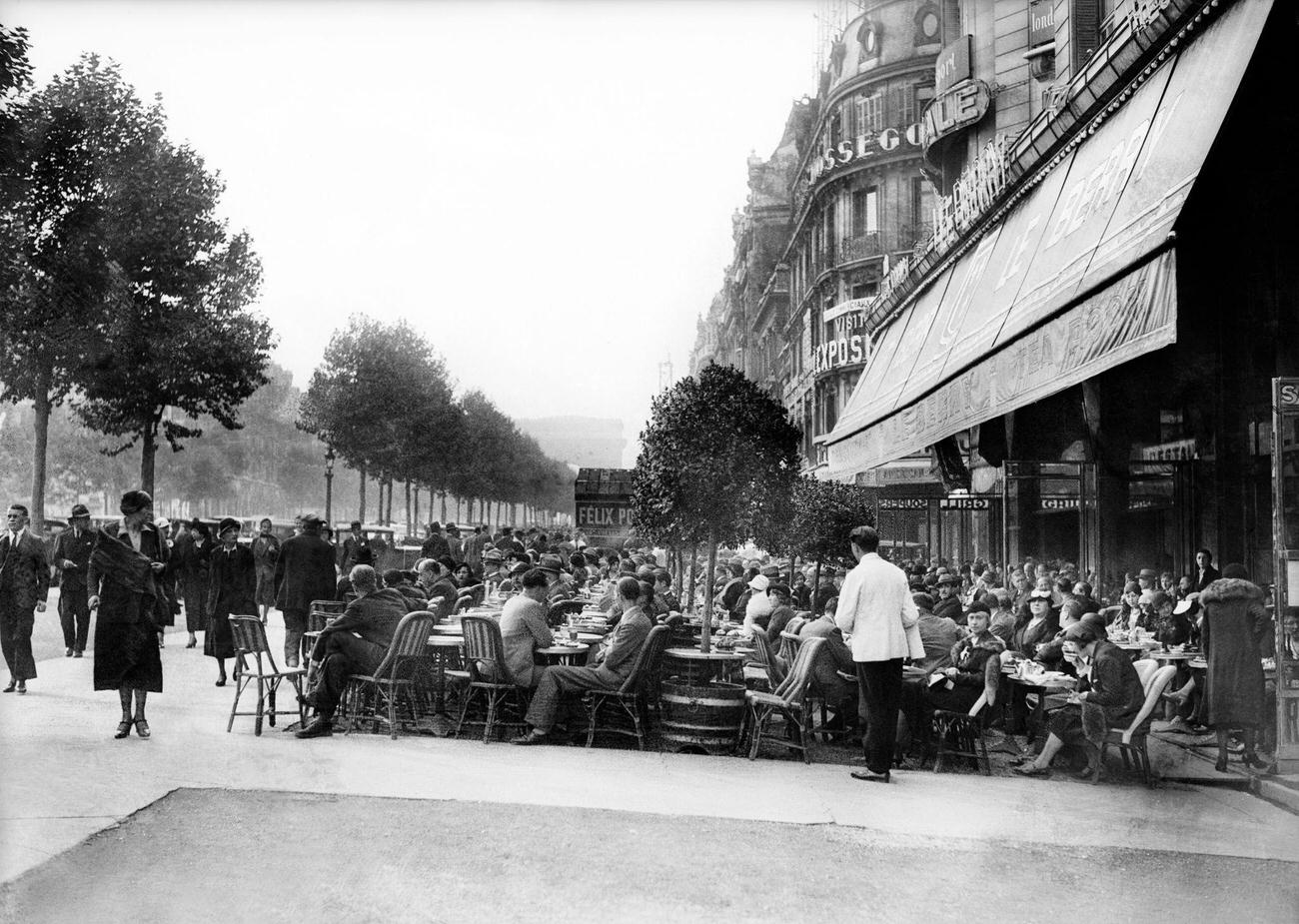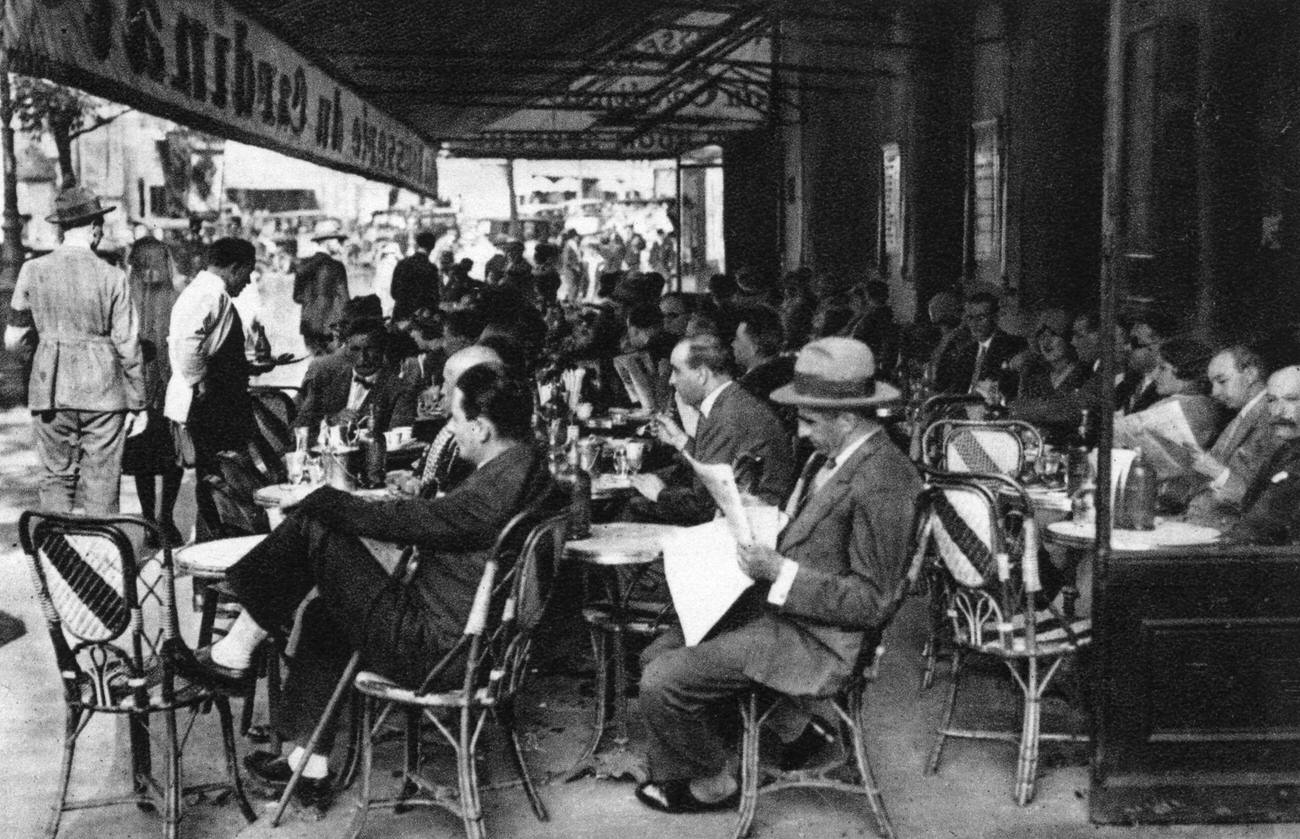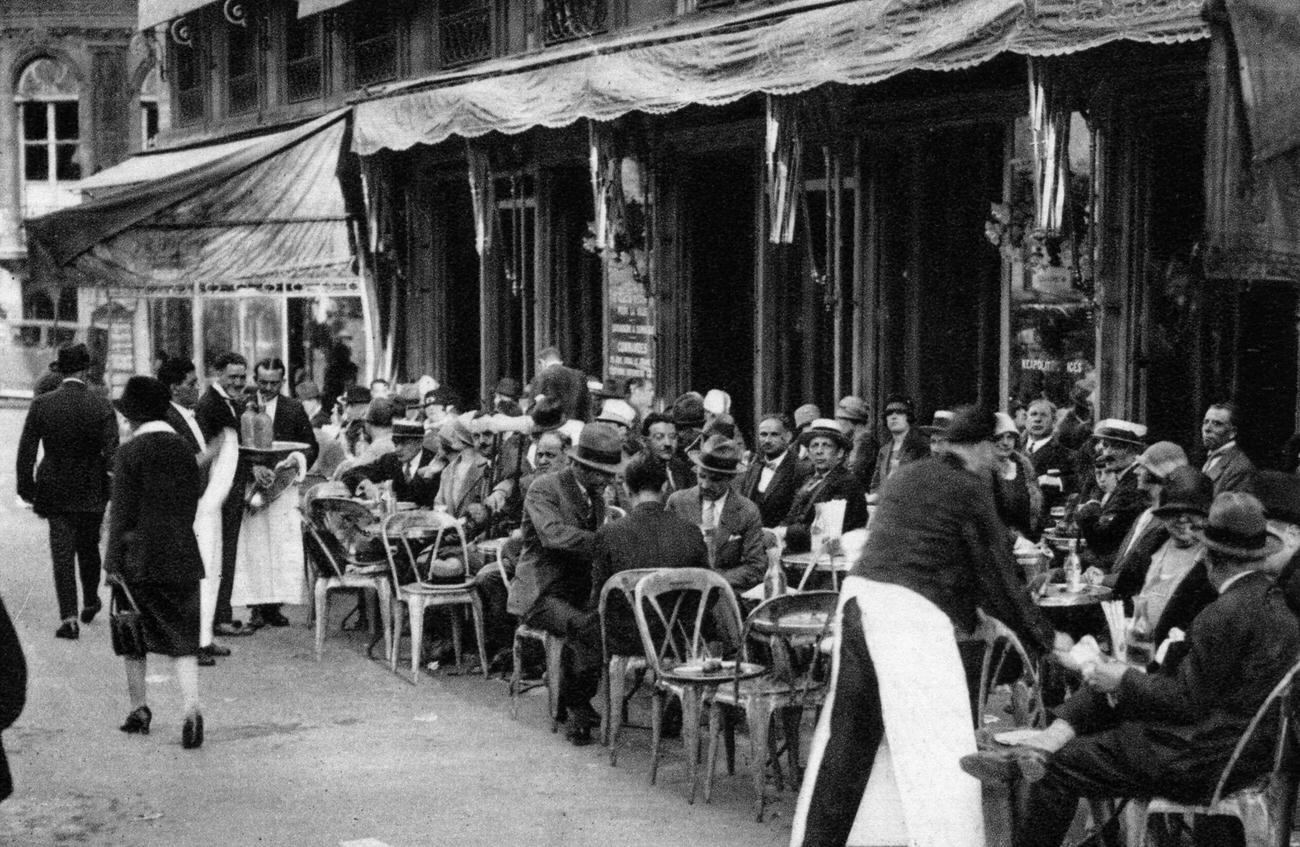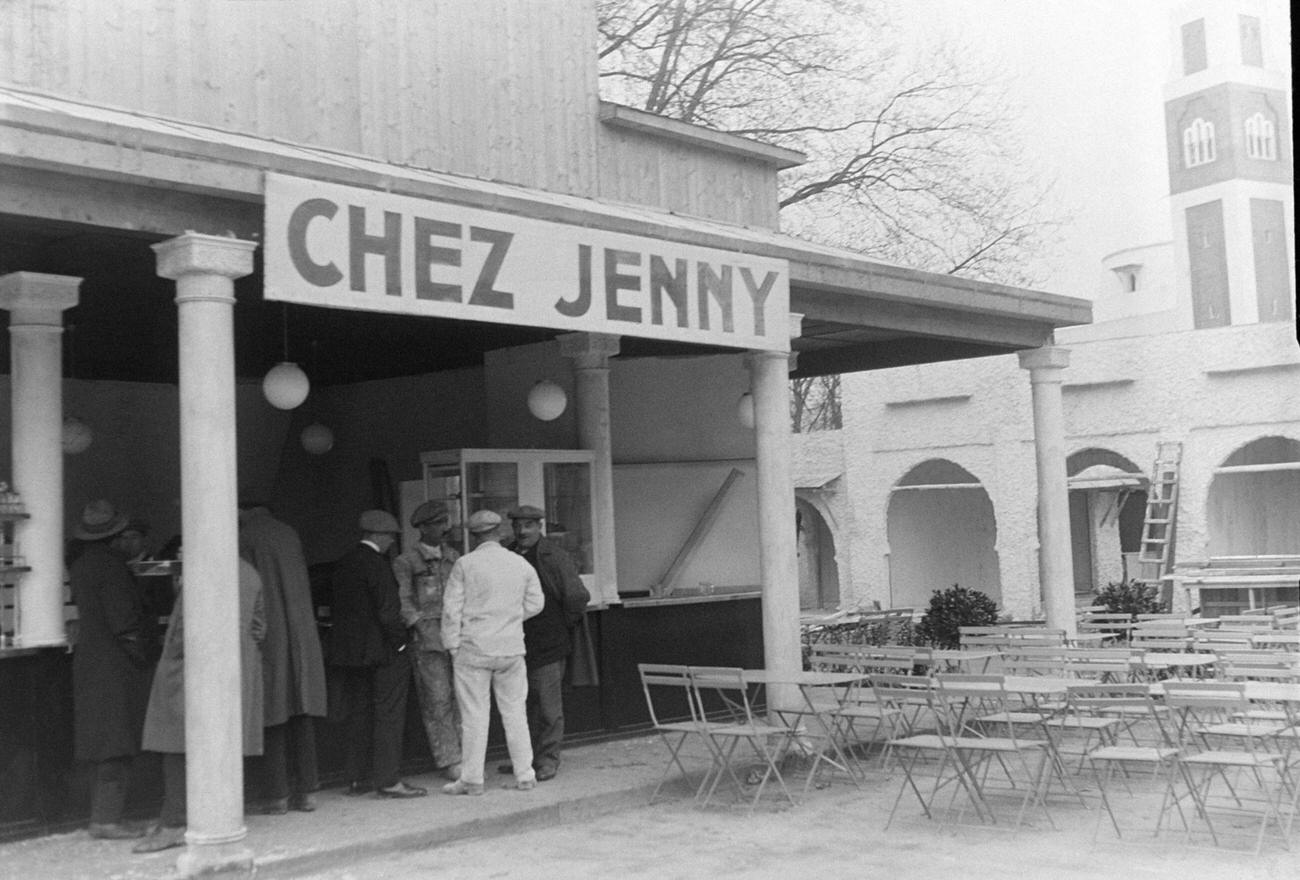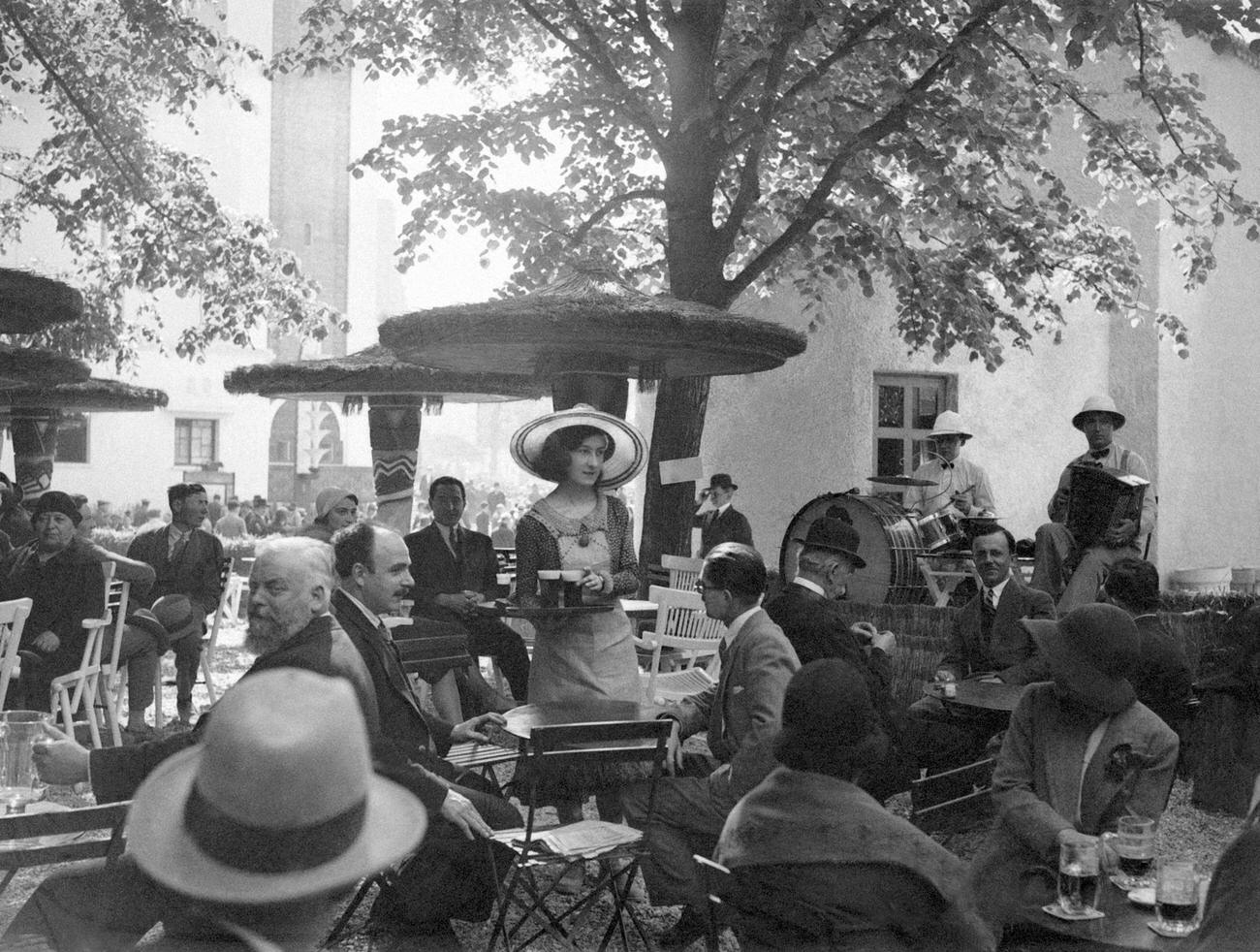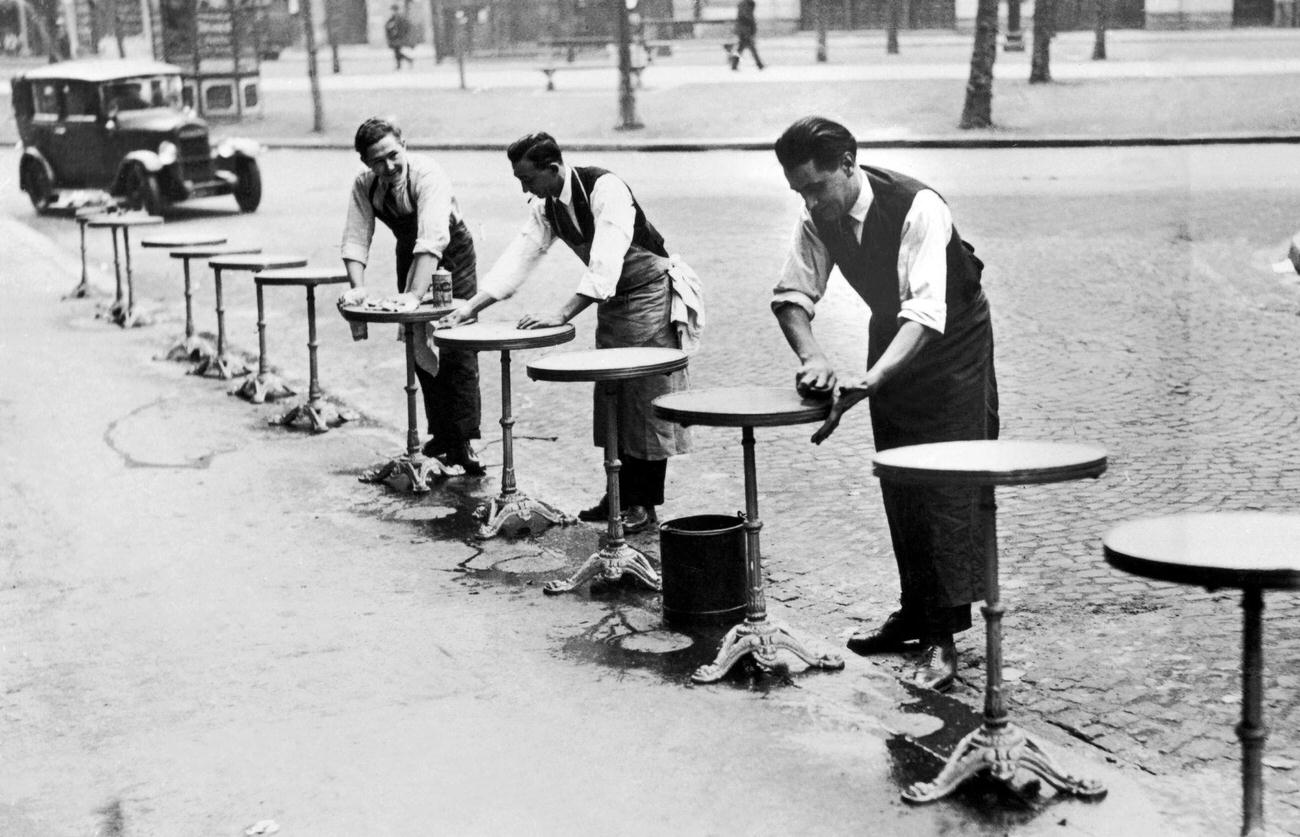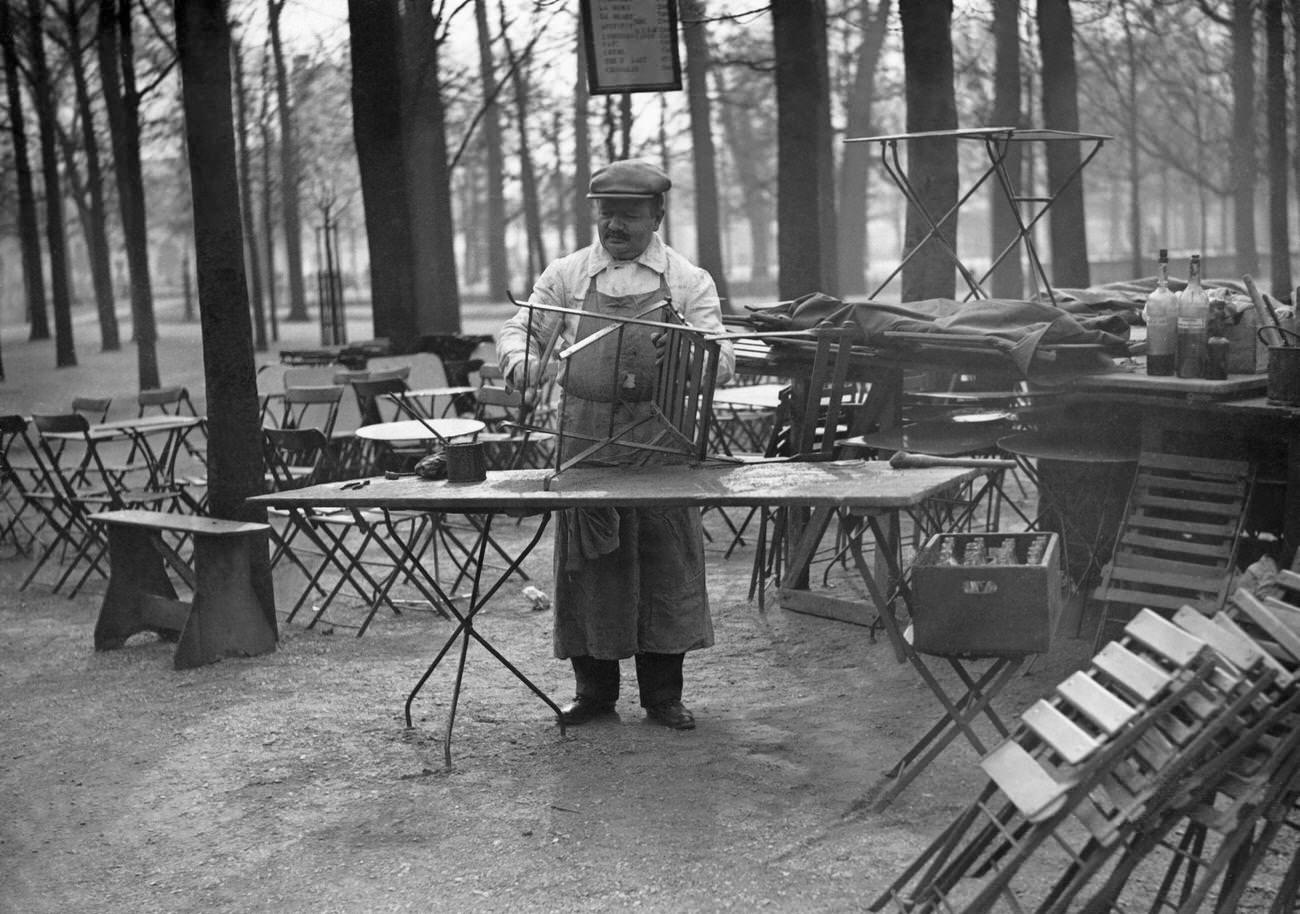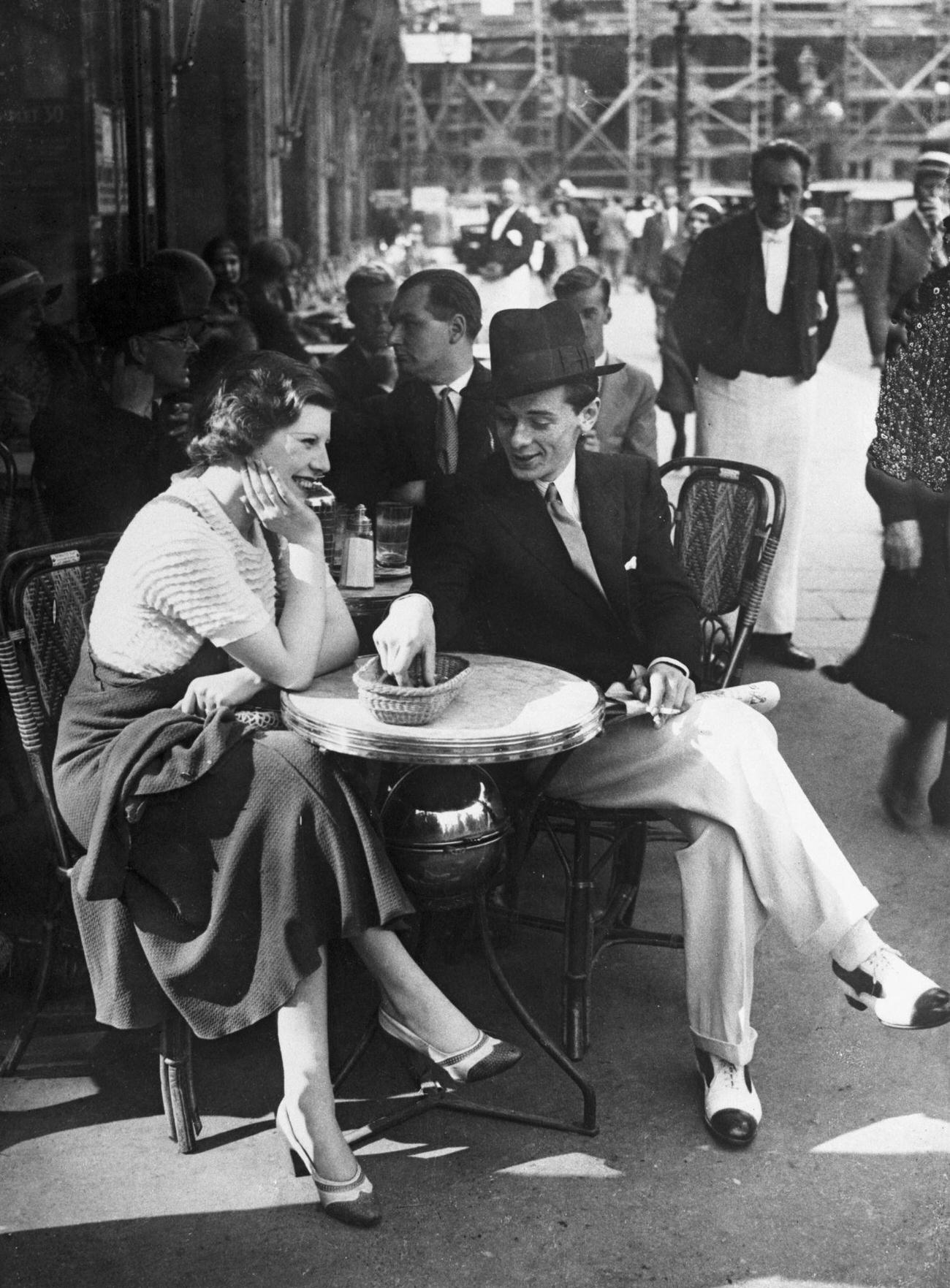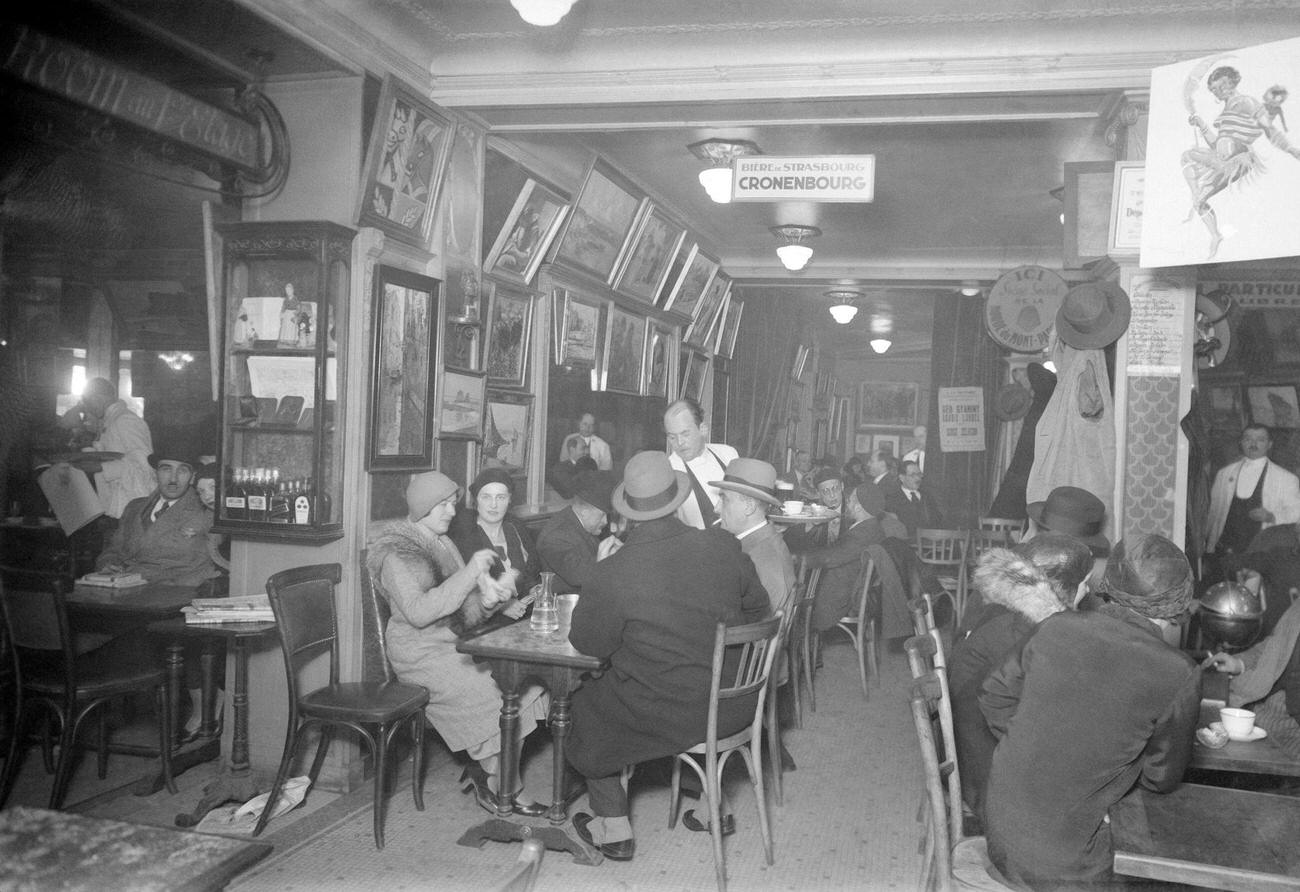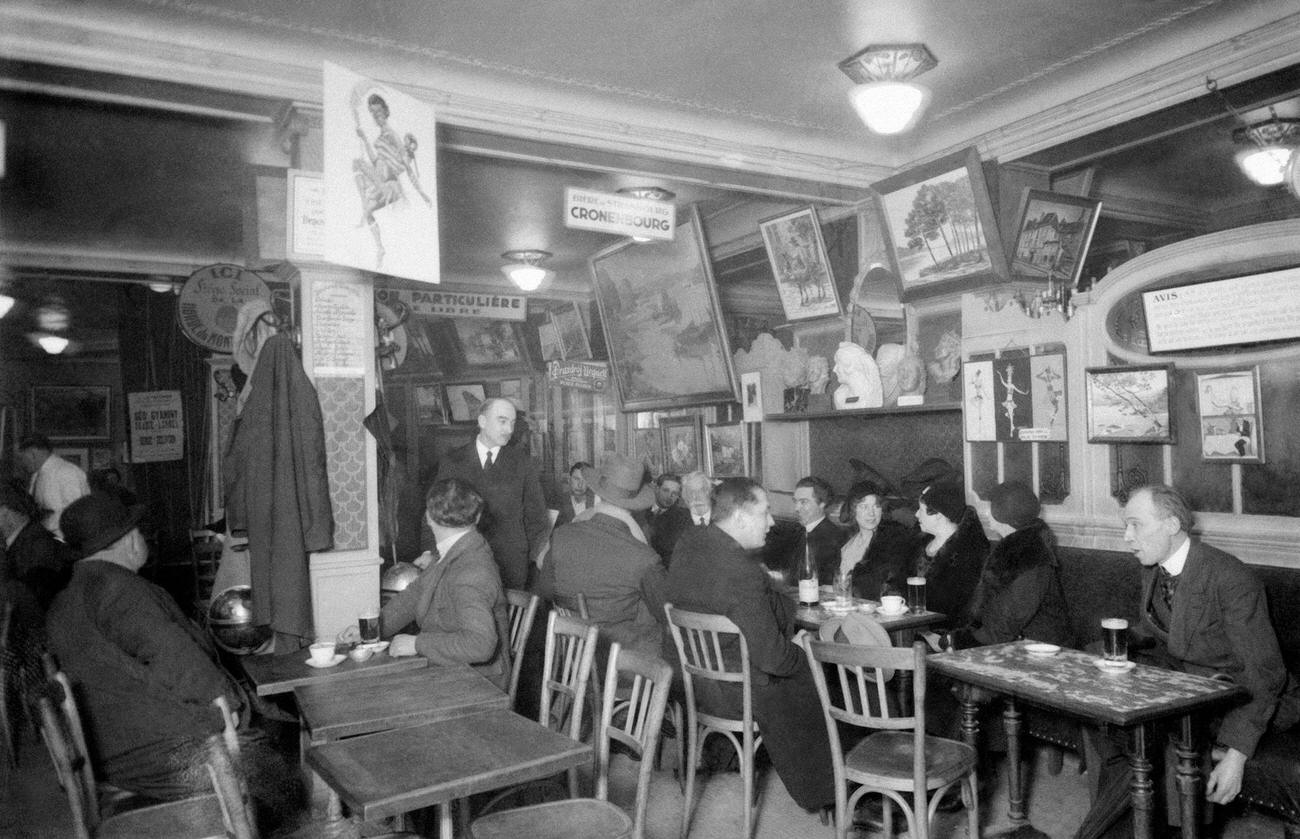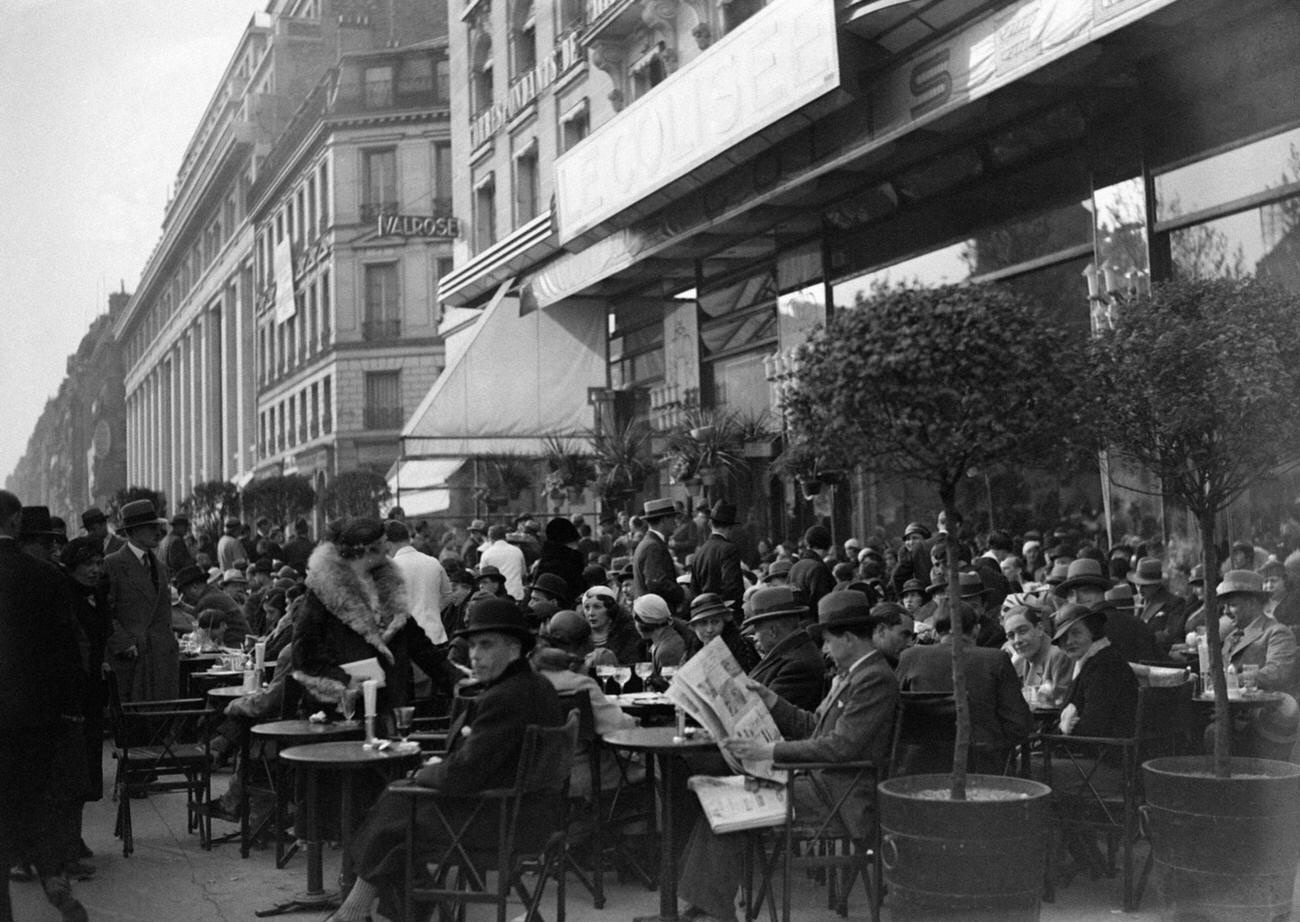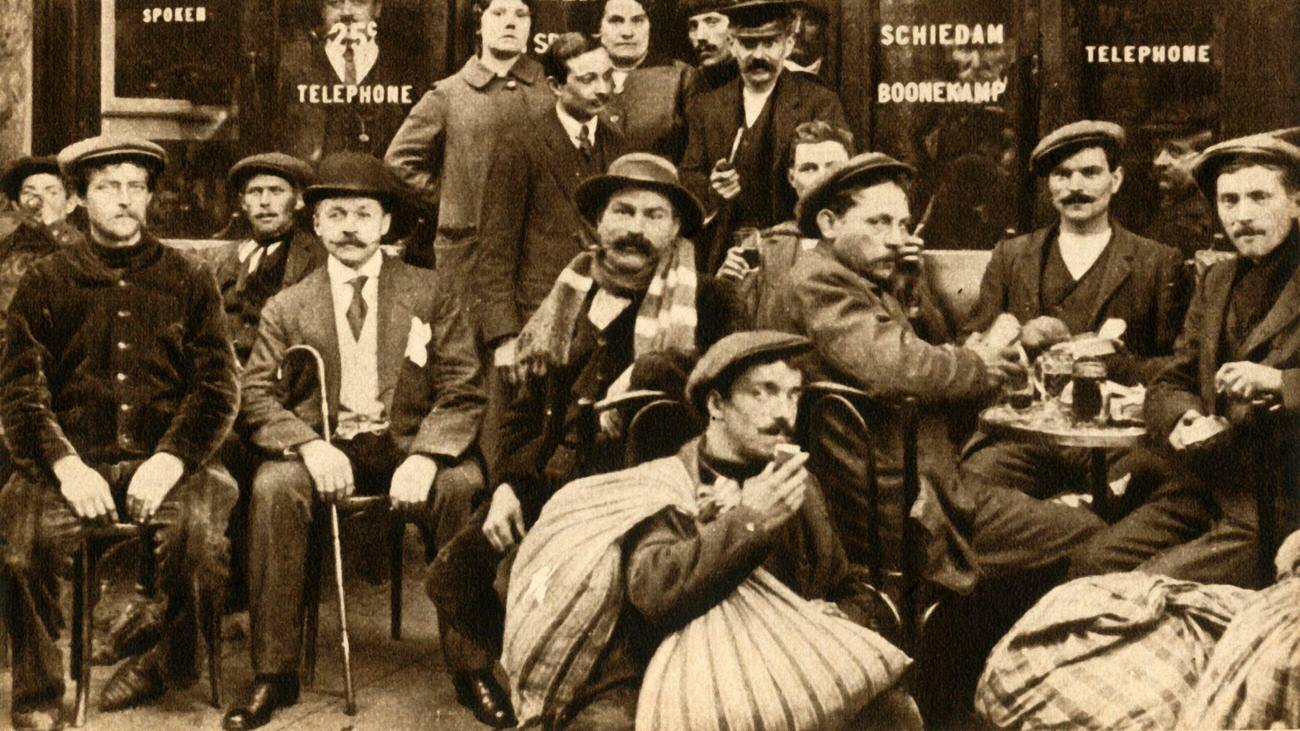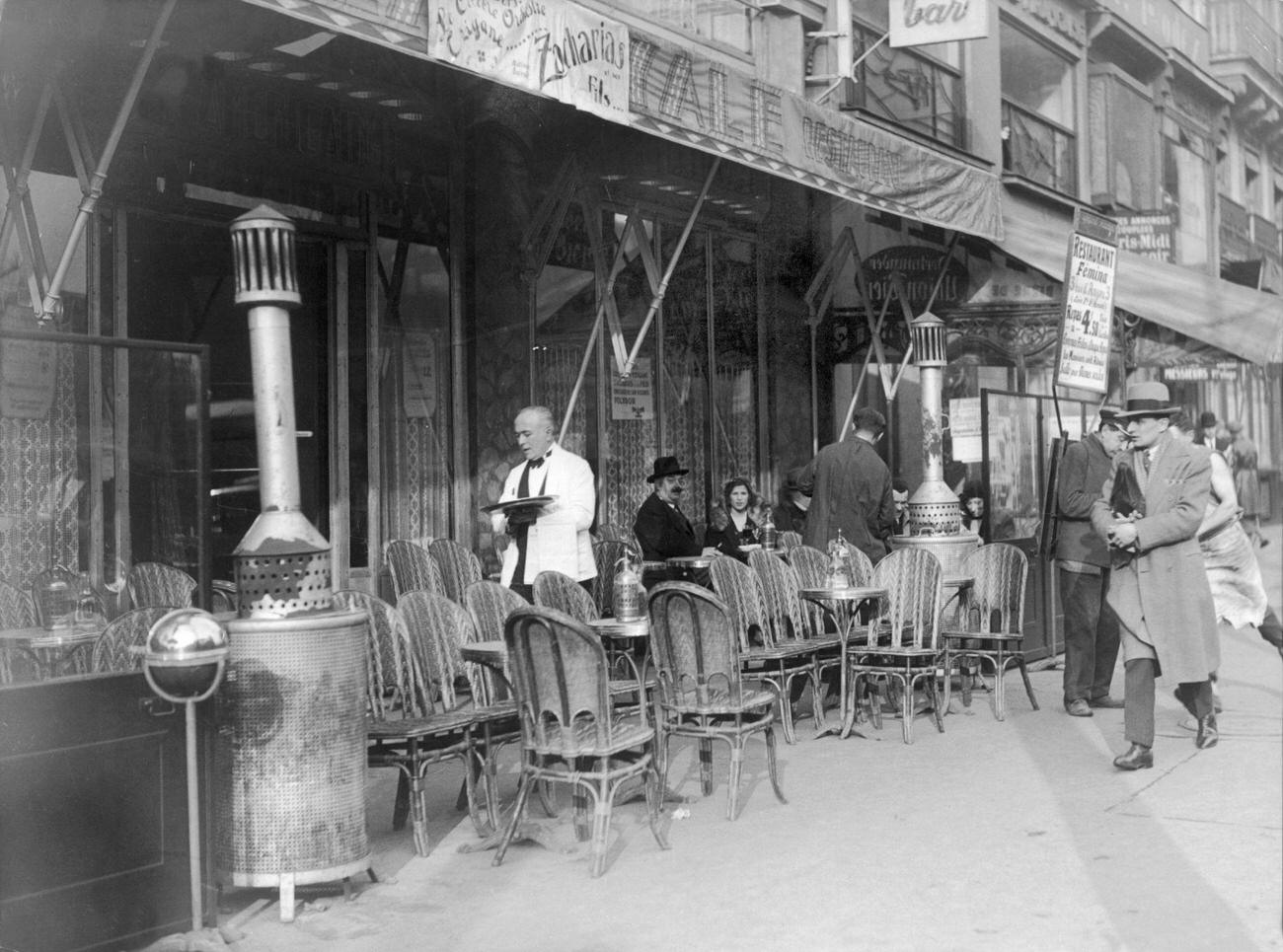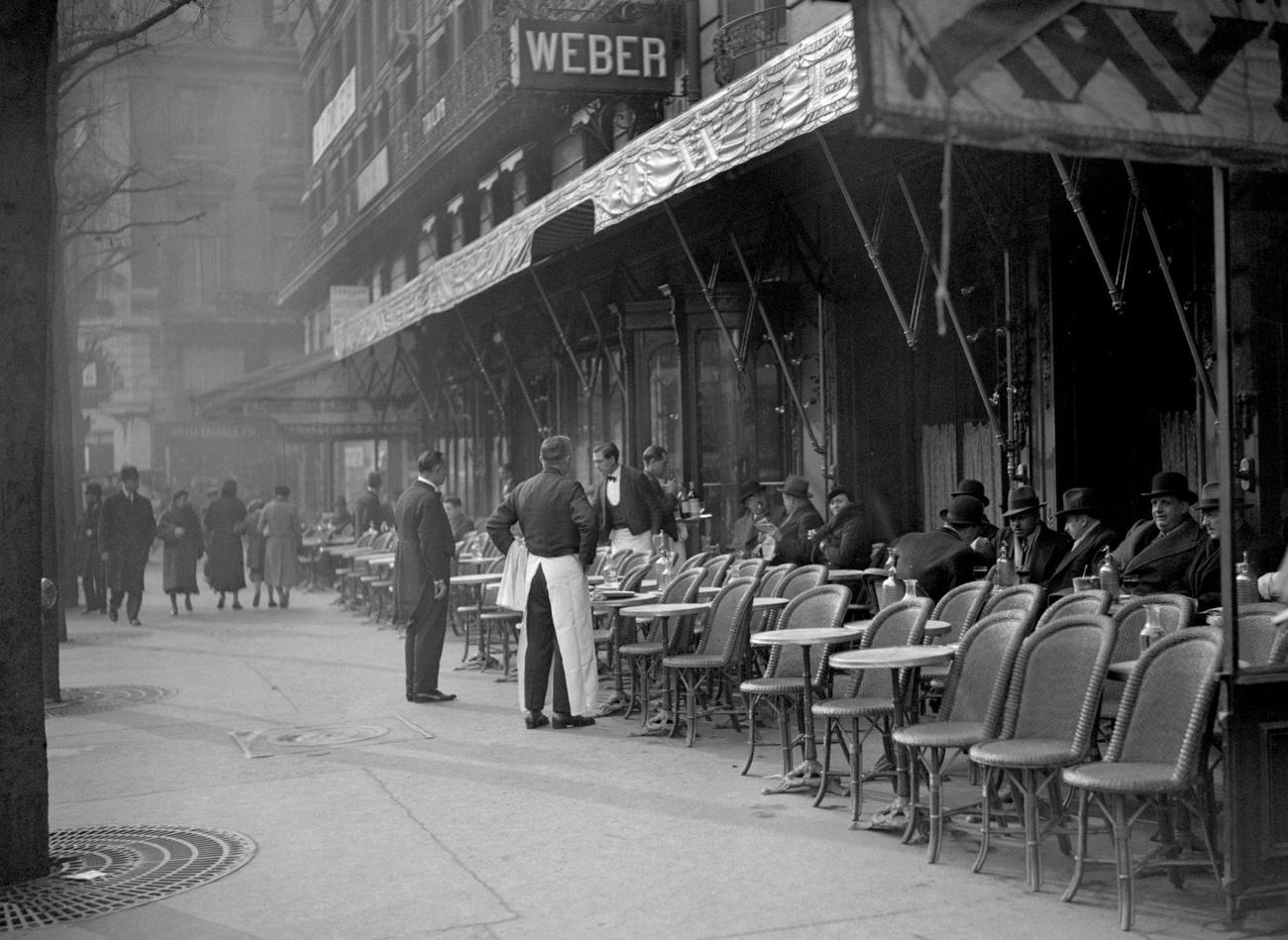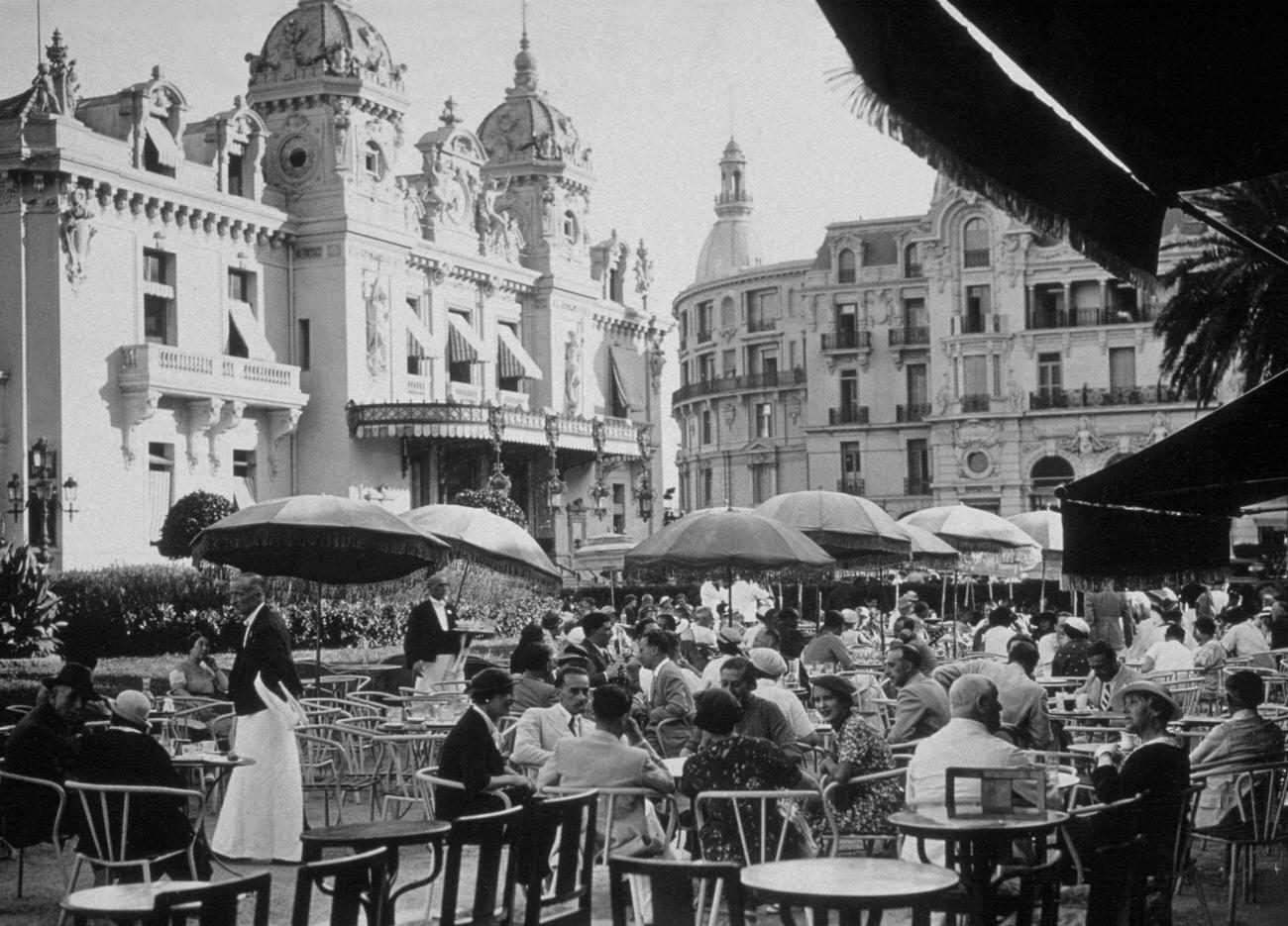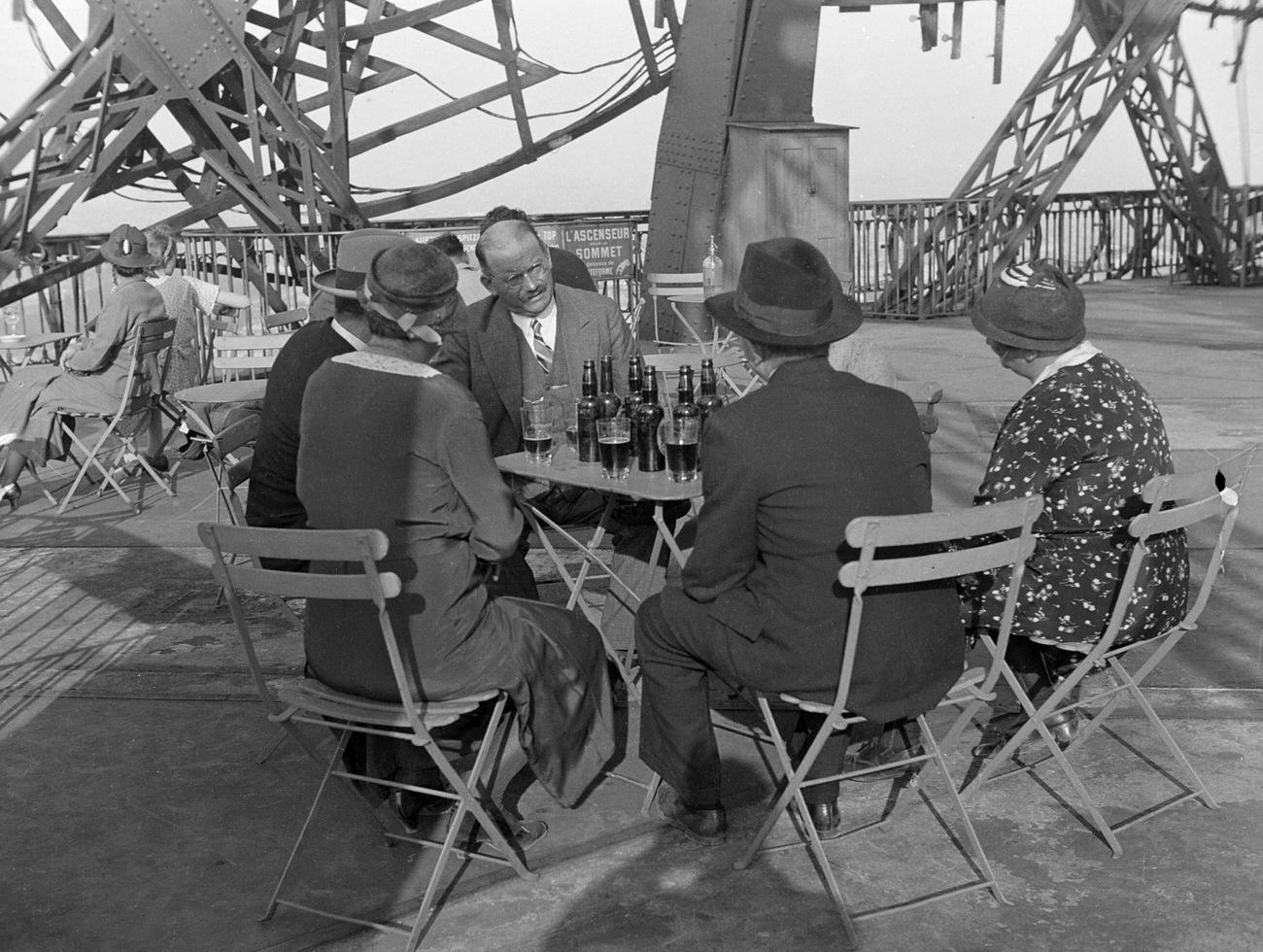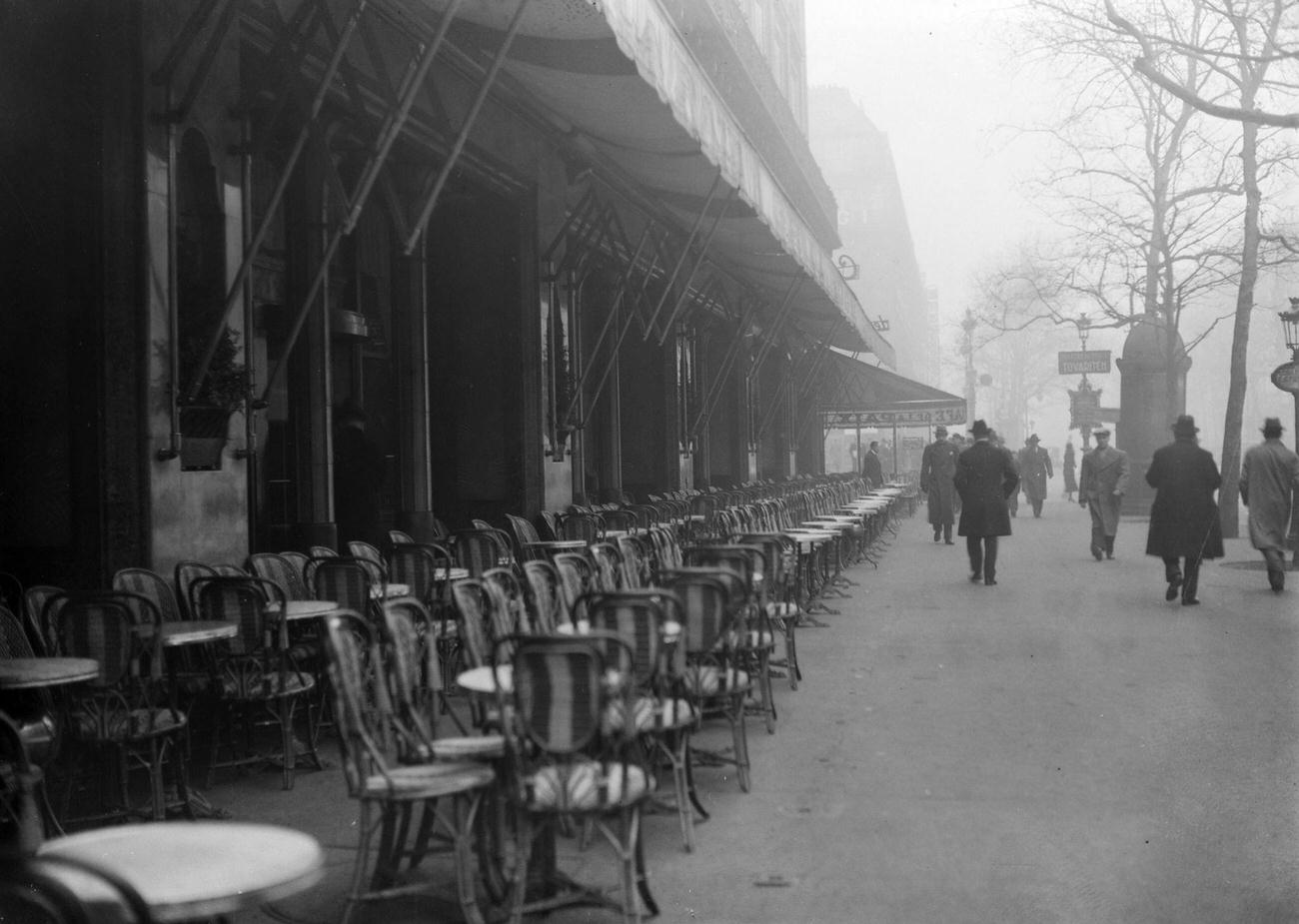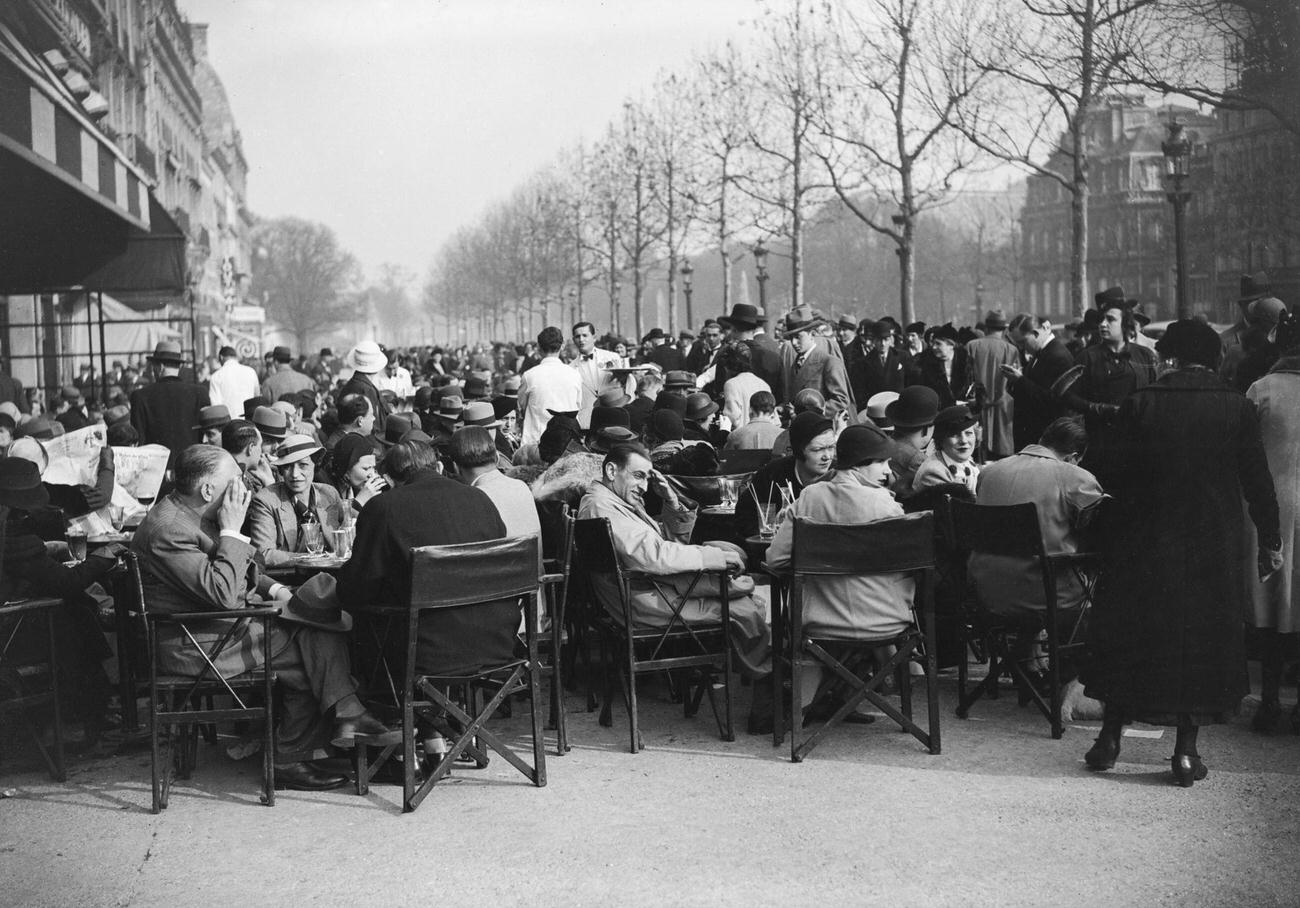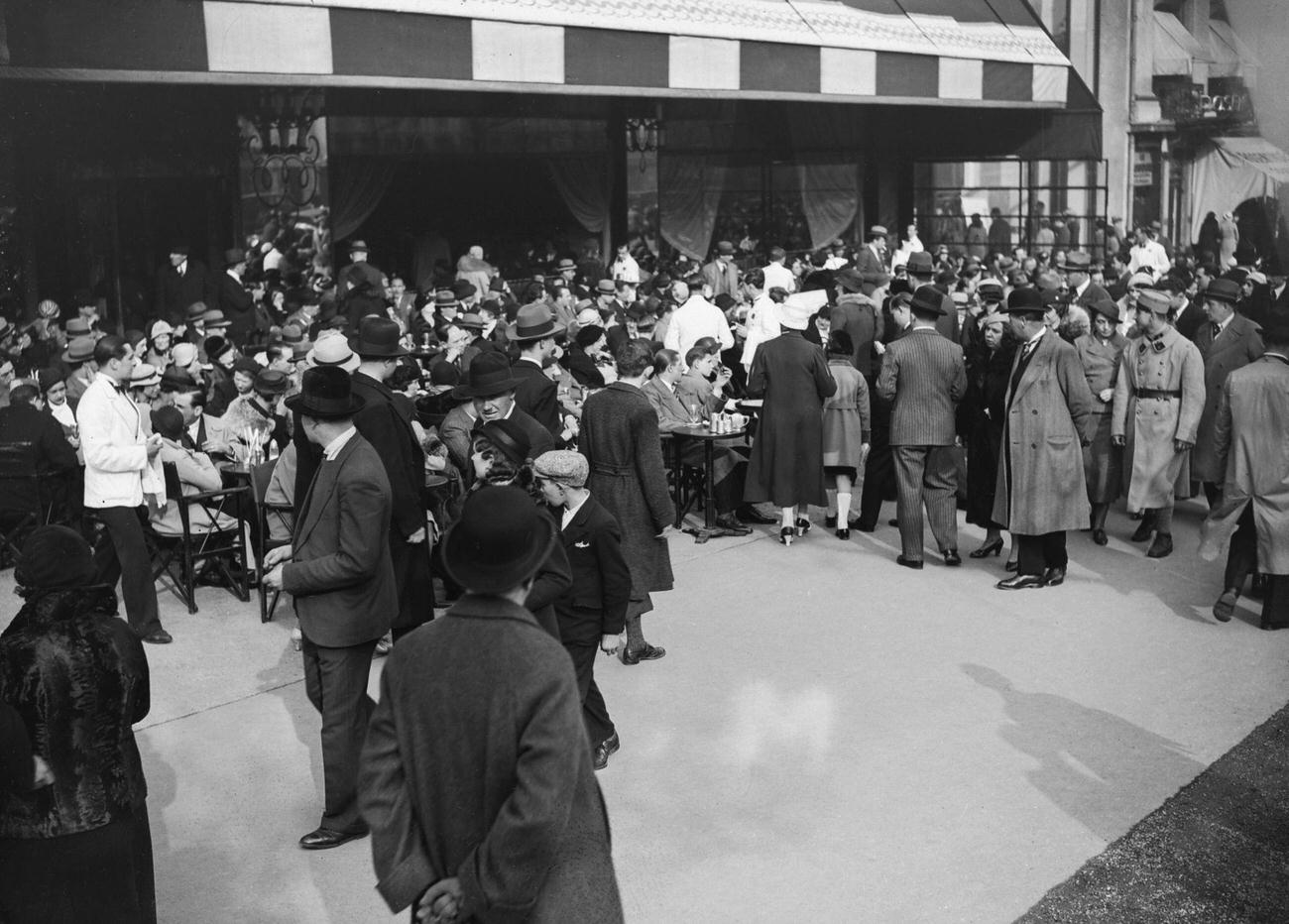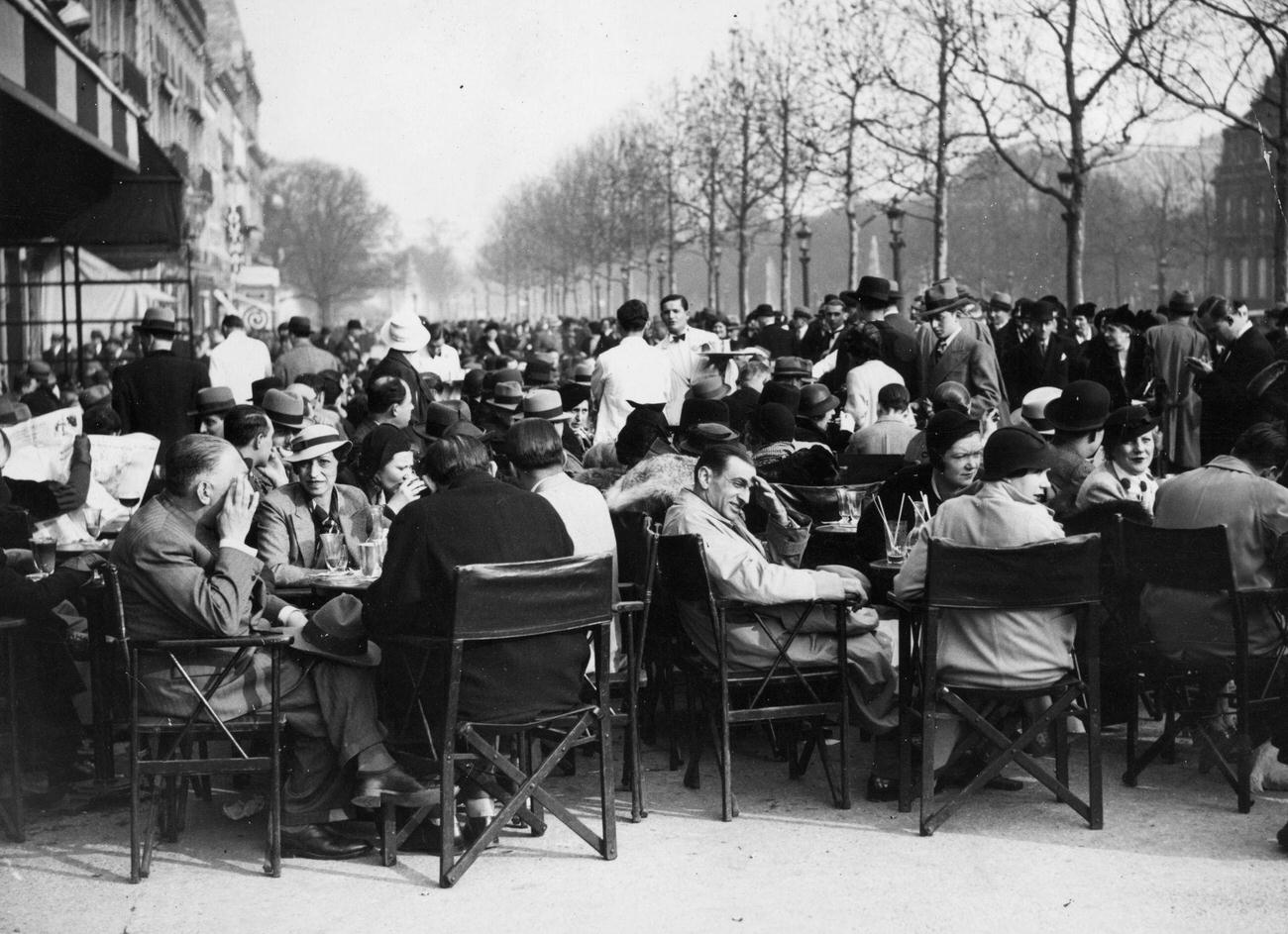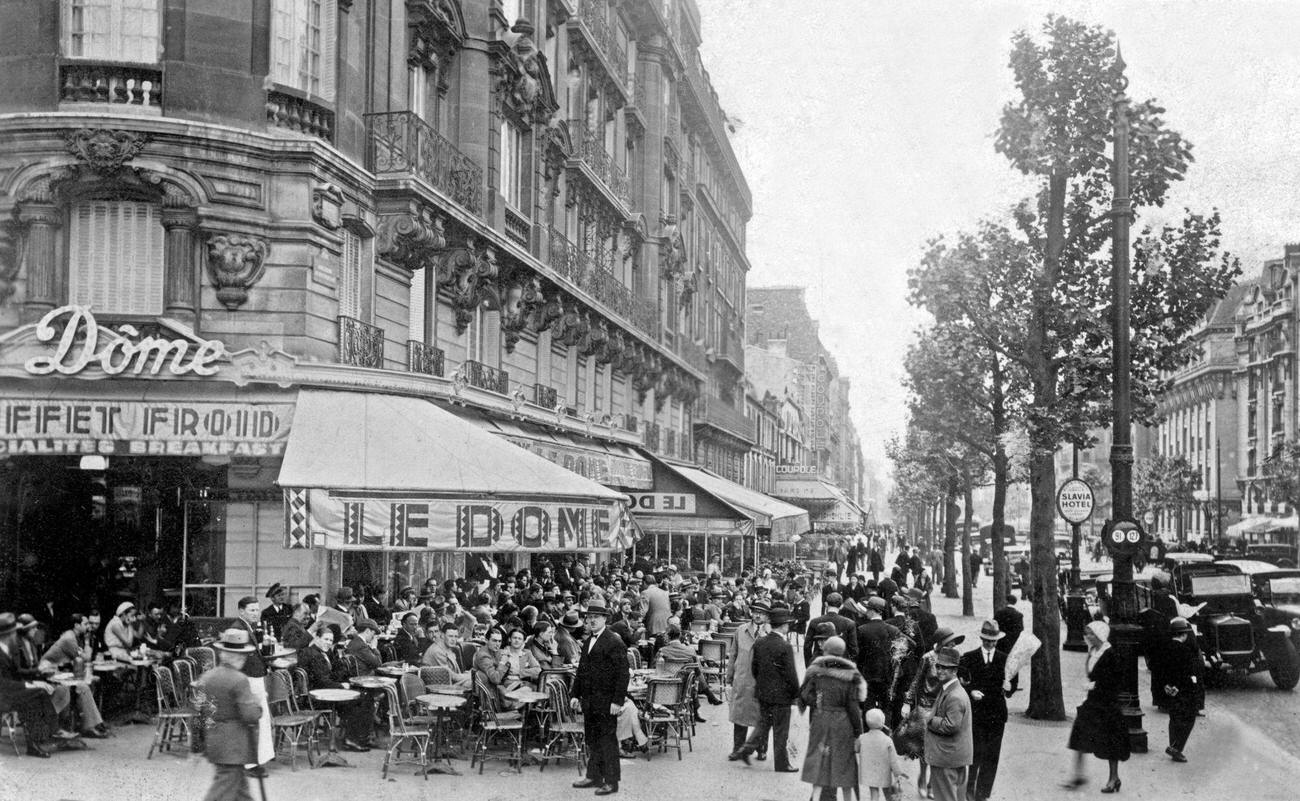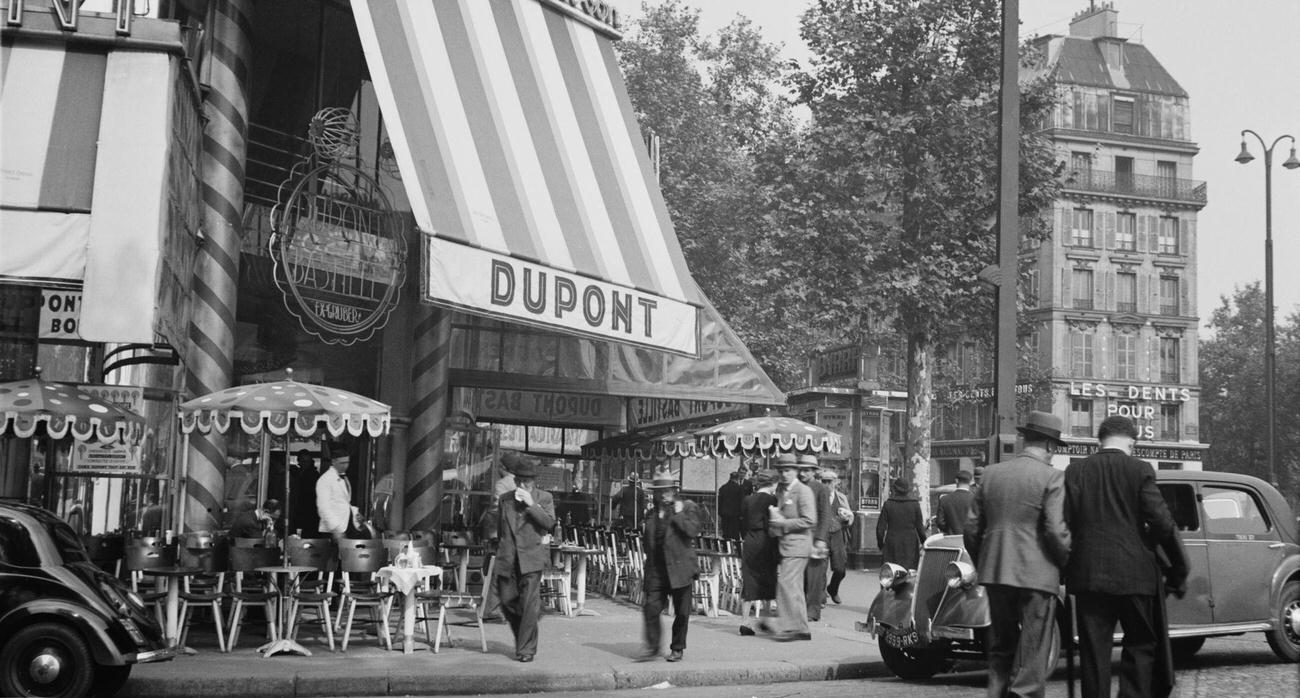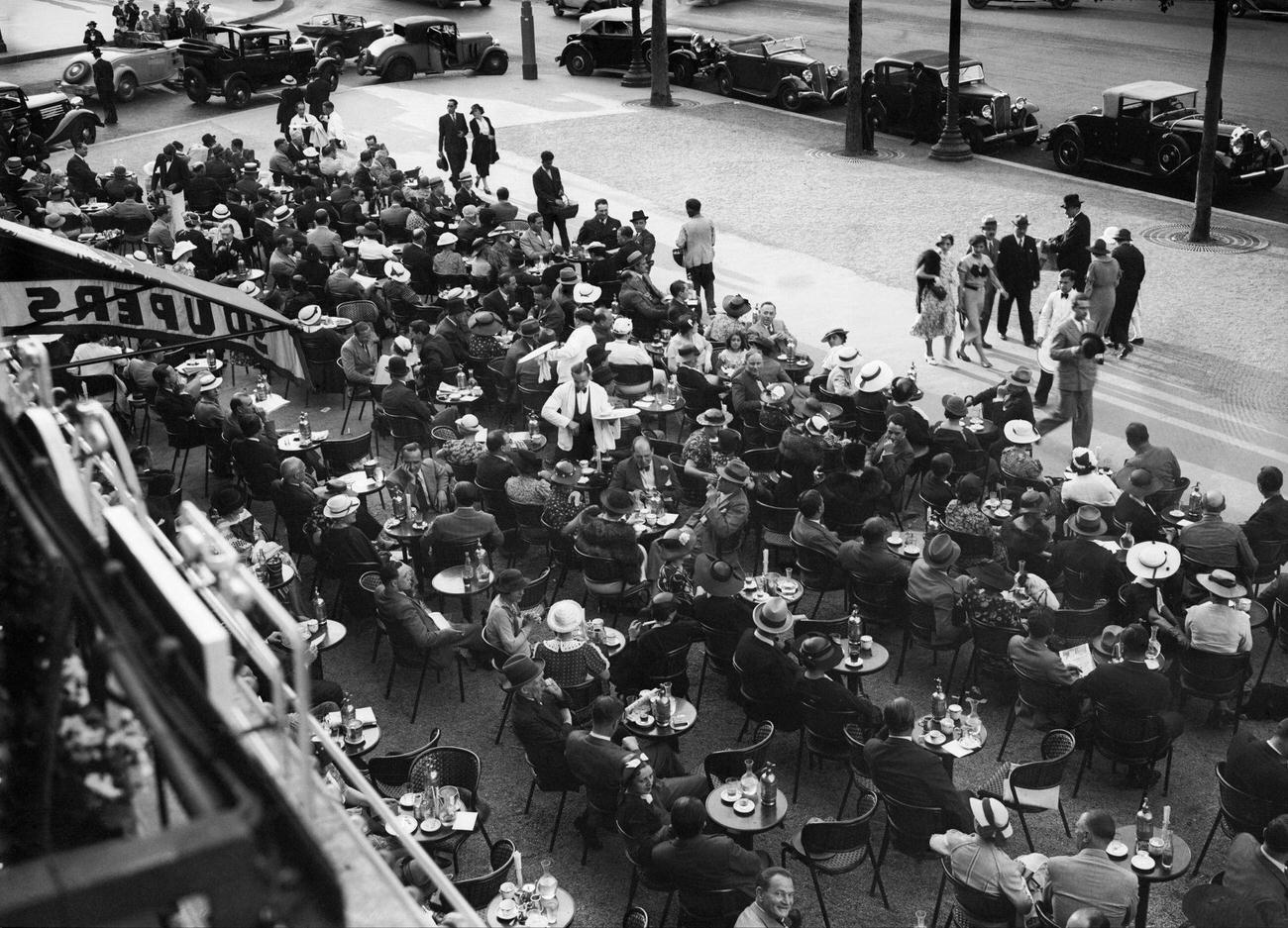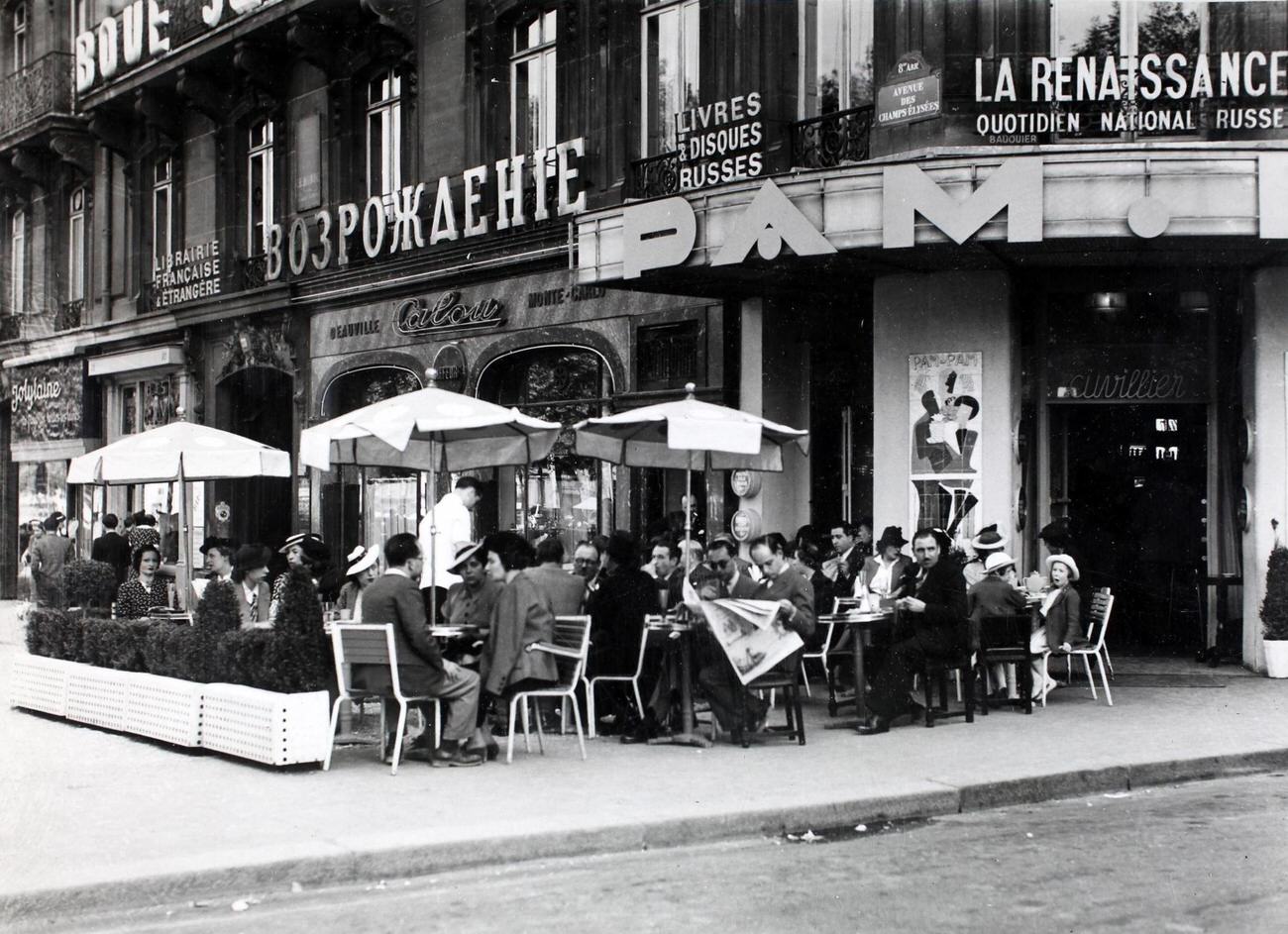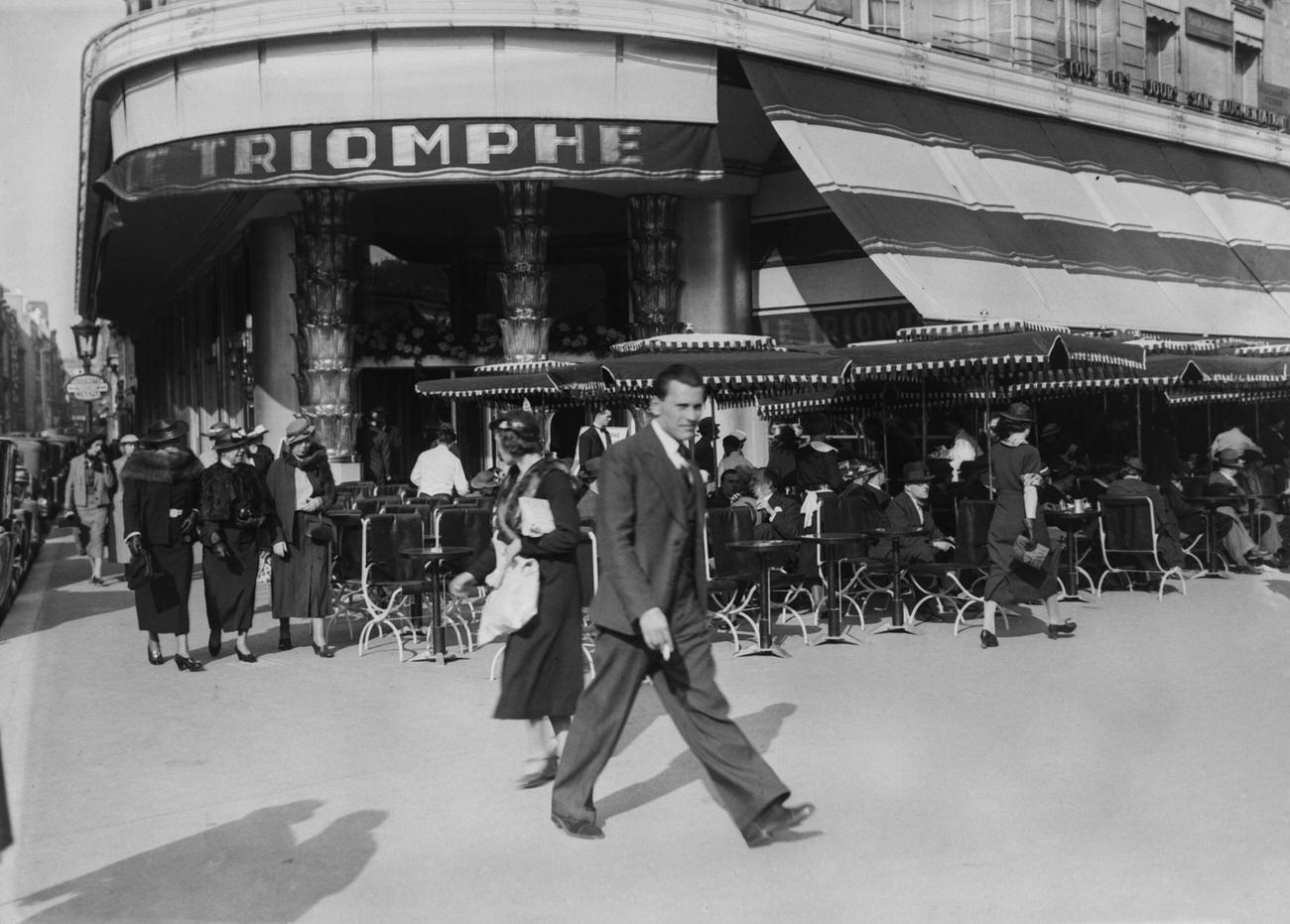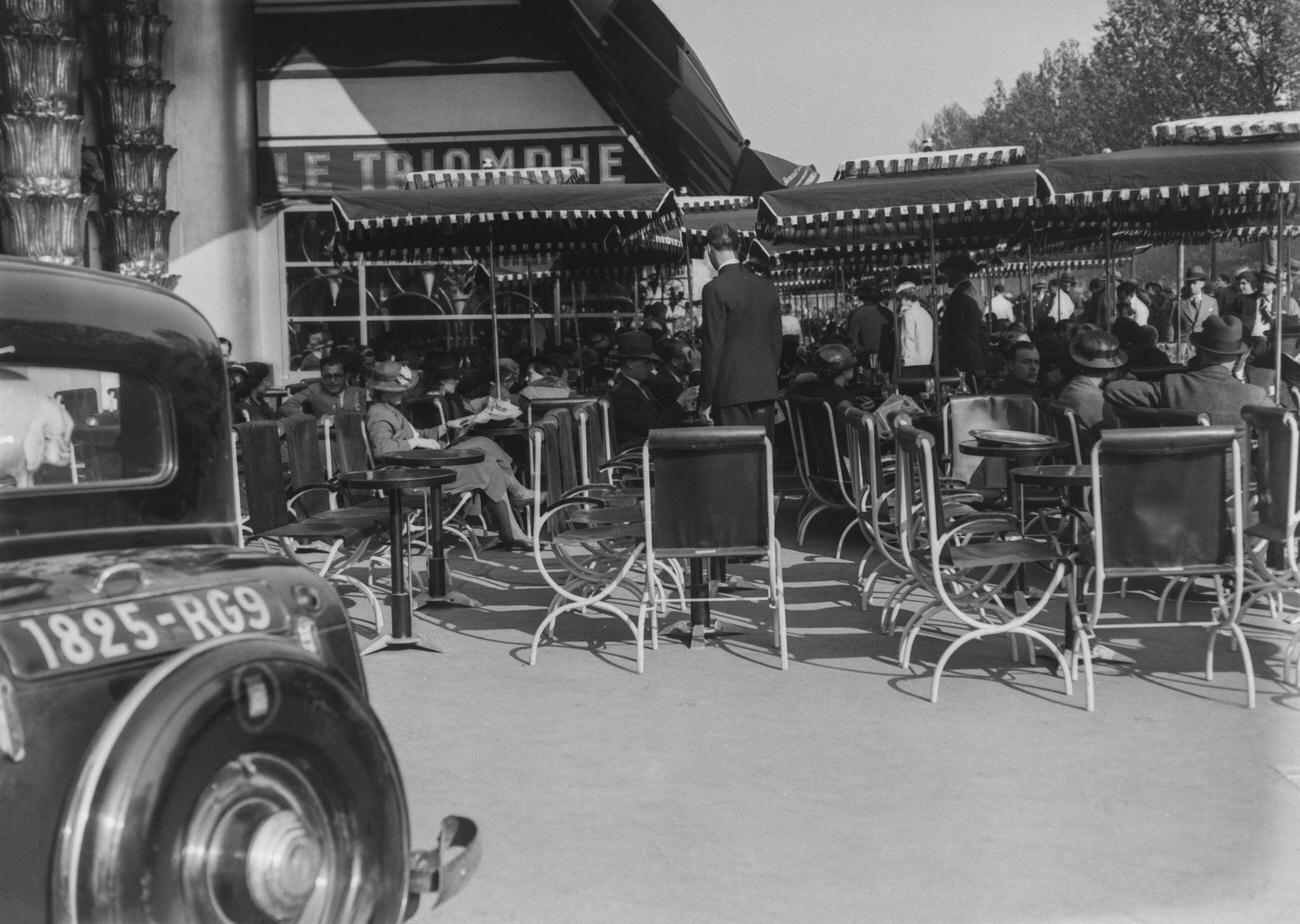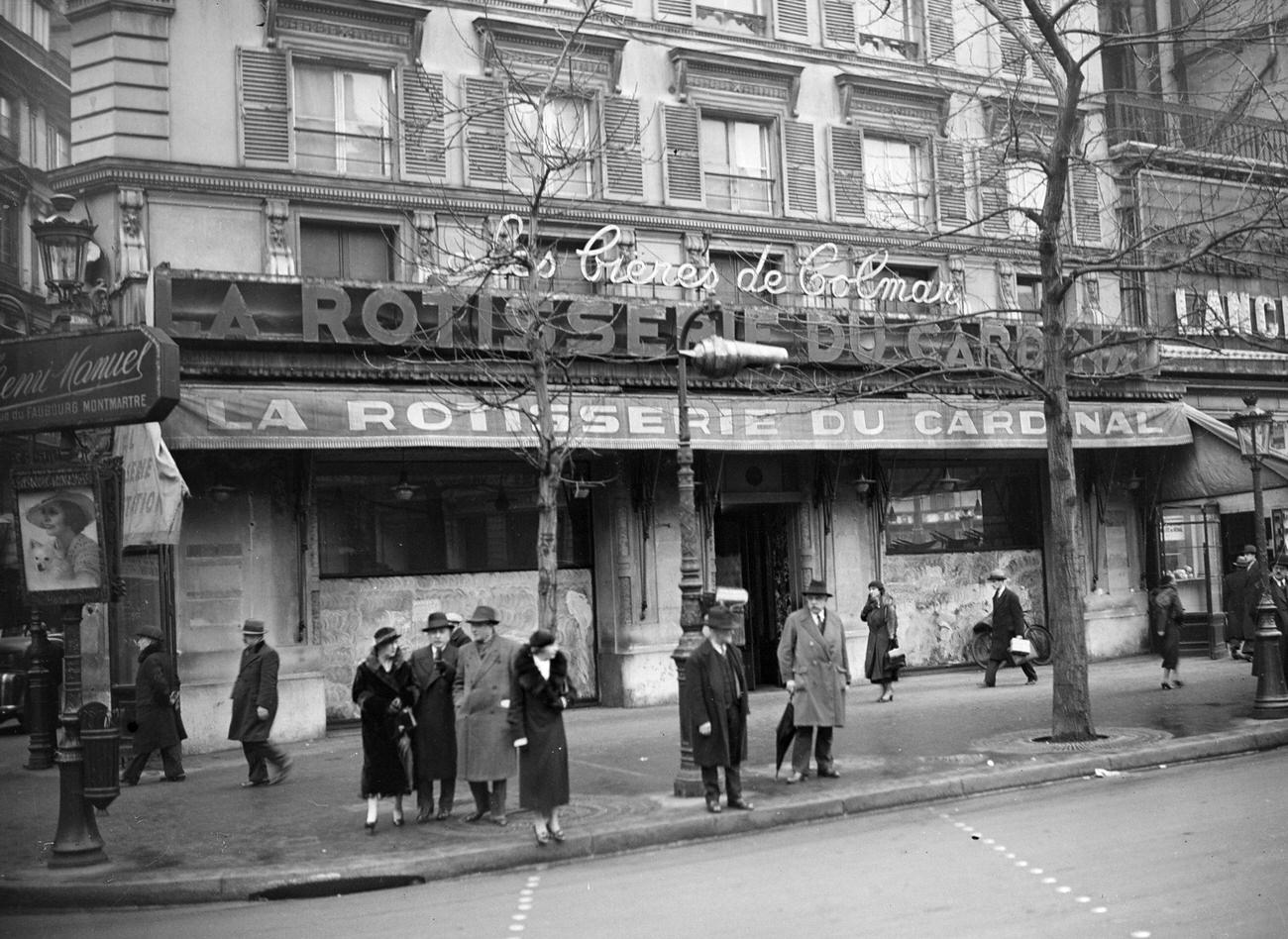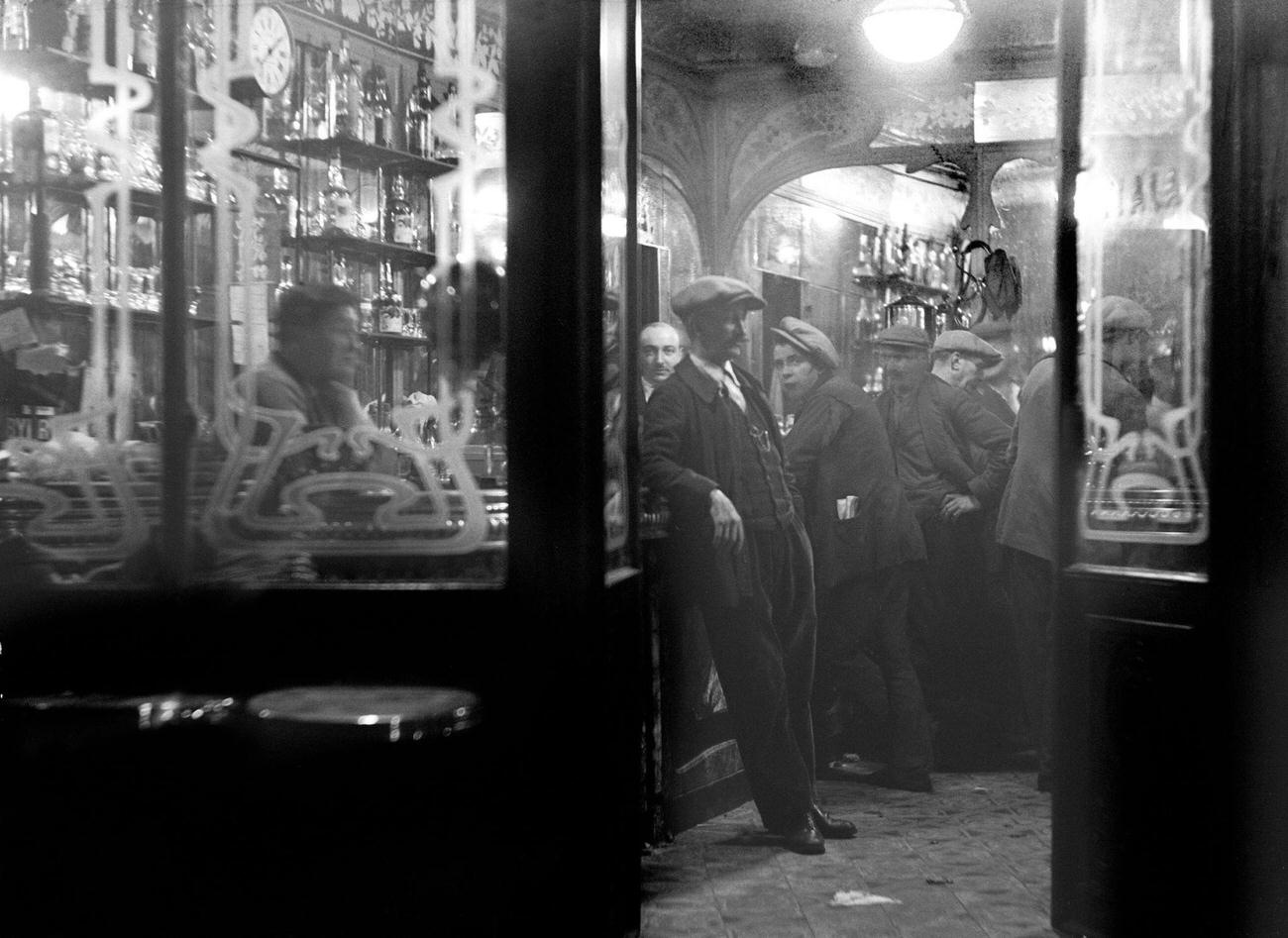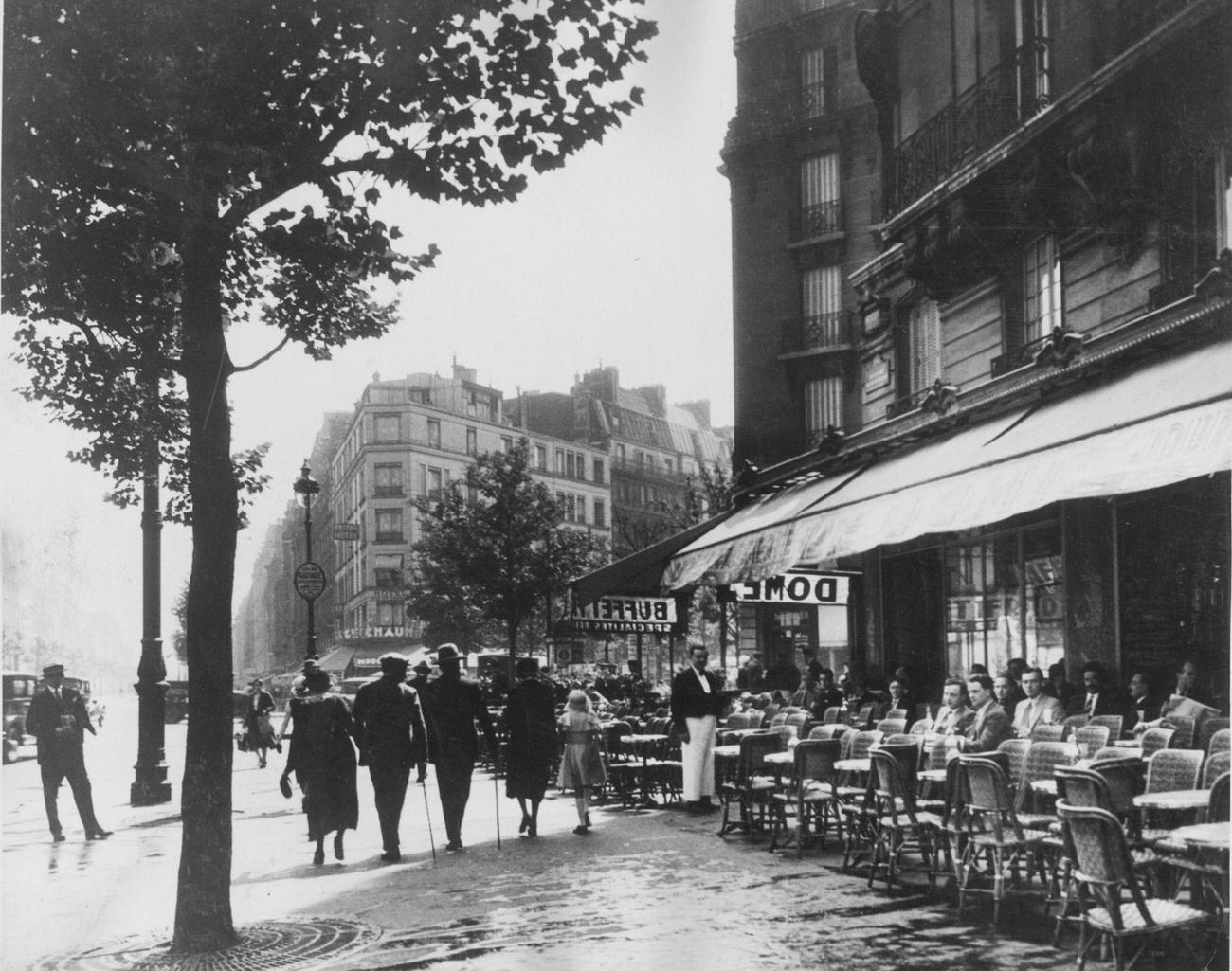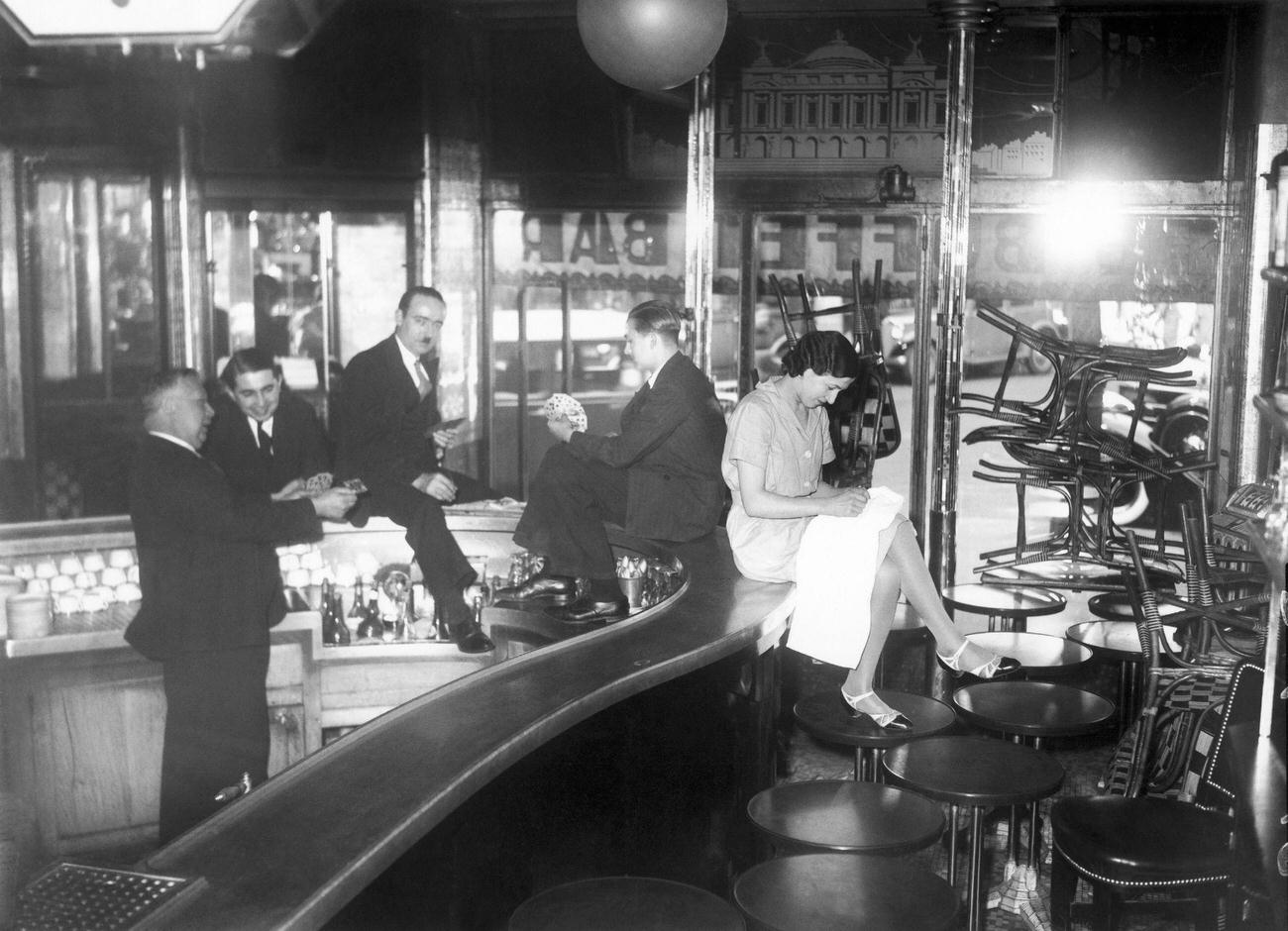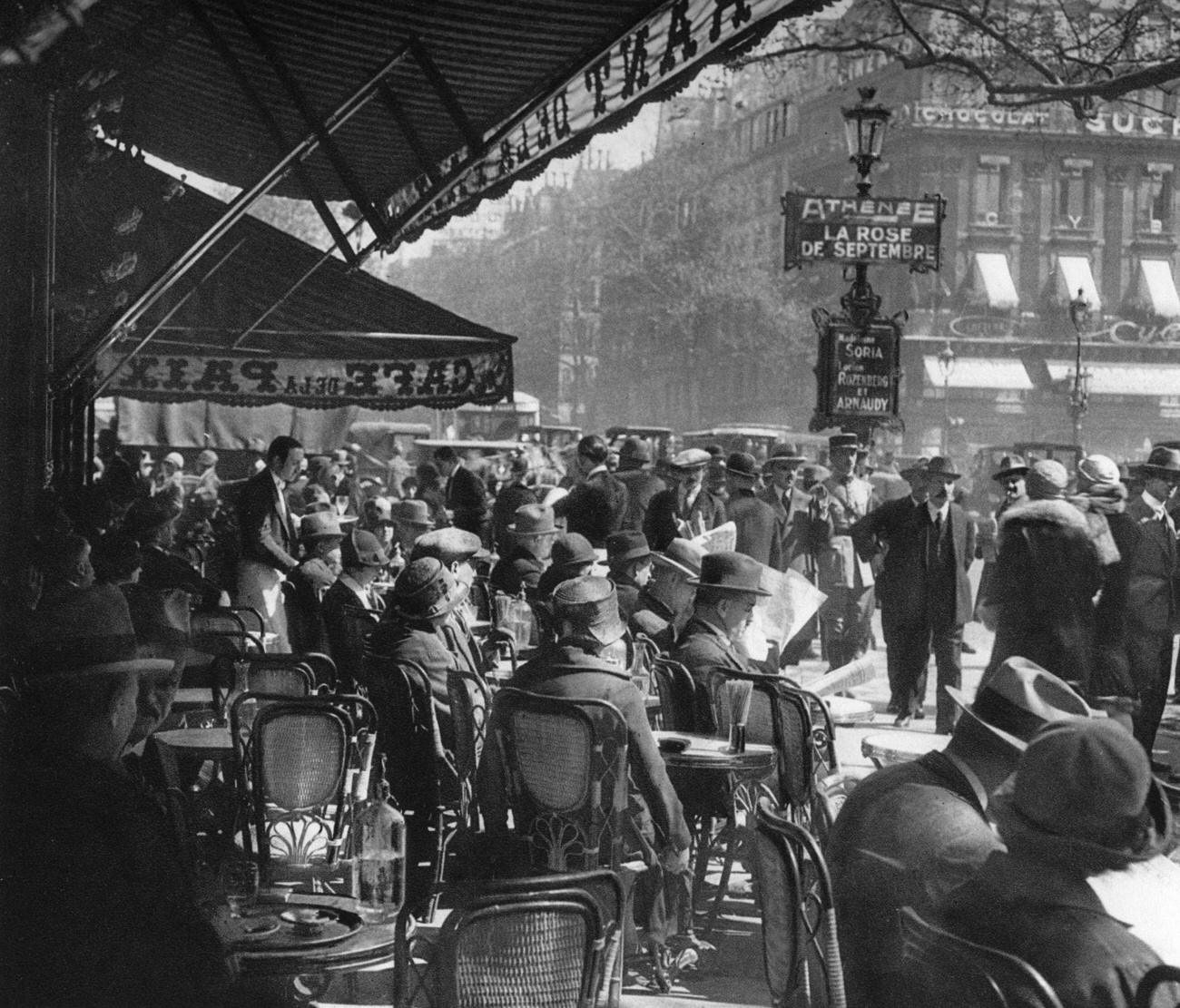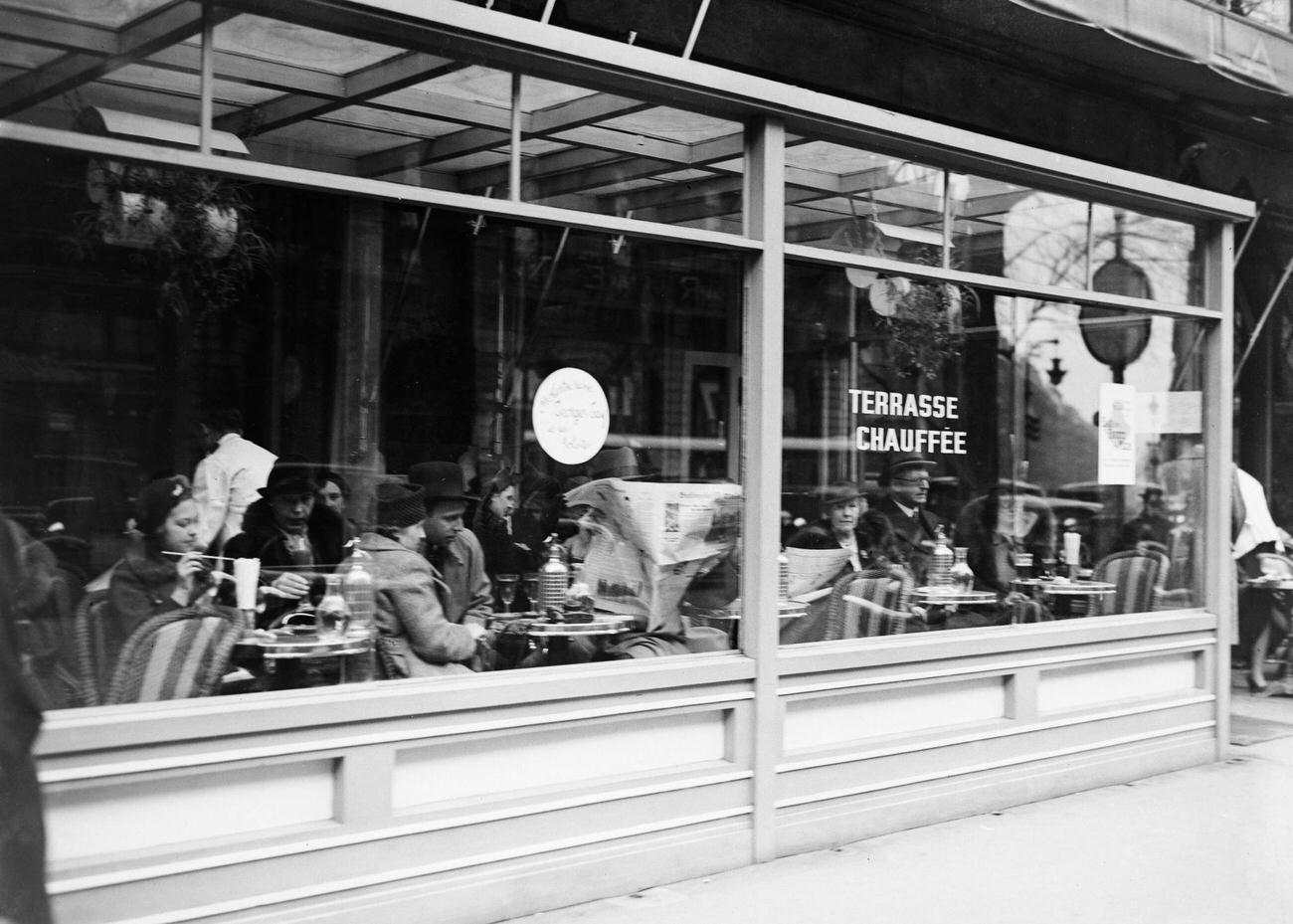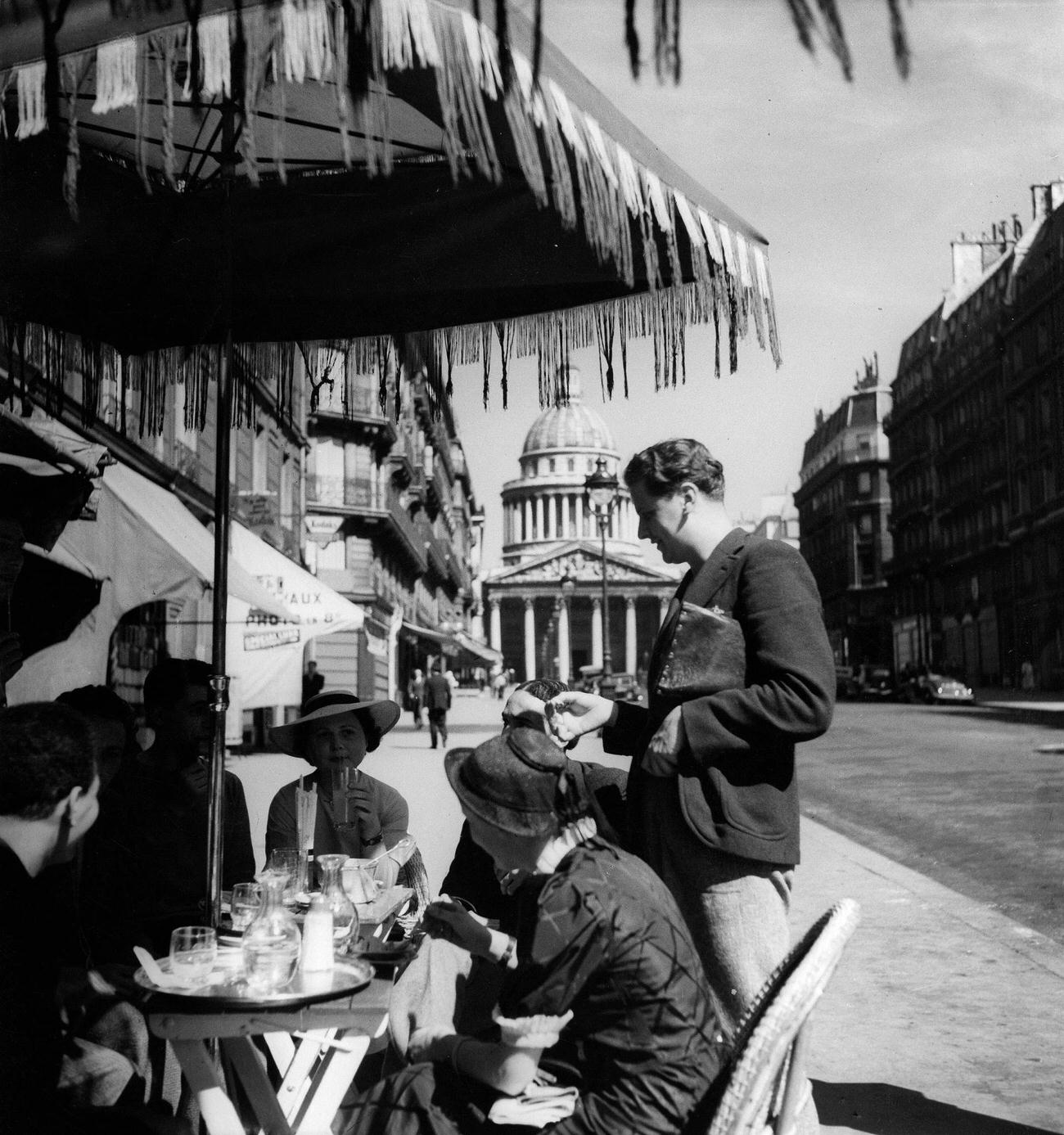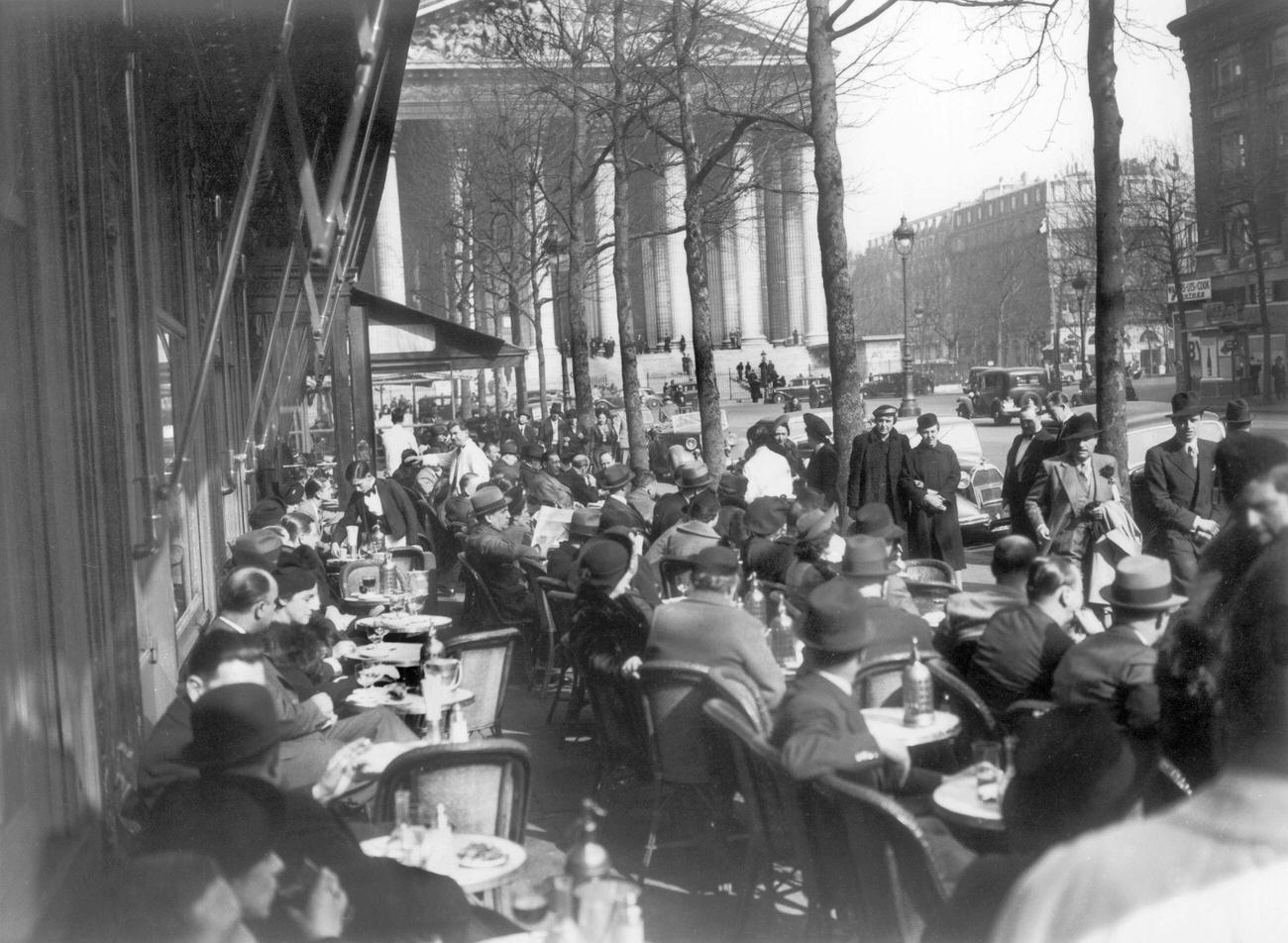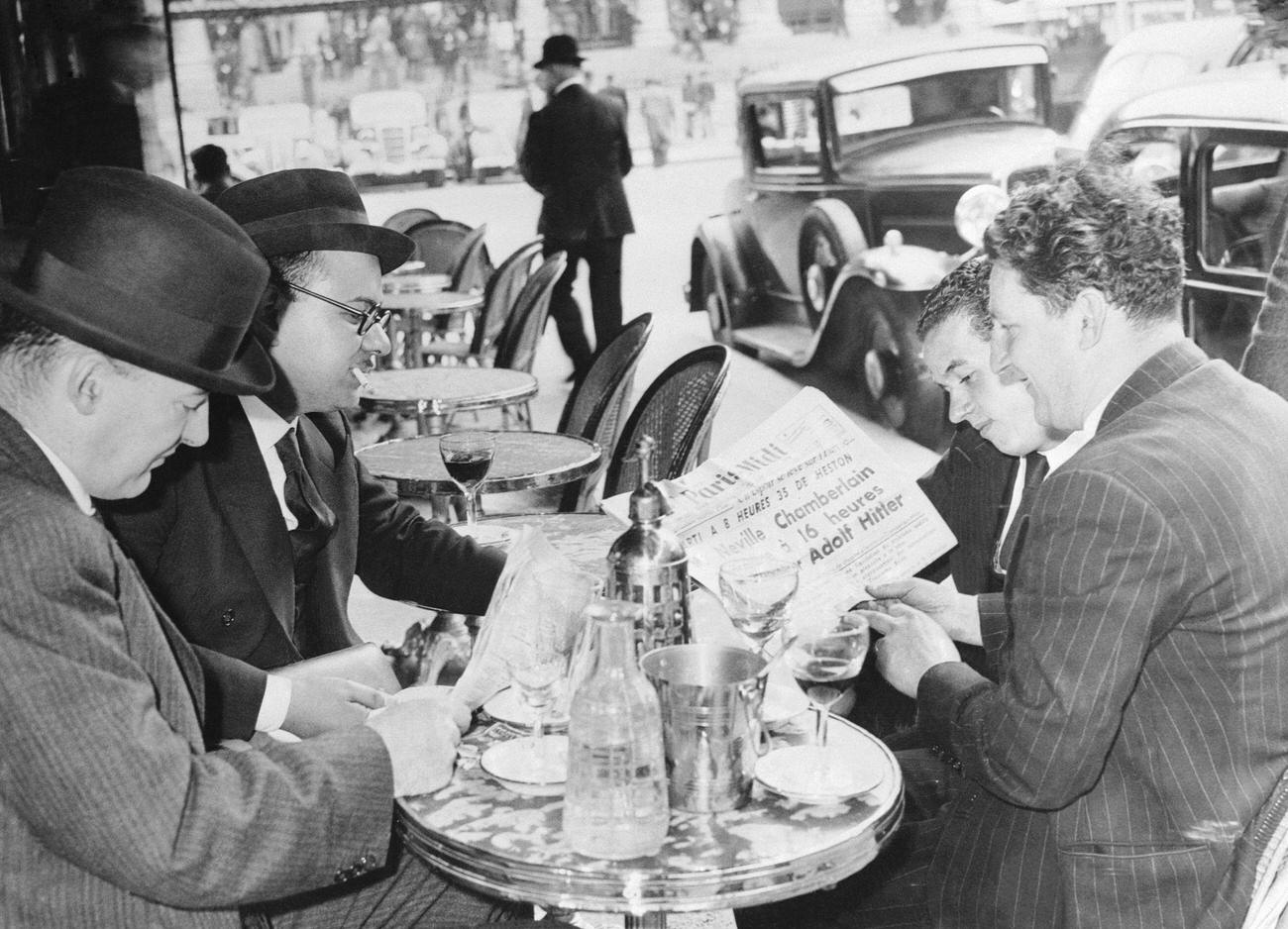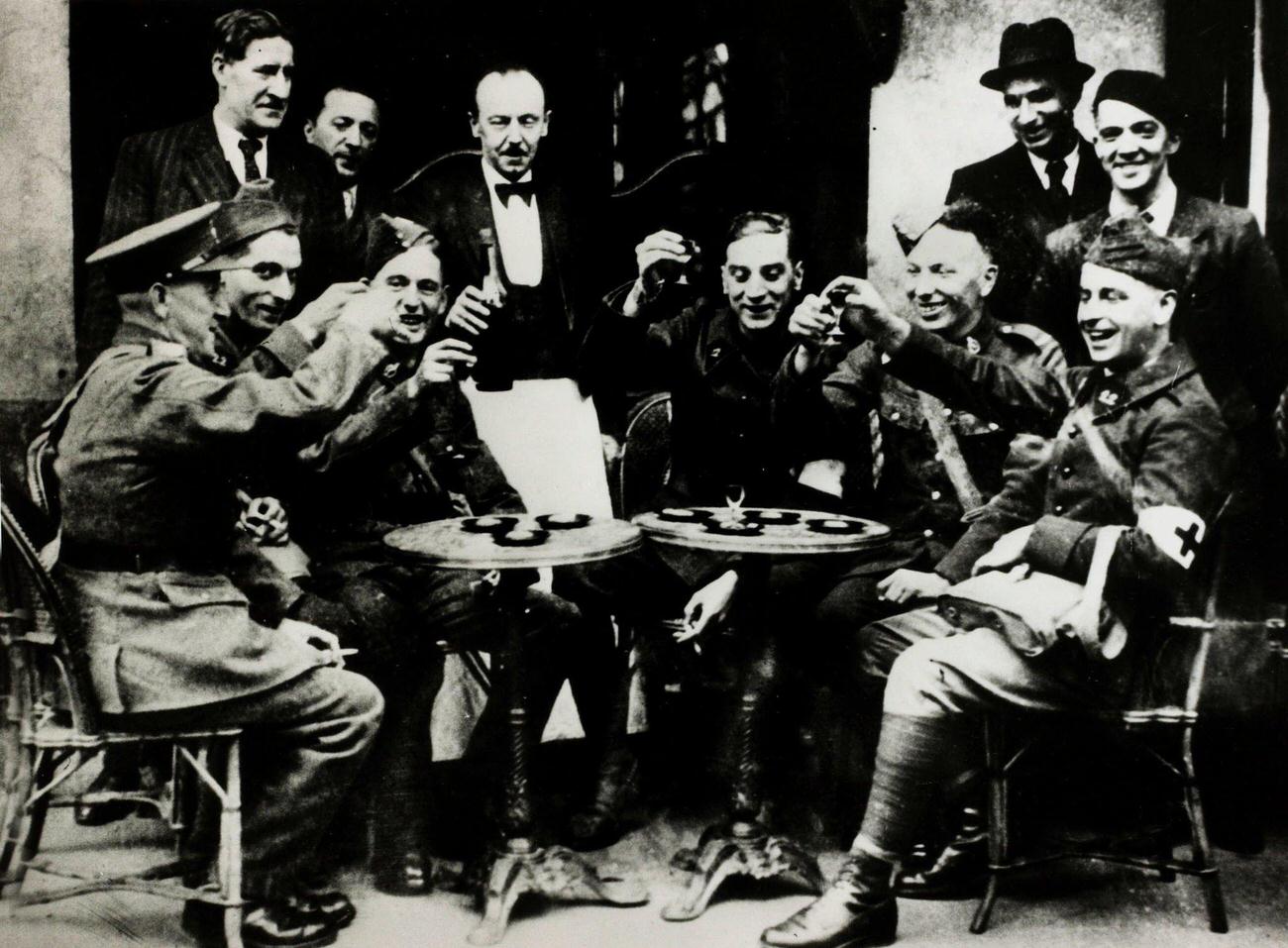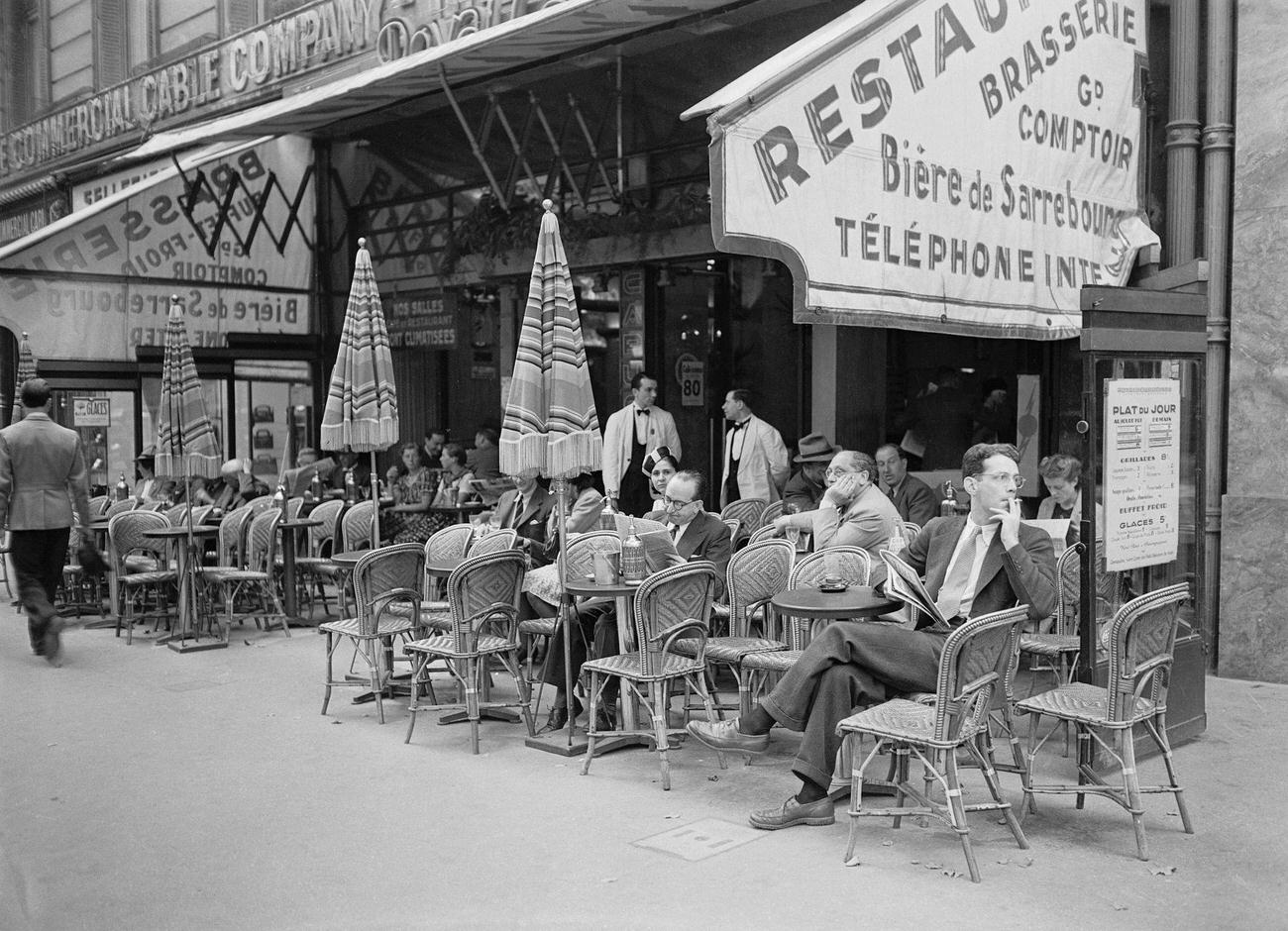As we explored in a previous article, the cafes of Paris in the 1920s, these establishments were central to the city’s artistic and intellectual life. Entering the 1930s, Parisian cafes continued to be vibrant social hubs, but the decade brought its own unique set of cultural and historical circumstances that influenced cafe culture.
The 1930s were marked globally by the Great Depression, and Paris was not immune to its effects. Economic hardships led to changes in the cafe scene. While some cafes struggled to maintain their previous level of business, others saw an increase in patronage as cafes remained relatively affordable places for leisure and socialization. This era saw a slight shift in clientele, with a broader cross-section of society frequenting these establishments.
Political Discussions and Intellectual Debates
The 1930s were a politically charged period, and Parisian cafes mirrored this shift. Cafes like La Coupole and La Closerie des Lilas, which had been popular among artists and writers, began to attract political activists and intellectuals. Discussions in cafes often centered around the rise of fascism in Europe, the Spanish Civil War, and the looming threat of another global conflict. These conversations marked a departure from the more artistically focused discourse of the 1920s.
Continued Legacy of Artistic and Literary Figures
Despite the growing focus on politics, cafes continued to be gathering places for artists and writers. Figures like Pablo Picasso, Ernest Hemingway, and Henry Miller were regulars in some of these establishments. Their presence maintained a connection to the artistic legacy of the previous decade, even as the nature of the conversations and the atmosphere of the cafes began to change.
Architectural Evolution and Atmosphere
The architectural and interior styles of Parisian cafes in the 1930s evolved from the Art Nouveau and Art Deco influences of the 1920s. There was a movement towards more modernist designs, reflecting broader changes in art and architecture. However, many cafes retained their traditional decor, providing a sense of continuity amidst a rapidly changing world.


